Discover the power of Staff Augmentation Best Practices in IT. Optimize team efficiency, transparent communication, and successful project outcomes.
Read Our Recent Blogs
The latest updates, stories, idea, guides from the Ontik team

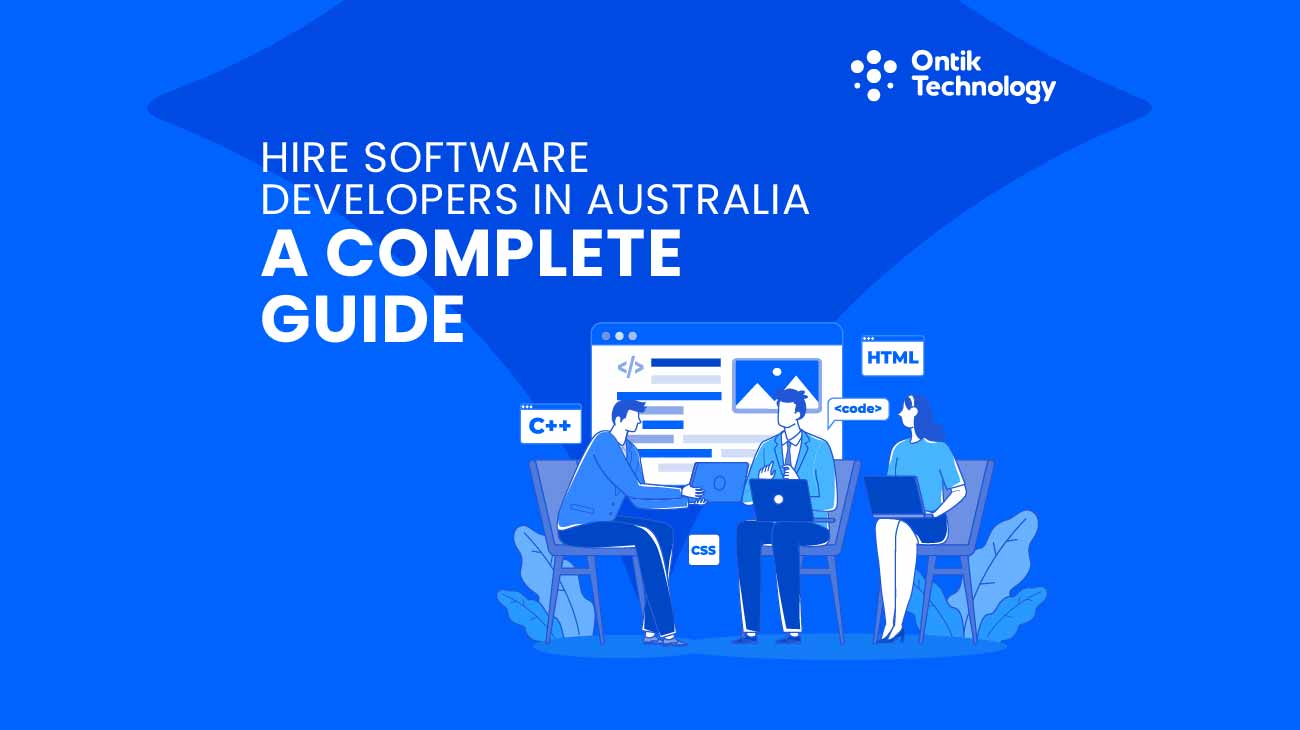

key takeaways
- Match business goals to the right roles: full-stack for MVP, backend for scale, DevOps/SRE for reliability, QA for quality, security for risk control.
- Know Australia pay ranges: salary + 11% super + leave; contractors run ~$600–$1,200/day and agencies add ~20–40% margins.
- Choose the best hiring model: permanent vs contract vs fixed-term, plus agency, RPO, or EOR based on speed, cost, and control.
- Win the market with a fast interview loop: scorecards, job-relevant assessments, and move from application to offer in ~2–3 weeks.
- Stay compliant: correct contractor classification (ABN/SOW), IP + NDA clauses, security onboarding, and a 30-60-90 plan to reduce churn.
Hiring developers in Australia can feel overwhelming. You need the right talent fast, but developer recruitment Australia markets are competitive and costs vary wildly.
This guide walks you through the entire process for hiring developers in Australia. You will learn which software developer roles to hire, how much they cost, where to find talent, and how to stay compliant. We cover everything from writing job descriptions to onboarding your first hire.
Whether you are a CTO scaling a startup, an HR leader building your first tech team, or a founder launching an MVP, this guide gives you a practical roadmap. At Ontik Technology, we help companies hire software engineers Australia-wide quickly and efficiently.
Let's get started.
How to Decide What Type of Developer to Hire in Australia
Selecting the right developer hiring strategy in Australia starts with project needs. Different goals require specific roles and seniority.
First, define your objective: Are you building an MVP, scaling a platform, or prioritizing reliability?
Your objective dictates the hiring strategy. For an MVP, hire generalist full-stack developers for speed. Scaling requires senior backend engineers skilled in distributed systems. Reliability issues demand DevOps or Site Reliability Engineers (SREs).
The hiring model (contractor for short-term flexibility, permanent for long-term ownership) must align with your budget, timeline, delivery risk, and time-to-market goals.
Matching Business Outcomes to Developer Roles
Here is a simple outcomes-based hiring framework. Match your business outcome to the right team composition and role.
Common scenarios and recommended roles:
- Speed to market: Hire full-stack developers who can handle both frontend and backend tasks
- System reliability: Bring in DevOps engineers or SREs to improve uptime and monitoring
- Product quality: Add QA automation engineers to catch bugs before production
- Data insights: Hire data engineers to build pipelines and analytics infrastructure
- Security concerns: Get security engineers to audit code and harden systems
- Mobile presence: Recruit iOS or Android developers for native mobile app development
- API development: Backend engineers with API design experience handle integrations
- User experience: Frontend developers plus UI/UX designers create polished interfaces
- Cloud migration: DevOps engineers manage infrastructure as code and deployments
- Technical leadership: Staff engineers or tech leads guide architecture decisions
This mapping helps you avoid hiring the wrong role. A full-stack developer cannot replace a dedicated DevOps engineer when uptime is critical.
Software Developer Roles in Australia Explained

Understanding software developer roles Australia and software engineer roles prevents mismatched expectations. Each role has specific deliverables and skill requirements.
Software engineers code and maintain features. Tech leads guide small teams technically. Architects design system solutions. Engineering managers focus on people and process. SREs ensure system reliability. QA engineers automate testing to prevent regressions. Clear roles streamline interviews, ensuring evaluation against correct criteria.
Frontend, Backend, and Full-Stack Developers
Frontend developers build everything users see and interact with. They work with React, TypeScript, HTML, and CSS to create responsive interfaces. A good frontend engineer cares about accessibility, performance, and browser compatibility.
Backend developers handle server-side logic, databases, and APIs. They use Node.js, Java, .NET, or Python to build services that scale. Backend work includes authentication, data processing, and third-party integrations.
Full-stack developers handle both frontend and backend tasks. They move faster on small teams but may lack deep specialization. Full-stack roles work well for MVPs and early-stage startups where versatility beats depth.
When you hire React developer Australia candidates or hire Node.js developer Australia specialists, match their technical skills to your tech stack. A React developer may struggle with Angular projects without ramp-up time.
Mobile, Data, DevOps, Security, and QA Engineers
When you hire remote mobile app developers Australia, focus on platform specialization. Mobile developers work on iOS or Android platforms. Native apps require Swift or Kotlin knowledge. Cross-platform developers use React Native or Flutter to build for both platforms at once.
Data engineers build pipelines that move and transform data. They work with SQL, Python, Spark, and cloud data warehouses. Data roles make sense when analytics or machine learning drive your product.
When you hire DevOps engineers Australia, look for automation expertise. DevOps engineers automate deployment, monitoring, and infrastructure. They use tools like Kubernetes, Terraform, and CI/CD pipelines. DevOps roles reduce manual work and improve reliability.
Security engineers audit code, configure access controls, and respond to vulnerabilities. Security matters more in fintech, healthcare, and any product handling sensitive data.
QA engineers write automated tests and build test frameworks. They catch bugs before users do. Automation testing saves time compared to manual QA as your codebase grows.
Each role solves a specific problem. Hiring the wrong specialty delays progress.
Developer Seniority Levels in Australia
Leveling candidates correctly prevents frustration on both sides. A misleveled hire burns budget or quits within months.
Junior vs Mid-Level Software Engineers
Junior developers (1 to 3 years experience) need guidance and structure, learning quickly with mentorship and code reviews. They work best on well-defined tasks with clear acceptance criteria. Expect juniors to ask questions frequently and require code review on most changes.
Mid-level developers (3 to 6 years) work independently on defined features and make sound technical decisions within their scope. They understand the full development lifecycle and can estimate their own work accurately. Mid-level engineers mentor juniors and participate in design discussions.
Senior Software Engineers and Risk Reduction
Senior software engineers (6+ years) offer system design skills, mentorship, and handle ambiguous problems, reducing risk due to past experience. They make architectural decisions, lead technical initiatives, and unblock other engineers. Senior hires accelerate team velocity and improve code quality across the board.
Staff and Principal Engineers Explained
Staff and Principal engineers (10+ years) operate at the architecture level, influencing technical strategy across teams with deep domain expertise. They define technical standards, evaluate build vs buy decisions, and mentor senior engineers. These roles suit companies with complex systems or significant technical debt.
How to Avoid Misleveling Candidates
Leveling checklist:
Red flags include candidates who oversell experience, lack basic problem-solving skills, or cannot explain past decisions. Always calibrate interview signals to the level you are hiring for.
Australia Developer Hiring Landscape (Market Overview)
Australia's developer job market is highly competitive, with demand exceeding talent, especially in major cities like Sydney and Melbourne, which hold the largest talent pools.
Brisbane and Canberra are growing, while Perth and Adelaide have limited local talent (remote hiring helps). Australian software developers now prioritize remote flexibility, learning budgets, and career growth over salary alone.
Time-to-hire is typically 4 to 8 weeks for mid-level roles, with senior and specialist roles (like DevOps, data engineering, and security) taking longer due to skill shortages and intense competition from startups, multinationals, and remote-first companies. Slow hiring processes often result in losing candidates.
Typical Hiring Timelines by Role
Understanding realistic timelines helps set proper expectations:
Junior to Mid-Level Developers: 3 to 5 weeks from job posting to offer acceptance. Competition is moderate and candidate pools are larger.
Senior Developers: 6 to 10 weeks due to smaller talent pools and longer evaluation processes. Senior candidates often interview with multiple companies simultaneously.
Staff and Principal Engineers: 10 to 16 weeks because these candidates are rarely active job seekers. Requires executive involvement and competitive compensation packages.
Specialized Roles (DevOps, Security, Data): 8 to 12 weeks minimum. Limited supply means extended search periods and higher offer rejection rates.
Faster hiring requires pre-built talent pipelines, streamlined interview loops, and decisive offer negotiations.
Cost to Hire Software Developers in Australia
Compensation varies by role, seniority, city, and tech stack. Understanding software engineer salary Australia ranges and contractor day rate Australia pricing prevents budget surprises.
Base salary is just one piece. You also pay superannuation (11% of base salary), bonuses, equity, and benefits. Contractors charge day rates that seem high but include no super or leave.
Tech stack affects pay. Developers with expertise in Go, Rust, or Kubernetes earn premiums. Frontend React developers fall in the mid-range. Legacy stacks like PHP pay less.
City matters too. Sydney and Melbourne salaries run 10-20% higher than Brisbane or Adelaide. Remote roles let you access talent outside expensive markets.
What's Included in Employee Compensation
Australian software engineer pay includes more than base salary. Employers legally must add 11% superannuation, four weeks annual leave, and ten days sick leave.
Companies may offer performance bonuses or equity grants (good for startups). Extra benefits like learning budgets, WFH stipends, and flexible hours attract talent.
When budgeting, factor in the total employment cost: a $120k salary costs over $133k with super and leave.
Contractor Costs and Agency Margins
Australian IT contractor rates, typically charged daily or hourly, range from $600 to $1,200 per day based on expertise. Agencies add a 20-40% margin, meaning a contractor might get $650 from a $1,000 billed day, covering recruitment and admin.
Direct hiring saves these margins but requires more compliance from you. Contractors are ideal for short projects or specialized, fast expertise, while permanent hires suit long-term needs and team continuity.
Best Hiring Models for Developers in Australia
Different hiring models balance speed, control, cost, and compliance. Choose based on your priorities.
Options include: in-house recruiting (full control, requires resources), RPO (partner handles end-to-end hiring), developer recruitment agencies (quick individual role filling), and Employer of Record (EOR) services (hiring on your behalf while you are overseas).
Hiring model comparison:
Use agencies when you need someone in two weeks. Choose RPO if you are hiring five-plus engineers per quarter. EOR works when you want Australian talent but lack a local entity.
At Ontik Technology, we combine speed and quality by maintaining vetted talent pools. You get shortlists in days instead of weeks.
Permanent vs Contract vs Fixed-Term
Hiring models for Australian developers include:
Permanent: Offers long-term commitment, builds institutional knowledge, includes probation (3 to 6 months) and notice periods (2 to 4 weeks).
Contract: Provides flexibility for projects, no notice period, costs more per day, but avoids super, leave, and benefits.
Fixed-term: (6 to 12 months) Balances the two, suitable for maternity cover, project work, or testing fit before permanent conversion.
Contract vs Permanent vs Fixed-Term Comparison:
Misclassification of contractors as employees carries compliance risks, including back-pay claims and penalties.
Remote, Hybrid, and City-Based Hiring in Australia
Work location affects who you can hire and how fast you fill roles. Remote policies open access to talent across the country.
How to Hire Remote Developers in Australia
When you hire remote developers Australia, you tap developers in Brisbane while your office sits in Sydney. You avoid city salary premiums and access a wider talent pool. Remote work requires solid security controls, collaboration tools, and onboarding processes.
Remote vs Hybrid vs Onsite Comparison:
Hybrid Australian teams require developers to be onsite 1 to 3 days weekly, offering flexibility with some in-person collaboration. This requires office space.
City-based, onsite hiring restricts the talent pool but is favored by early-stage startups for faster movement and culture building where face-to-face interaction is key.

Remote work checklist:
- Provide laptops with encrypted drives
- Set up VPN access for secure connections
- Use MDM (Mobile Device Management) for device tracking
- Define equipment allowances or home office stipends
- Clarify communication norms and working hours
Security becomes critical with remote developers. Access controls, two-factor authentication, and regular security training reduce risk in software development projects.
Custom software projects and app development work especially benefit from clear remote policies. Australian teams working across time zones need structured communication protocols.
City-by-City Developer Hiring Overview
When you hire developers Sydney, you get the deepest talent pool in Australia. You will find senior engineers, specialists, and diverse tech stacks. Competition is fierce and salaries run high. Sydney suits scale-ups and enterprises needing deep expertise.
Hire developers Melbourne for rival talent density. The city has strong startup and fintech scenes. Salaries match Sydney but cost of living is slightly lower. Melbourne attracts creative developers and design-focused engineers.
Brisbane provides a smaller but growing pool. Salaries are 10% to 15% below Sydney. Remote work helps access Brisbane talent without relocating. Brisbane works well for mid-stage startups watching budget.
Canberra has niche talent in government tech and security clearances. Developers here often work on public sector projects. Canberra suits companies with government contracts or defense work.
Perth and Adelaide offer limited local pools. Remote hiring makes these cities viable. Salaries are lower but fewer specialists mean longer searches.
City-by-City Comparison:
Choose your city based on talent needs and budget. Remote-first models let you hire the best person regardless of location.
Where to Find Software Developers in Australia
When you need to find developers Australia, a multi-channel approach works best. Relying on one source limits your pipeline.
Source Australian developers via LinkedIn (use Boolean search; expect 10-20% InMail response), GitHub (search by code and contact project contributors).
Also, meetups/conferences (network for better conversion), and university partnerships (e.g., UoM, UNSW, UQ) for junior hires via internships.
Referrals remain the highest-quality source. Pay referral bonuses ($2k - $5k) to employees who bring in successful hires. Referred candidates close faster and stay longer.
At Ontik Technology, we combine these channels to build pre-vetted talent pools. You skip the sourcing grind and start interviewing day one.
30-Day Sourcing Sprint
A focused sourcing plan fills your developer pipeline Australia quickly. Here is a week-by-week breakdown.
Week 1: Set up your ATS (Applicant Tracking System) or CRM. Define pipeline stages (sourced, contacted, responded, screened, interviewed). Write your outreach templates for LinkedIn and email.
Week 2: Source 100+ profiles using LinkedIn, GitHub, and job boards. Tag candidates by role, seniority, and location. Send personalized outreach messages to your top 30 matches.
Week 3: Follow up with non-responders. Post your role to niche job boards and Slack communities. Ask your team for referrals and activate your referral bonus.
Week 4: Screen candidates who responded. Schedule intro calls with qualified profiles. Move promising candidates into technical assessment stage.
Track conversion rates at each stage. Typical drop-off is 70-80% from outreach to response. You need 100 sourced candidates to yield 5-10 qualified applicants.
How to Write a High-Converting Job Description
Your software engineer job description Australia serves as a marketing document. It should attract the right candidates and filter out bad fits using a clear developer JD template.
Focus on outcomes ("reduce page load times") over tasks ("write React components"). Use outcome-based language to show impact.
Clearly separate 3 to 5 must-have requirements from nice-to-have skills; avoid long technology lists.
Include salary or day rate for transparency, attracting suitable candidates and filtering mismatches early.
Describe the interview process (stages, timeline, take-home tasks) upfront so candidates know what to expect.
Job description template blocks:
- Hook: What makes this role exciting? (2 to 3 sentences)
- Outcomes: What will you achieve in this role? (3 to 5 bullet points)
- Must-have skills: Non-negotiable technical skills for software development (3 to 5 items)
- Nice-to-have skills: Bonus skills that help but are not required (2 to 3 items)
- Compensation: Salary range, equity, benefits
- Process: Interview stages and timeline
- About us: Quick company pitch highlighting your custom software solutions or app development focus (2 to 3 sentences)
Keep it under 500 words. Long job descriptions lose reader attention. Australian developers appreciate transparency about hourly rates or salary bands upfront.
How to Screen and Interview Developers in Australia
Structured developer screening in Australia prevents bias and improves signal. Use a scorecard to evaluate every candidate consistently on experience, tech stack fit, and communication. Before the 20 to 30 minute screening call, review portfolios for code quality. During the call, assess role alignment, salary expectations, and clarity. Red flags include candidates who cannot explain their work or lack curiosity. Shortlist the top three to five candidates for technical review.
Technical Assessments and System Design Assessments should mimic actual work. Choose between take-home tasks limited to four hours or live pair programming sessions that test collaboration. Ensure fairness by standardizing tasks and calibrating evaluation rubrics across interviewers.
For senior roles, incorporate system design interviews. Ask candidates to architect systems to evaluate their ability to manage tradeoffs, scalability, and database design. Match the assessment complexity to the actual daily responsibilities.
Designing a Fast Interview Loop Create a four stage process to balance speed and quality:

- Screening call to assess fit.
- Technical assessment via take-home or live coding.
- Technical deep dive to review decisions.
- Culture fit interview with the team.
Spread these over two weeks rather than scheduling marathon days. Interviewers must score candidates independently before debriefing to avoid groupthink. Hiring committees can help review borderline cases to maintain a high bar. Speed is critical, so aim to move from application to offer within three weeks to secure top talent.
Compliance and Legal Requirements When Hiring Developers in Australia
Compliance protects your company from legal risk. Understanding contractor vs employee Australia rules and developer contract Australia requirements is critical.
Permanent employees need written contracts that outline salary, role, probation period, notice period, and termination conditions. Probation typically lasts three to six months. Notice periods are two to four weeks for most roles.
Contractors must have an ABN and operate as independent businesses. Contractor agreements should define scope, deliverables, payment terms, and IP ownership. Misclassifying employees as contractors leads to penalties and back-pay claims.
Compliance checklist:
- Use written employment contracts for all hires
- Include IP assignment clauses in contracts
- Require NDAs for sensitive projects
- Verify contractor ABN status before engagement
- Pay superannuation on time for employees
- Track leave entitlements accurately
- Follow fair work guidelines for terminations
When in doubt, consult an employment lawyer. Compliance mistakes cost more to fix than to prevent.
Contractor Compliance (ABN, Classification, Agreements)
When you hire software contractors Australia, they need a valid ABN to invoice you. ABN contractors must be verified on the ABN Lookup website before engagement.
Classification risk happens when contractors behave like employees. Red flags include working set hours onsite, using company equipment exclusively, and having no other clients. The Australian Taxation Office (ATO) can reclassify contractors as employees and demand back super and leave.
Use clear Statements of Work (SOW) for each contractor project. SOWs define deliverables, timelines, and payment milestones. SOWs reduce scope creep and set expectations.
Contractor agreements should address IP ownership, confidentiality, and termination terms. Make sure the contractor assigns all IP to your company upon creation.
Proper contractor management reduces compliance risk.
IP, Confidentiality, and Security Basics
IP assignment software developers clauses ensure your company owns code created by employees and contractors. Include IP assignment language in every employment contract and contractor agreement.
Australia recognizes moral rights for creators. You cannot remove moral rights but can get written waivers for commercial use. This matters less for software but good to know.
NDA for developers (Non-Disclosure Agreements) protect confidential information. Use NDAs before sharing sensitive data during interviews or onboarding. Make sure NDAs define what is confidential and how long the obligation lasts.
Security onboarding includes access provisioning, equipment setup, and training. Use least-privilege access controls so new hires only access systems they need. Enable two-factor authentication on all accounts.
Open-source policies clarify what code employees can release publicly. Some companies allow contributing to open-source projects. Others restrict it. Set a policy early to avoid conflicts.
Strong IP and security practices prevent costly disputes later.
Making Offers, Onboarding and the First 90 Days
A great offer process converts candidates and reduces drop-off. Speed and clarity matter in developer onboarding Australia processes.
Offer checklist:
- Verbal offer first to gauge interest and handle counteroffers
- Written offer letter within 24 hours of verbal acceptance
- Include base salary, super, equity, bonus structure, and start date
- Clarify probation period and notice requirements
- Attach employment contract for review
Counteroffer handling is common. Candidates often receive counter-offers from current employers. Ask about their motivations early. If they are leaving for career growth or culture fit, more money will not change that.
Onboarding starts before day one. Send welcome emails, equipment, and access credentials ahead of time. Assign a buddy or mentor to answer questions.
30-60-90 plan engineer template:
- First 30 days: Learn the codebase, meet the development team, ship small fixes
- 60 days: Own a feature end-to-end with guidance
- 90 days: Work independently, contribute to planning discussions
Regular check-ins during the first 90 days catch issues early. New hires who struggle in the first month often churn within six months.
Strong onboarding reduces time-to-productivity and improves retention.
How to Retain Software Developers in Australia
Hiring is only half the battle. A strong developer retention strategy helps you retain software engineers Australia long-term and keeps your team stable and productive.
Career growth is the top retention driver. Developers want clear paths to senior, staff, or leadership roles. Create a career ladder that shows progression milestones and skill requirements.
Learning budgets signal investment in your team. Allocate $2k - $5k per year for courses, conferences, or books. Developers who learn new technical skills stay engaged.
Manager quality affects retention more than salary. Bad managers cause attrition. Train your engineering managers on one-on-ones, feedback, and conflict resolution.
Retention levers:
- Career ladders with transparent promotion criteria
- Annual learning budgets for professional development
- Regular one-on-ones focused on growth and feedback
- Mentorship programs pairing juniors with seniors
- Flexible work arrangements (remote software developers, hybrid, async)
- Competitive compensation reviews every 12-18 months
Stay interviews catch issues before they become resignations. Ask developers what they enjoy, what frustrates them, and what would make them leave. Act on feedback from your team of developers.
Burnout prevention matters. Rotate on-call duties fairly. Monitor workload and adjust timelines when teams are stretched. Burnout drives top talent and best software developers away.
Strong retention reduces hiring costs and preserves institutional knowledge. The right talent stays when you invest in their growth.
Common Mistakes When Hiring Developers in Australia
Avoid these common pitfalls that delay hiring or result in bad matches:
Mistake 1: Writing overly broad job descriptions. Listing 20+ technologies scares away qualified candidates. Focus on 3 to 5 must-have skills and clearly separate them from nice-to-haves.
Mistake 2: Moving too slowly. Top candidates receive multiple offers within days. Delays of more than 2 weeks between interview stages result in 40%+ candidate drop-off rates.
Mistake 3: Misleveling candidates. Hiring a mid-level developer into a senior role creates unrealistic expectations. They struggle, get frustrated, and leave within 6 months. Always match candidate experience to role requirements.
Mistake 4: Skipping reference checks. Reference checks reveal red flags about work style, collaboration ability, and technical claims. Skip them at your own risk.
Mistake 5: Ignoring cultural fit. Technical skills matter, but cultural misalignment causes friction. Evaluate values, communication style, and team compatibility during interviews.
Mistake 6: Underestimating total employment costs. Budgeting base salary only ignores super (11%), leave, benefits, and equipment. A $120k role actually costs $140k+ annually.
Mistake 7: Poor onboarding. Throwing new hires into the deep end without structure leads to confusion and early attrition. Invest in proper onboarding from day one.
Learn from others' mistakes. Structured processes prevent most
Why Companies Choose Ontik Technology to Hire Developers
Many companies choose to work with specialized partners to reduce hiring time and risk. One such provider is Ontik Technology.
At Ontik Technology, we solve this by maintaining a vetted talent pool of skilled developers across Australia. You get access to pre-screened software engineers in Australia who match your tech stack, seniority, and timeline requirements.
Why choose Ontik Technology:
Our vetting process includes technical skills assessment, portfolio reviews, and reference checks. We only present top software developers in Australia who meet your hiring bar. This saves you from wasting time on unqualified applicants looking to hire.
We offer flexible hiring models for every business need. Need a contractor for three months? We have you covered. Want to build a dedicated development team? We can scale with you. Looking for permanent developer Australia hires? We handle the entire recruitment process.
Our speed is a key advantage, with most clients receiving shortlists in three to five days, preventing lost opportunities. We manage the full lifecycle, from defining role requirements to developer onboarding in Australia, including negotiations, contract setup, and first-week support.
How it works:
- Discovery call: We learn about your project, tech stack, and team composition needs
- Shortlist delivery: We send three to five vetted candidates within days
- Interview support: We coordinate schedules and provide interview guides
- Offer and onboarding: We handle paperwork and onboarding logistics
Who we serve:
Startups scaling fast benefit from our contractor and permanent placement services. You get access to senior engineers without building an in-house recruiting team. We understand startup time zones and rapid product development cycles.
Enterprises needing niche expertise use our staff augmentation model. We find specialists in AI and machine learning, blockchain development, and cloud solutions.
Teams launching MVPs rely on our MVP development services. We match you with full-stack developers who ship high-quality software fast.
Proof points:
Our clients reduce time-to-hire by 60% on average. We maintain a 90% candidate satisfaction rate. Our replacement guarantee means if a hire does not work out in the first 90 days, we find a replacement at no extra cost.
We have placed remote developers and onsite teams across Sydney, Melbourne, Brisbane, and remote locations throughout Australia. Our expertise spans web development, mobile app development, UI/UX design, and business intelligence.
Ready to hire developers? Book a call with our team or request a shortlist today. We make hiring simple so you can focus on building great products.
Conclusion
Hiring software developers in Australia requires clarity on roles, costs, and compliance. Start by matching your business needs to the right software developer in Australia role and seniority level. Use structured interviews and fair assessments to evaluate candidates consistently across your hiring process.
Speed matters in a competitive developer job market Australia. Streamline your process to move from application to offer in two to three weeks. Strong onboarding and retention strategies keep top software developers on your team of developers long-term.
At Ontik Technology, we help development companies hire vetted developers for hire fast. Whether you need contractors, permanent hires, or a dedicated team for custom software development, we have the right talent and best practices to support your growth.
Ready to build your team? Get started today.
FAQ's
How much does it cost to hire a software developer in Australia?
The cost to hire software developer Australia varies by level. Junior developers cost $70k to $90k annually. Mid-level roles range from $90k to $130k. Senior developers earn $130k to $180k. Staff engineers command $180k to $250k+. Add 11% superannuation plus benefits for total cost.
Contractor vs permanent: which is better?
Contractors offer flexibility for short-term projects but cost more daily. Permanent hires provide long-term commitment and cultural integration. Choose contractors for urgent or project-based needs, permanent for ongoing ownership and team continuity.
Where do I find good developers in Australia?
LinkedIn, GitHub, and referrals drive the best results. Sponsor meetups and conferences for networking. Partner with universities for junior talent. Use vetted talent pools from partners like Ontik Technology for pre-screened software developers for hire ready to interview.
How long does hiring typically take in Australia?
The hiring timeline Australia averages four to eight weeks for mid-level roles. Senior positions take longer due to limited candidate pools. Fast processes move from application to offer in two weeks. Slow processes stretch to three months with extended interview stages.
Which Australian city is best for hiring developers?
Sydney and Melbourne offer the deepest talent pools and most specialists. Brisbane provides growing talent at lower salaries. Canberra suits government and security roles. Remote hiring opens access to all cities and expands your talent pool significantly.
Why Should I hire developers?
You should hire developers because they turn your idea into a real product and help you grow faster with less risk.
- Build and launch faster so you can start getting users and feedback
- Avoid “almost working” tools that break when you scale
- Save money long-term by reducing bugs and rework
- Improve user experience with faster, smoother apps
- Protect your business with strong security and data safety
- Scale confidently as traffic, payments, and features grow
- Automate tasks to reduce manual work
- Get a tech partner who guides smart product decisions
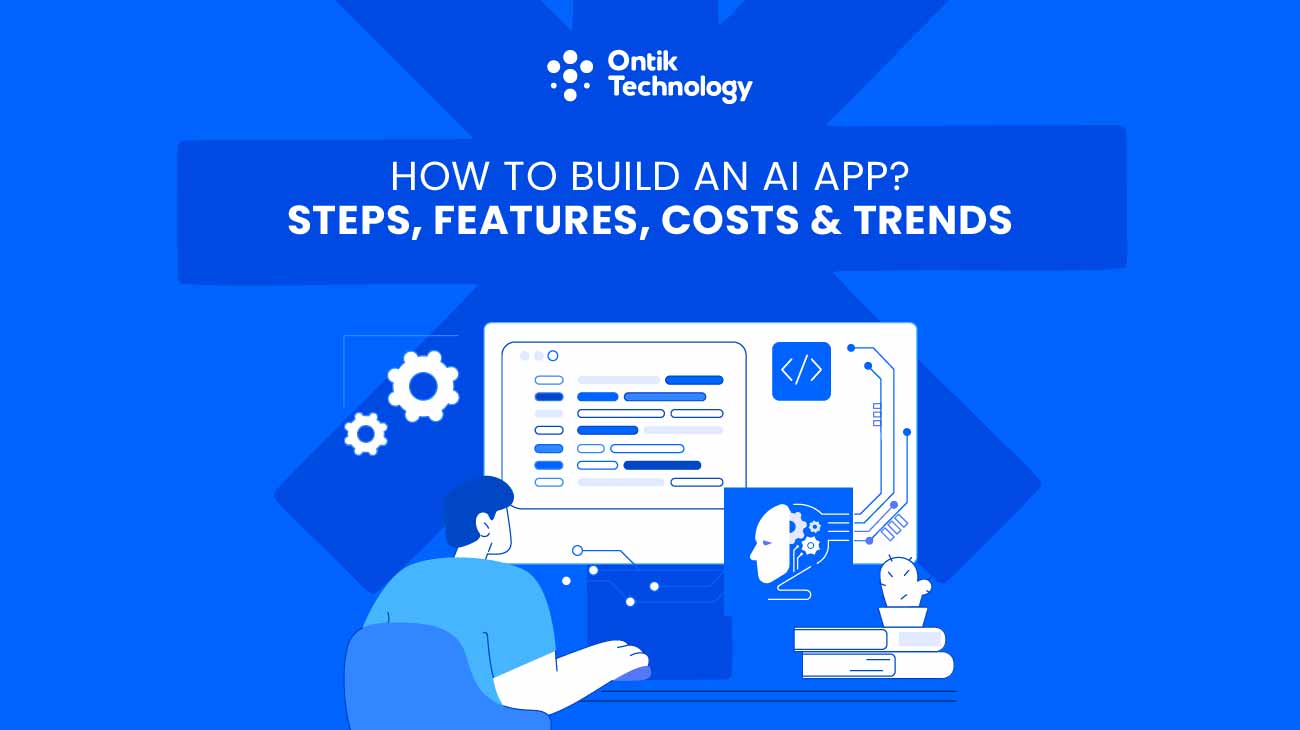

Key Takeaways
1. AI apps learn from data and continuously improve, unlike traditional rule-based software that requires manual updates.
2. The AI app development process includes seven stages: requirement analysis, data preparation, model training, UI/UX design, development, deployment, and ongoing optimization.
3. Building an AI app costs $30,000–$1M+, depending on complexity, data needs, model type, and integration requirements.
4. AI features like personalization, predictive analytics, computer vision, and automation deliver measurable efficiency and revenue gains.
5. Businesses succeed with AI by ensuring high-quality data, choosing the right model, solving real problems, and avoiding bias, drift, and integration pitfalls.
Your competition is already using AI. They are automating tasks you still handle manually. They are predicting customer needs before you even recognize patterns.
Building an AI application is no longer a futuristic luxury. It has become a strategic necessity for businesses that want to stay relevant in 2026. From startups looking to disrupt markets to enterprises aiming to optimize operations, everyone is asking the same question: how to build an AI app that actually delivers results?
This guide walks you through everything you need to know about AI app development. You will learn the step-by-step process to create artificial intelligence applications. You will understand the core components that power intelligent systems. You will discover the features that make AI apps indispensable. Plus, you will get realistic cost estimates and timelines to plan your investment wisely.
Whether you are a CTO evaluating AI strategy, a product owner exploring automation, or a startup founder seeking competitive advantage, this roadmap will help you navigate the complexities of building AI applications.
What Is an AI App?
An AI app is software that learns from data and improves over time without explicit programming for every scenario. Unlike traditional applications that follow fixed rules, AI apps adapt their behavior based on patterns they discover in information.
Your email spam filter is a perfect example. It does not rely on a simple list of banned words. Instead, it analyzes millions of emails to recognize spam characteristics. The more emails it processes, the smarter it becomes at filtering unwanted messages.
Key characteristics include:
- Learning systems that make data-driven decisions
- Adaptive behavior that evolves with usage
- Pattern recognition across large datasets
- Predictive capabilities that forecast outcomes
Common examples include chatbots that understand natural language, recommendation systems that suggest products based on your preferences, and predictive analytics apps that forecast sales trends. This shift from rule-based to learning-based systems transforms how businesses operate and serve customers.
What is AI Application Development?
AI application development combines software engineering, data science, and machine learning models into one integrated process. You are not just writing code. You are teaching systems to think and learn.
The lifecycle follows a clear pattern: data collection leads to model training, which connects to integration, and finally reaches deployment. Each stage builds on the previous one.
Core development phases:
- Data gathering and preparation for model training
- Algorithm selection and model training
- API integration and infrastructure setup
- Continuous monitoring and optimization
At the core, you work with algorithms that process information and generate insights. Model training teaches these algorithms to recognize patterns. Inference applies those learned patterns to new situations. This continuous learning cycle defines modern AI application development and separates it from traditional software projects.
Why Businesses Need AI Apps in 2026?
The business landscape has shifted dramatically. Companies that automate intelligently are outpacing those that rely on manual processes. AI apps provide the competitive edge you need to survive and thrive.
Automation now goes beyond simple task repetition. AI-driven decision systems analyze complex scenarios and recommend optimal actions faster than human teams ever could. Personalization has become a customer expectation, not a nice-to-have feature.
Critical advantages in 2026:
- Real-time intelligence that predicts market shifts
- Cost optimization through automated processes
- Scalable personalization at enterprise level
- Proactive problem detection before issues escalate
Digital transformation without AI is incomplete. Scalability demands systems that grow smarter as they grow larger. AI apps learn from increased data volumes and improve performance as usage expands. This creates a positive feedback loop that traditional applications cannot match.
What Are the Key Benefits of Building an AI App for Your Business?

Building an AI application transforms multiple aspects of your operations. The returns extend far beyond simple automation.
Operational efficiency shoots up when AI handles repetitive tasks. Your team focuses on strategic work while algorithms process routine operations. Data entry, document classification, quality checks, and status updates all happen automatically. This shift frees up thousands of hours annually.
Predictive insights change how you plan. Traditional analytics tell you what happened. AI tells you what will happen next. You forecast demand more accurately, anticipate maintenance needs before equipment fails, and identify customer churn risk before it happens.
Personalization scales effortlessly with AI. You can tailor experiences for thousands or millions of users simultaneously. Each customer sees content, recommendations, and offers matched to their preferences. This level of customization was economically impossible before AI made it automated.
Cost reduction comes from multiple sources. You need fewer staff for routine tasks. You waste less on inventory through better demand prediction. You prevent expensive failures through early detection. These savings compound over time as your AI systems become more accurate.
Competitive differentiation becomes sustainable. Anyone can copy a feature. Few can replicate a trained AI system built on your unique data. Your models improve continuously as they process your specific business information.
Customer experience improves when AI powers interactions. Response times drop, accuracy increases, and availability expands to 24/7. Users get help exactly when they need it, translating directly to higher satisfaction and retention rates.
What Are the Core Components of AI Apps?
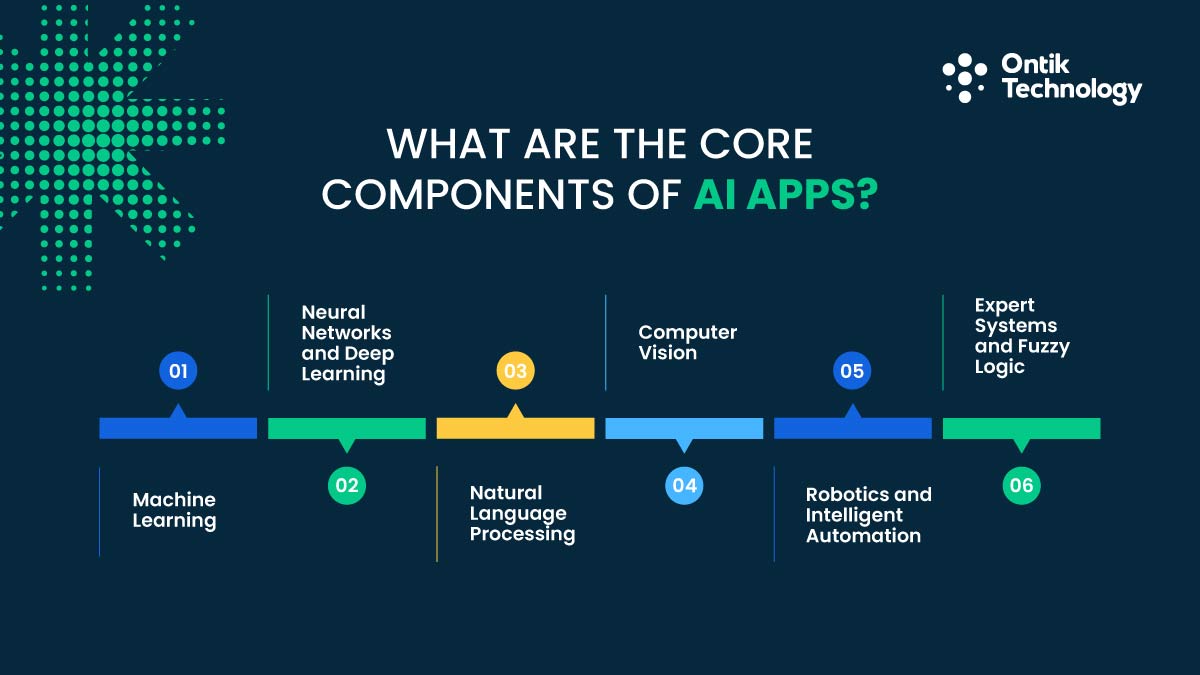
AI applications run on several interconnected technologies. Each component handles specific tasks that combine to create intelligent behavior. Understanding these building blocks helps you build AI applications effectively.
Machine Learning (ML)
ML forms the foundation of most AI apps. It lets systems learn patterns from data without explicit programming for every scenario. Three main approaches power ML systems: supervised learning uses labeled data to train models, unsupervised learning finds patterns without predefined categories, and reinforcement learning trains through trial and error with feedback.
Neural Networks and Deep Learning
Neural networks mimic how human brains process information. They consist of layers of interconnected nodes that transform input data into outputs. Deep learning uses neural networks with many layers to learn complex patterns. Different architectures serve different purposes: convolutional neural networks handle visual data, recurrent networks process sequences like text, and transformer models power modern language understanding.
Natural Language Processing (NLP)
NLP enables machines to understand and generate human language. This capability powers chatbots, translation services, and content analysis tools. Modern NLP relies on large language models trained on massive text datasets. Key tasks include sentiment analysis, named entity recognition, and question answering. NLP transforms how users interact with software through voice commands and natural conversations.
Computer Vision
Computer vision teaches machines to interpret visual information. Your AI apps can identify objects, detect faces, read text in images, and analyze video content. Image classification assigns labels to pictures. Object detection locates multiple items within images. Facial recognition matches faces to identities. Quality control systems use computer vision to spot defects, while retail apps let customers search products by photo.
Robotics and Intelligent Automation
Robotics combines AI with physical systems. Intelligent automation applies AI to business processes. Industrial robots use computer vision and ML to adapt to variations in products and conditions. Robotic process automation handles digital workflows, and when enhanced with AI, these bots handle exceptions and make decisions without human intervention.
Expert Systems and Fuzzy Logic
Expert systems encode human knowledge into rules and inference engines. They provide recommendations based on established expertise. Fuzzy logic handles uncertainty and imprecision, working with degrees of truth rather than strict binary values. While newer AI techniques often overshadow these methods, they remain valuable when you have clear domain rules and need explainable decisions.
These components work together in most AI applications. Your specific mix depends on what problems you solve and what data you have available. Next, we will look at how different industries apply these technologies.
How Are AI Applications Used Across Different Industries?
AI transforms operations across every major sector. The applications vary by industry, but the pattern remains consistent. Businesses identify problems that require intelligence, apply appropriate AI techniques, and measure tangible outcomes.
Healthcare organizations use AI for predictive analytics in patient care. The problem is reactive treatment that only addresses symptoms after they worsen. AI solutions analyze patient data to identify health risks before they become critical. Electronic health records, lab results, and vital signs feed into models that predict complications. The outcome is earlier interventions that improve patient outcomes and reduce hospital readmissions by up to 20 percent.
Finance institutions deploy AI for fraud detection and risk assessment. Traditional rule-based systems miss sophisticated fraud patterns while generating false positives. AI models analyze transaction behaviors, user patterns, and contextual data to spot genuine threats. Banks using these systems reduce fraud losses significantly while improving customer experience by eliminating unnecessary transaction blocks.
Retail businesses implement AI for personalized shopping experiences. Generic product catalogs fail to engage diverse customer preferences. AI recommendation engines analyze browsing history, purchase patterns, and similar customer behaviors to suggest relevant products. E-commerce platforms see conversion rate increases of 10 to 30 percent through intelligent personalization.
Manufacturing companies use AI for predictive maintenance. Unexpected equipment failures halt production and create costly downtime. AI systems monitor sensor data from machinery to predict failures days or weeks in advance. Manufacturers schedule maintenance during planned downtime, reducing unplanned stoppages by 40 to 50 percent and extending equipment life.
Logistics operations optimize routes and inventory with AI. Static routing wastes fuel and time while poor inventory planning creates stockouts or excess. AI algorithms process traffic patterns, delivery priorities, and historical data to create efficient routes daily. Inventory systems predict demand variations to optimize stock levels. Companies reduce delivery costs by 15 to 25 percent while improving service levels.
Education platforms adapt learning paths using AI. One-size-fits-all curricula fail to address individual learning speeds and styles. AI tutoring systems assess student understanding continuously and adjust content difficulty and presentation. Students progress faster and retain more when lessons match their needs precisely.
These examples share common threads. Each industry faces problems where data holds answers but manual analysis falls short. AI apps process that data at scale to uncover insights and automate decisions. The results are measurable improvements in efficiency, accuracy, and outcomes.
What Game-Changing Features Should an AI App Include?
Your AI app needs capabilities that justify its existence. Generic features will not cut it. You want functionality that makes users wonder how they managed without it.
Real-time learning keeps your app current as conditions change. User preferences shift, market dynamics evolve, and new patterns emerge. Apps that learn continuously stay relevant while those relying on static models become outdated quickly.
Personalization engines tailor experiences to individual users. Every person sees content and recommendations matched to their preferences and behaviors. Your AI analyzes thousands of signals to understand what each user needs right now.
Predictive analytics anticipates future outcomes. Sales forecasts guide inventory decisions. Maintenance predictions prevent equipment failures. Churn risk scores trigger retention campaigns. This foresight creates competitive advantages.
Conversational interfaces make interactions natural. Users type or speak questions in plain language. Your AI understands intent, extracts information, and responds appropriately without complex navigation or training manuals.
Automation workflows handle complex processes end to end. Your AI chains multiple steps together, makes decisions at branch points, and handles exceptions. Entire business processes run without human intervention.
Visual recognition processes images and videos. Users search products by uploading photos. Quality control systems spot defects. Security applications identify people and objects. Computer vision unlocks use cases impossible with text-only systems.
Context-aware responses adjust to situations dynamically. Your AI considers time of day, user location, device type, and recent activities to deliver relevant recommendations that match current context.
These features together create some seriously smart apps. Just pick the ones that fit what you're trying to do and what your users need. Then, we'll dive into how to actually build these things.
What Is the Step-by-Step Process to Develop an AI Application?
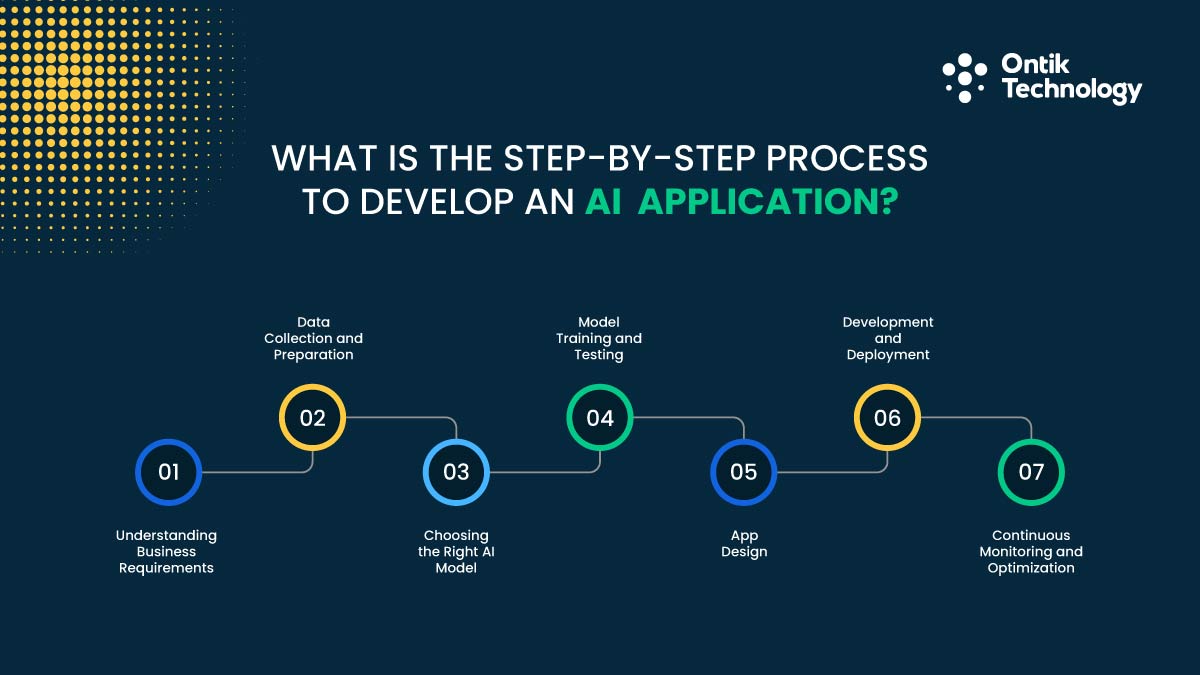
Building AI applications requires a structured approach. You cannot skip steps or rush through phases without risking project failure. This roadmap guides you from concept to deployment.
Understanding Business Requirements
Start by defining exactly what problem you want to solve. Vague goals lead to wasted effort and disappointing results. Ask what success looks like and define metrics you will track. Identify who will use the system and how. Document constraints around budget, timeline, and resources. Engage stakeholders from different departments early to shape requirements that address real needs.
Data Collection and Preparation
Your AI is only as good as your data. Identify what data you need and where it exists. Collect historical examples that represent the problem you want to solve. Clean and structure your data carefully by removing duplicates, fixing errors, and standardizing formats. Split data into training, validation, and test sets to ensure your model generalizes to new situations.
Choosing the Right AI Model
Different problems require different approaches. Classification tasks need models that assign labels to inputs. Regression models predict numeric values. Match your model type to your problem type. Consider complexity versus interpretability tradeoffs. Start simple and add complexity only when needed. Leverage pre-trained models when possible to reduce training time and data requirements.
Model Training and Testing
Training teaches your model to recognize patterns in data. Feed training data through the model repeatedly while algorithms adjust internal weights to improve accuracy. Validate performance on held-out data throughout training. Test rigorously on data the model never saw during development. Measure accuracy, precision, recall, and other relevant metrics. Iterate based on results until you achieve production-ready performance.
App Design and UI/UX Integration
Your AI needs an interface that makes its intelligence accessible. Design workflows that incorporate AI recommendations naturally. Users should understand when AI is helping and what it suggests. Show confidence levels and alternative options when appropriate. Make outputs actionable with clear next steps and rationale. Professional UI/UX design ensures your AI capabilities are accessible and intuitive. Test interfaces with actual users before full development.
Development and Deployment
Integration connects your trained model to application infrastructure. Build APIs that expose model predictions efficiently with low latency. Set up infrastructure to serve models at scale using cloud platforms. Implement monitoring from day one to track prediction performance. Plan rollout carefully by starting with limited users before full deployment.
Continuous Monitoring and Optimization
AI apps require ongoing attention. Models degrade over time as data patterns change. This phenomenon called model drift requires active management.
Monitor key metrics continuously. Set up alerts when accuracy drops below thresholds. Track how predictions influence business outcomes. Measure whether AI delivers expected value.
Collect production data to retrain models regularly. New examples improve accuracy and help models adapt to changing conditions. Establish retraining schedules based on your domain.
Gather user feedback systematically. Track which recommendations users accept or reject. Note where the AI confused people. This information guides improvements.
Optimize based on real-world performance. Adjust thresholds, add features, or try different models as you learn what works. AI development never truly ends. Continuous improvement separates good apps from great ones.
Now let's address the challenges you will face along the way.
How Can Businesses Overcome Common Challenges in AI App Development?
Every AI project encounters obstacles. Knowing them in advance helps you prepare solutions rather than scramble when problems arise.
Data scarcity limits what models can learn. Mitigation strategies include synthetic data generation, transfer learning from related tasks, and semi-supervised approaches. Partner with industry peers to share anonymized datasets when possible.
Bias creeps into AI systems through training data and design choices. Address this through diverse training sets, fairness metrics during development, and regular audits. Include diverse perspectives in your development team and test models across demographic groups.
High costs of compute resources and specialized talent strain budgets. Control expenses through cloud services that charge by usage. Use pre-trained models to reduce training time. Consider partnering with an AI app development company to access expertise without building full teams.
Integration complexity frustrates teams connecting AI to existing systems. Plan integration architecture early in projects. Use API-based approaches that minimize changes to existing code. Build abstraction layers that let you swap AI components without major rewrites.
Compliance issues vary by industry and geography. Build privacy protections and audit trails into systems from the start. Work with legal teams throughout development, not just at the end. Choose AI techniques that provide explainable decisions when regulations require transparency.
Skills gaps hamper progress when teams lack AI expertise. Bridge this through training programs that upskill existing staff or partner with experienced firms for initial projects while building internal capabilities.
What Are the Differences Between Traditional Apps and AI-Powered Apps?
Understanding these distinctions helps you recognize when AI makes sense and when simpler approaches suffice. Not every problem needs AI.
Traditional apps follow if-then logic you explicitly program. AI apps discover their own logic through pattern recognition. Static apps behave the same way every time. AI apps evolve as they process more data.
Rule-based systems require developers to anticipate every scenario. Learning systems need examples of inputs and desired outputs. Traditional apps break when facing unprogrammed situations. AI apps generalize to new scenarios based on learned patterns.
Intelligence versus instructions. Learning versus programming. These differences define when you need AI versus when traditional software works better.
How Much Does It Cost to Build an AI App?
Budget planning requires understanding cost components. AI app development costs vary widely based on scope and complexity. Here is what you should expect.
Data preparation often consumes 30 to 40 percent of total project budgets. You need to collect, clean, label, and structure information before any model training begins. Costs include data acquisition, storage infrastructure, and labor for data cleaning. Expect $10,000 to $50,000 for basic projects, $50,000 to $150,000 for mid-level apps, and $150,000 plus for enterprise systems.
Model development covers algorithm selection, training compute resources, and data science expertise. Cloud computing bills for training can reach thousands of dollars for complex models. Data scientist salaries or consulting fees add significantly. Budget $15,000 to $60,000 for simple models, $60,000 to $200,000 for moderate complexity, and $200,000 plus for cutting-edge approaches.
Infrastructure costs include cloud services for model hosting, API development, database systems, and monitoring tools. Monthly operational costs continue beyond initial development. Plan for $5,000 to $20,000 for basic setups, $20,000 to $80,000 for mid-scale deployments, and $80,000 plus for enterprise-grade infrastructure.
Maintenance requires ongoing model retraining, performance monitoring, bug fixes, and feature updates. Annual maintenance typically runs 15 to 25 percent of initial development costs. This recurring expense is essential for keeping AI apps effective.
Total cost ranges by project complexity:
- Basic AI app: $30,000 to $130,000 for simple use cases
- Mid-level AI app: $130,000 to $430,000 with custom models
- Enterprise AI app: $430,000 to $1,000,000+ for advanced capabilities
Cost estimates based on industry averages from Clutch 2024 AI Development Survey and GoodFirms Technology Cost Report
Several factors drive cost variability. Custom model development costs more than using pre-trained models. Real-time processing requirements increase infrastructure expenses. Regulated industries face additional compliance costs. Integration with complex legacy systems adds development time.
Geography affects labor costs significantly. Teams in North America and Western Europe charge premium rates. Eastern Europe, Latin America, and Asia offer lower costs with strong technical capabilities.
Remember that initial development represents only part of total ownership costs. Factor in ongoing maintenance, infrastructure, and improvement cycles when budgeting.
How Long Does It Take to Develop an AI App?
Time estimates help you plan launches and set stakeholder expectations. AI projects take longer than traditional software development due to data preparation and model training phases.
MVP timeline covers 3 to 6 months for proof-of-concept development with straightforward use cases. You build a working prototype with core AI functionality to demonstrate feasibility and gather early user feedback. For startups looking to validate their AI concepts quickly, MVP development services can accelerate this process. Data availability significantly impacts this timeline.
Mid-scale app timeline spans 6 to 12 months for moderately complex applications with custom models and system integration. You refine models based on initial results, build complete user interfaces, and integrate with existing infrastructure.
Enterprise app timeline requires 12 to 24 months or more for comprehensive AI systems serving many users across multiple use cases. These projects involve extensive data pipelines, complex model architectures, enterprise integration, and staged rollouts.
Data availability serves as the biggest timeline variable. Projects with ready-to-use training data start model development immediately. Those needing months of data collection push back all subsequent phases.
Model complexity affects training time. Simple models train in hours or days. Deep learning systems might require weeks of compute time. Integration scope influences schedules significantly. Standalone apps deploy faster than systems deeply embedded in enterprise infrastructure.
Team experience matters substantially. Groups with AI expertise move faster than those learning as they go. Plan for longer timelines than traditional software projects.
How to Measure the ROI of Your AI App?
Proving value justifies investment and secures funding for future AI initiatives. Track both quantitative and qualitative metrics to demonstrate impact.
Cost savings provide the most straightforward ROI calculation. Measure labor hours eliminated through automation. Calculate prevented losses from predictive maintenance or fraud detection. Quantify efficiency gains from optimized processes and express savings in annual dollar amounts.
Efficiency gains show productivity improvements. Track time required to complete tasks before and after AI deployment. Measure throughput increases in processes AI optimizes. Count how many more transactions your team handles with AI assistance.
Revenue growth demonstrates top-line impact. Attribute sales increases to AI-powered recommendations or targeting. Measure conversion rate improvements from personalization. Track customer lifetime value changes for AI-engaged users.
User engagement indicates product improvement. Monitor time spent in app, feature usage rates, and return visit frequency. Track net promoter scores and customer satisfaction ratings. Higher engagement typically correlates with business value.
Accuracy improvements matter for decision-support applications. Compare AI prediction accuracy to previous methods or human performance. Improved demand forecasting reduces inventory costs. More accurate credit scoring lowers default rates.
Set baseline metrics before AI deployment. Measure the same things before and after to show improvement. Calculate payback period by dividing total implementation costs by annual benefits. Most successful AI projects achieve payback within 18 to 36 months.
Why Choose Custom AI App Development?
Off-the-shelf AI tools tempt with quick deployment and lower upfront costs. However, generic solutions rarely address your specific needs effectively. Custom development delivers advantages that justify the investment.
Unique business requirements demand tailored solutions. Your processes, data structures, and workflows differ from competitors. Generic tools force you to adapt your operations to their constraints. Custom AI apps adapt to your needs instead.
Data ownership and control matter strategically. Pre-built AI services often require sending your data to third-party platforms. This creates privacy risks and competitive exposure. Custom solutions keep your proprietary information internal where it belongs.
Integration flexibility proves critical in complex environments. Off-the-shelf tools might not connect easily with your existing systems. Custom development designs integration from the ground up to avoid painful workarounds and data silos.
Competitive differentiation requires unique capabilities. Everyone using the same AI tools gets the same advantages and limitations. Custom AI trained on your specific data creates competitive moats that others cannot easily replicate.
Scalability control lets you grow on your terms. Pre-built services impose usage limits and pricing tiers that might not match your growth trajectory. Custom infrastructure scales exactly as you need while optimizing costs.
Feature prioritization matches your business priorities. Generic tools include capabilities you will never use while missing features you need. Ontik Technology specializes in custom AI development that focuses resources on what matters most to your operations.
Long-term cost efficiency often favors custom solutions despite higher initial investments. Subscription costs for pre-built AI services compound over years while custom systems have ongoing maintenance costs but avoid perpetual licensing fees.
How a Professional AI Development Company Can Help?
Building AI applications in-house challenges most organizations. Specialized expertise, experience with common pitfalls, and proven methodologies make professional development partners valuable.
Strategy consulting helps you identify where AI creates the most value. Expert firms assess your operations, data assets, and goals to recommend use cases with optimal return potential. This strategic guidance prevents wasted effort on low-value projects.
Data engineering expertise proves especially valuable. Professional teams know how to collect, clean, transform, and structure data for AI applications. They build robust data pipelines that support ongoing operations and prevent common data quality problems.
Model development requires deep technical knowledge. Ontik Technology and similar AI development companies employ data scientists and ML engineers with expertise across techniques. They select appropriate algorithms, tune hyperparameters, and optimize performance to accelerate development.
Deployment infrastructure setup benefits from proven patterns. Professional firms understand cloud platforms, API design, scaling strategies, and monitoring systems. They implement production-grade infrastructure from the start rather than refactoring hastily built prototypes.
Risk reduction comes from learning through others' experience. Development partners have seen problems before and know solutions. They anticipate issues and build mitigation strategies proactively to prevent costly mistakes.
Faster time-to-market results from focused expertise. In-house teams learning as they go face steep learning curves. Professional firms apply established processes that compress timelines and deliver production-ready systems months faster.
Ongoing maintenance and support keep systems running smoothly. AI development companies provide monitoring services, model retraining, and performance optimization. This ongoing partnership ensures your AI apps remain effective as conditions change.
Choose development partners carefully. Look for firms like Ontik Technology with demonstrated expertise in your industry and use case. Review past projects and client outcomes. Verify that their team includes both software engineers and data scientists.
Final Thoughts
AI app development has moved from experimental to essential. Companies that automate intelligently, personalize effectively, and predict accurately are outperforming competitors. The gap between AI adopters and laggards widens every quarter.
You now understand what makes AI apps different from traditional software. You know the core components that power intelligent systems. You have a roadmap for development from requirements through deployment. You recognize the features that create genuine value plus realistic cost and timeline estimates.
The path forward starts with clear goals and expert guidance. Begin by identifying where AI solves real business problems. Focus on use cases with available data and measurable outcomes. Start small with proofs of concept that demonstrate value quickly.
Building AI applications requires commitment beyond initial development. Plan for ongoing maintenance, continuous improvement, and adaptation as your business evolves. The companies winning with AI treat it as a strategic capability requiring sustained investment.
Your competition is already building or planning AI initiatives. Every month you delay gives them more time to learn and capture advantages. Take action today by defining your first use case and engaging experts who can guide your journey.
Ready to transform your business with AI? Connect with experienced partners who can turn your vision into working applications that deliver measurable results.
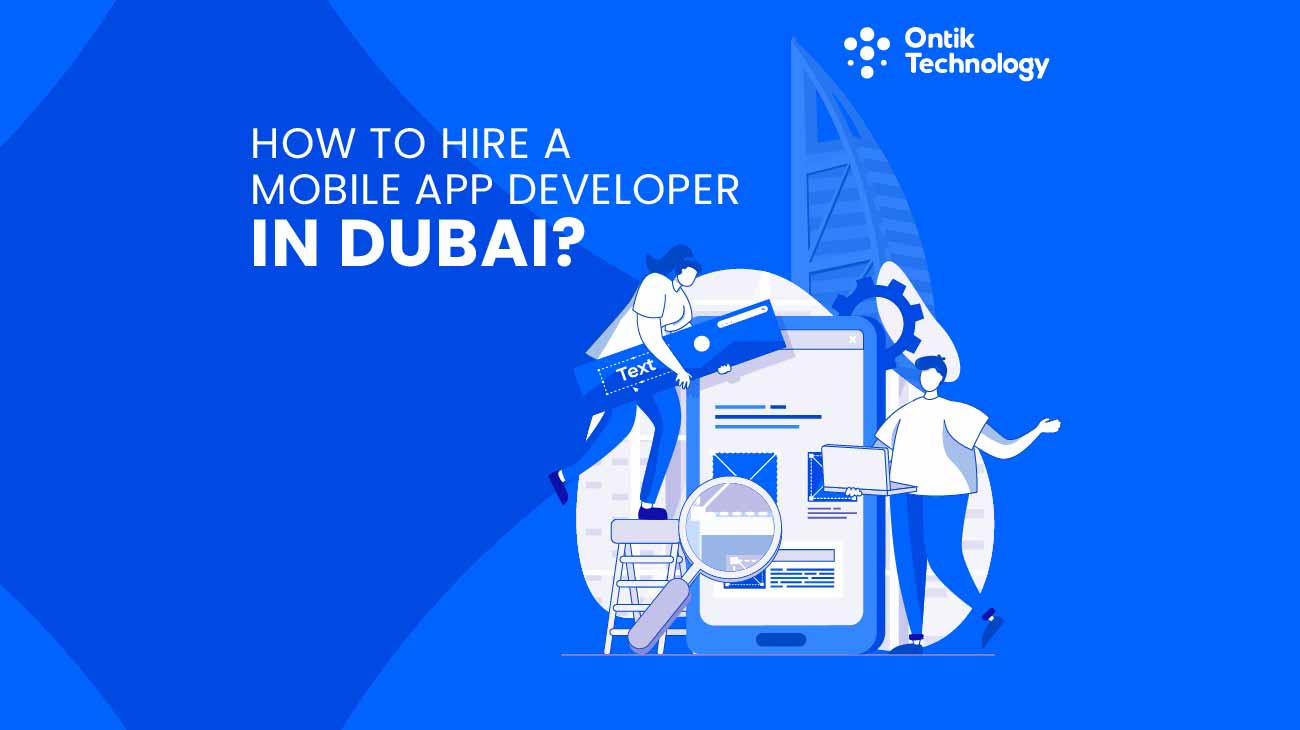

Key Takeaways
- Define clear app requirements (features, user flows, platform, MVP scope) before you shortlist any Dubai developer.
- Choose the right engagement model (Dedicated, Augmentation, Fixed, T&M, Project-Based, MVP) based on scope certainty, speed, and control.
- Vet developers by portfolio relevance, iOS/Android + cross-platform skills (Flutter/React Native), backend/API capability, and QA process.
- Prioritize security + UAE compliance early (encryption, auth, payments, data privacy) and confirm bilingual/localization readiness.
- Reduce cost without losing quality by launching an MVP first, using cross-platform builds, leveraging pre-built modules, milestone contracts, and offshore/hybrid teams.
Whether you run a startup or manage an enterprise, finding the right app developer Dubai can make or break your project. The UAE tech ecosystem thrives with innovation. Smart Dubai initiatives plus government support have created fertile ground for app development.
However, the market overflows with options. This guide walks you through everything. You will learn how to find, evaluate, and hire app developers in Dubai. We cover hiring models, cost breakdowns, and red flags to avoid.
You will also discover strategies to hire top developers without burning your budget. Dubai's tech talent pool keeps growing. Companies here understand local market needs plus global standards. From defining requirements to signing contracts, every step matters. Get ready to build something extraordinary with the right app development team.
Essential Factors to Consider While Hiring Mobile App Developers in Dubai
Your success hinges on choosing developers with the right mix of skills. Technical expertise tops the list. Look for developers skilled in both iOS app development in Dubai and Android app development Dubai. Cross-platform knowledge matters too. When evaluating mobile app development companies in Dubai, technical competence should be your first filter.
Portfolio quality reveals everything. Check their previous work carefully. Strong portfolios showcase diverse projects. You want developers who have built apps similar to yours. Real examples beat vague promises every time.
UI/UX background separates good apps from great ones. Your developer should understand user behavior patterns. They need to create interfaces that feel natural. Beautiful design without usability fails. Usability without appeal disappoints. Consider working with specialists in UI/UX design for the best results.
Key technical requirements to verify:
- iOS and Android development expertise
- Cross-platform framework knowledge (Flutter, React Native)
- API integration and backend connectivity
- Security protocols and data encryption
- Cloud services implementation
Security standards cannot be negotiable. Data breaches destroy reputations overnight. Your mobile app development UAE team must follow industry best practices. Ask about encryption methods, secure authentication, and compliance frameworks they use.
Dubai-specific considerations matter tremendously. Bilingual capabilities help expand your reach. Arabic plus English support opens more markets. UAE compliance knowledge saves headaches later. Your developer should understand local regulations around data privacy and digital payments.
GCC market knowledge gives you an edge. Consumer behavior varies across regions. Developers with regional experience understand these nuances. Budget requirements need clarity upfront. Different developers offer different value propositions.
Financial benefits of hiring in Dubai:
The UAE offers competitive development rates compared to Western markets while maintaining high quality standards. You save 30-40% versus hiring in the US or UK. Plus, no corporate tax on most business activities means better ROI. Free zones provide additional cost advantages through reduced operational expenses. Your investment goes further without compromising on talent quality.
Top Advantages of Hiring Mobile App Developers in Dubai
Dubai offers unique benefits you will not find elsewhere. The city's tech ecosystem combines global standards with regional expertise. Here are the key advantages:
Technical Excellence & Talent Pool:
- Access to developers trained in top universities and tech companies worldwide
- Deep expertise across multiple technology stacks and frameworks
- Regular exposure to cutting-edge tools and methodologies
Domain-Specific Knowledge:
- Strong understanding of fintech, e-commerce app development Dubai, healthcare, and logistics
- Experience across diverse industries due to Dubai's varied economy
- Proven track record in building solutions that work in real market conditions
Strategic Market Positioning:
- Gateway to Middle East, North Africa, and South Asia markets
- Local insights for tailoring features to regional user preferences
- Understanding of GCC consumer behavior and cultural nuances
Regulatory & Compliance Advantages:
- Current knowledge of UAE digital service laws and regulations
- Built-in compliance with data privacy and digital payment standards
- Familiarity with Smart Dubai initiatives and government tech standards
Operational Benefits:
- Timezone alignment with Europe, Africa, and Asia for real-time collaboration
- Strong IT infrastructure with reliable internet and modern facilities
- Access to cloud services, payment gateways, and API integrations
Communication & Localization:
- Multilingual capabilities (Arabic, English, plus other languages)
- Experience in building apps that respect local customs while maintaining global appeal
- Support for international user testing and localized customer service
These advantages combine to create an environment where your mobile app development benefits from both technical excellence and market understanding.
3 Flexible Model To Hire Mobile App Developer In Dubai
Choosing the right hiring model determines your project's success. Each model offers distinct advantages based on your specific needs.
1. Dedicated Development Team Model
You get a full squad working exclusively on your project. The team becomes an extension of your company, learning your business inside out. Learn more about how dedicated development teams can transform your project. Cross-functional teams with designers, developers, and QA specialists work together using Agile methodology for continuous delivery.
Best for: Enterprise applications, ongoing product development, companies needing continuous updates
2. Staff Augmentation Model
You expand your existing team with skilled developers who integrate seamlessly. They work under your management and follow your processes. This model fills skill gaps without long-term commitments. Pre-vetted developers can join your team within 2 weeks through staff augmentation services.
Best for: Temporary skill gaps, scaling during peak periods, specialized expertise needs
3. Fixed Price Model
You agree on scope, deliverables, and price upfront. The developer delivers the complete project for that fixed cost. Changes after agreement typically cost extra. A detailed discovery phase prevents scope misunderstandings and ensures predictable costs with clear milestones.
Best for: MVPs, apps with clear requirements, one-time projects with fixed scope
4. Time & Material Model
You pay based on actual hours worked plus materials used. This flexible approach adapts as requirements evolve. Perfect for projects where specifications might change. Transparent time tracking and Agile sprints deliver working features every two weeks.
Best for: Projects with uncertain scope, evolving requirements, exploratory development phases
5. Project-Based Model
You define the entire project scope upfront. The team handles everything from design to deployment as a complete package. Payment happens in pre-defined milestones. End-to-end custom software development covers every phase without coordinating multiple vendors.
Best for: Complete app builds, business automation projects, digital transformation initiatives
6. MVP Partnership Model
You validate your concept quickly with a minimum viable product. This model focuses on core features to test market fit before full investment. MVP development services can launch products in 8-12 weeks, helping identify must-have features efficiently.
Best for: Startups, new product launches, testing business concepts, securing investor funding
Modern Tools & Technologies of Mobile App Development
Technology choices shape your app's future. The right stack ensures scalability, performance, and maintainability. At Ontik Technology, deep expertise across modern tools transforms ideas into robust applications using their proven process.
Agile & Scrum Methodology
Modern development thrives on Agile principles combined with Scrum framework. This keeps projects responsive and delivery-focused. Work happens in two-week sprints, each delivering functional features you can test immediately. You get faster time to market, continuous feedback integration, transparent progress tracking, and flexibility to adjust based on real user needs.
Frontend Frameworks Expertise
Flutter Development: Build cross-platform apps with a single codebase. You launch on iOS and Android simultaneously, cutting development time by 40%. The framework delivers native-like performance with beautiful, customizable UI components.
React Native Solutions: JavaScript-powered mobile experiences enable faster iterations and code reusability. The vast component library accelerates development while maintaining quality standards.
Native Development: When performance matters most, Swift and Kotlin deliver apps that fully utilize platform-specific features. You get the best user experience with optimized performance for demanding applications.
Backend Technologies & Architecture
Node.js Implementation: Event-driven architecture handles real-time features flawlessly, supporting thousands of concurrent users. Perfect for chat applications, live dashboards, and collaborative tools.
Laravel Development: PHP framework builds secure, scalable APIs with elegant structure that speeds development. Business logic implementation becomes straightforward and maintainable.
Firebase Integration: Complete backend solutions provide authentication, real-time databases, and cloud storage pre-configured. You launch MVPs in weeks instead of months.
Database Solutions & Data Management
MongoDB Expertise: NoSQL document-based storage adapts to changing requirements without complex migrations. Flexible data structures evolve with your needs.
MySQL Implementation: Relational systems handle complex queries, transactions, and data integrity expertly. Rock-solid for transactional applications requiring data relationships.
DevOps & CI/CD Pipeline
Continuous integration and deployment using Jenkins, GitHub Actions, and GitLab CI ensure code flows smoothly from development to production. Automated testing catches issues before they reach users. Infrastructure as Code provisions consistent environments, making deployments repeatable and error-free. Real-time monitoring detects performance issues instantly while comprehensive logging helps troubleshoot problems quickly.
Cloud Solutions & Scalability
AWS Implementation: Enterprise-grade infrastructure with auto-scaling handles traffic spikes smoothly. You pay only for resources actually used.
Google Cloud Platform: Powerful AI/ML integration, BigQuery analytics, and Firebase services work perfectly for data-intensive applications.
Azure Solutions: Seamless Microsoft ecosystem integration delivers enterprise-ready solutions with familiar tools.
Testing & Quality Assurance
Automated testing runs throughout development using Selenium, Appium, and XCTest. Test-driven development ensures code quality from day one. You get bug-free releases, faster time to market, and apps that work flawlessly across devices and operating systems.
Step-by-Step Guide to Hiring Mobile App Developers in Dubai
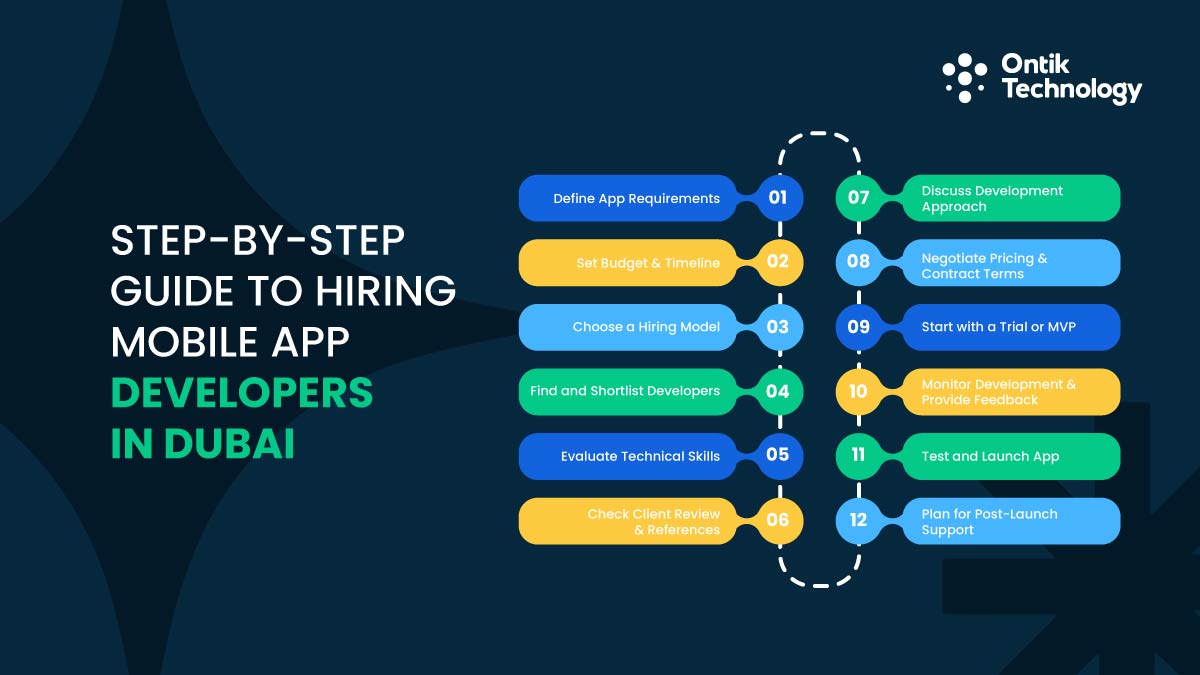
Finding the right developer requires a systematic approach. Follow these steps to hire top developers in Dubai who match your needs perfectly.
1. Define Your App Requirements
Start with crystal-clear requirements. Write down every feature your app needs. Include user flows, screens, and interactions. The more detailed your brief, the better the estimates you receive. Create your feature list separating must-haves from nice-to-haves. This helps prioritize when budget gets tight. Your minimum viable product (MVP) might skip advanced features initially.
Know your target users deeply. Build user personas to understand who uses your app, what problems they face, and how your app solves these. Understanding users shapes design decisions and helps developers build something people actually want.
Choose your platforms carefully. Will you target iOS, Android, or both? Each choice affects development time and cost. Cross-platform frameworks save money but might limit some native features.
2. Set Your Budget & Timeline
Budget planning prevents unpleasant surprises. Research typical costs for similar apps. Complexity drives price more than anything. Factor in Dubai market rates where developer experience affects hourly rates significantly. The app development cost UAE varies based on expertise level and project scope.
Plan your timeline realistically. Simple apps take 2-3 months while complex applications need 6-12 months or more. Factor in time for design revisions, testing, and App Store approvals. Buffer for unexpected challenges. Include post-launch costs for ongoing maintenance, bug fixes, updates, and new features.
3. Choose a Hiring Model
Your hiring model affects everything from cost to control. Fixed price suits defined projects when scope is clear and unlikely to change. Hourly works for evolving projects where flexibility matters. Dedicated teams serve long-term needs when you require ongoing development.
4. Find and Shortlist Developers
Dubai offers many ways to find developers. Use multiple channels to build a solid shortlist. Online platforms like Clutch, GoodFirms, and Upwork list app developers in Dubai. Read reviews carefully looking for consistent patterns in feedback.
Local directories help too. Dubai Chamber of Commerce maintains business listings. Technology parks like Dubai Internet City house many development firms. Ask for referrals from other business owners who provide honest opinions. LinkedIn works great for this. Attend tech events where Dubai hosts regular meetups and conferences.
5. Evaluate Technical Skills
Technical assessment separates claims from reality. Request code samples from developers who maintain GitHub profiles or portfolios. Review their code quality for cleanliness and documentation. Test their platform knowledge by asking specific questions about iOS mobile app development Dubai or Android application development Dubai.
Assess cross-platform skills if considering React Native or Flutter. Ask about challenges they faced and how they solved platform-specific issues. Check backend capabilities since mobile apps need backend systems. Evaluate their QA process to understand how they test apps and what tools they use.
6. Check Client Reviews & References
Past client experiences predict future performance. Read online reviews thoroughly on Clutch and Google Reviews. Look beyond star ratings to understand what clients actually say. Request recent references and talk to three recent clients minimum. Ask specific questions about deadline adherence, change handling, and whether they would hire again.
Check LinkedIn endorsements focusing on detailed recommendations that mention specific projects. Verify completed projects by downloading live apps they built and checking user ratings on App Stores.
7. Discuss Development Approach
Development methodology affects your entire experience. Agile delivers features iteratively with constant progress visibility and adjustment capability. Most modern developers in the UAE use Agile since it fits mobile development better. Communication workflows need clarity regarding meeting frequency, tools used, and update schedules. Sprint planning in Agile creates accountability through two-week cycles delivering working features.
8. Negotiate Pricing & Contract Terms
Contract negotiations protect both parties. Understand UAE contract norms which follow specific legal frameworks. Include clear payment terms and milestones. IP rights deserve attention to clarify code ownership. Usually, you should own everything upon final payment. Confidentiality protects your idea through NDAs before sharing detailed plans.
Milestone structure reduces risk. Never pay everything upfront. Break payments into milestones with typical structure being 30% to start, 40% at mid-point, and 30% upon completion. Tie each payment to deliverables.
9. Start with a Trial or MVP
Testing the relationship reduces risk dramatically. Build an MVP first to prove both concept and partnership. You get a working version with core features where user feedback guides next steps. Try a small paid project if MVPs seem too big. Maybe a prototype or single feature to show their skills and work style. Set clear success criteria defining what success looks like for the trial.
10. Monitor Development & Provide Feedback
Active involvement keeps projects on track. Schedule weekly updates to review completed work, discuss upcoming features, and address blockers immediately. Sprint reviews at each sprint end let developers demonstrate working features you can test yourself. Use shared dashboards with tools like Jira, Trello, or Linear showing real-time progress.
11. Test and Launch Your App
Thorough testing separates good launches from disasters. Multiple testing types catch different issues including unit testing, integration testing, user acceptance testing, and performance testing. Real device testing matters since simulators miss real-world issues. Test on actual iPhones and Android devices with different screen sizes and OS versions.
Follow app store guidelines for Apple App Store and Google Play Store which have strict requirements. Plan a soft launch by releasing to a limited audience first to catch issues before going public.
12. Plan for Post-Launch Support
Your app journey starts at launch. Maintenance covers bug fixes, OS updates, security patches, and server maintenance. Regular updates add value through new features, performance improvements, and design refreshes. Support contracts provide security with agreed response times for different issue severities. Analytics monitoring tracks user interactions to guide future decisions and prioritize development resources.
How Much Does It Cost To Hire An App Developer In UAE?
Costs vary widely based on multiple factors. Understanding price ranges helps set realistic expectations.
Hourly rates span a broad spectrum. Junior developers charge AED 100-150 per hour. Mid-level developers command AED 150-250 hourly. Senior developers and specialists cost AED 250-400+ per hour. Your project complexity determines which level you need.
Monthly rates for dedicated developers. Full-time dedicated developers cost AED 15,000-25,000 monthly for mid-level talent. Senior developers run AED 25,000-40,000 per month. This covers their time exclusively on your project.
Project-based pricing depends on complexity. Simple apps with basic features start around AED 50,000-80,000. Medium complexity apps with custom features cost AED 80,000-200,000. Complex applications with advanced features exceed AED 200,000 easily. E-commerce app development Dubai with payment integration falls in the medium to high range.
The Smart Alternative: Quality Meets Value
While Dubai-based developers deliver excellent work, offshore partnerships offer substantial savings without quality compromise. Ontik Technology demonstrates this value proposition clearly through their transparent pricing model.
Ontik Technology vs. UAE Market Pricing Comparison:
These savings add up significantly over project lifecycles. A medium complexity app that costs AED 150,000 locally runs approximately AED 60,000 through Ontik Technology. That is AED 90,000 saved while maintaining enterprise-grade quality standards.
Their pricing includes transparent terms with no hidden fees. Setup costs, management overhead, and exit fees stay minimal or nonexistent. You get exactly what you pay for without surprise charges appearing mid-project.
The offshore advantage comes from operational efficiencies, not corner-cutting. Ontik maintains rigorous quality standards while operating from a cost-effective location. Their developers undergo strict vetting with only 6% acceptance rates. This ensures you access top-tier talent at competitive rates.
Location within UAE affects prices. Dubai rates typically run 10-15% higher than Abu Dhabi or Sharjah. Dubai Internet City developers charge premium rates. Free zone companies sometimes offer better value.
App complexity drives cost more than anything. A simple information app with static content costs least. Apps needing user accounts, payments, and backend systems cost more. Real-time features, AI integration, or complex algorithms multiply costs significantly.
Strategies to Reduce Mobile App Development Hiring Costs
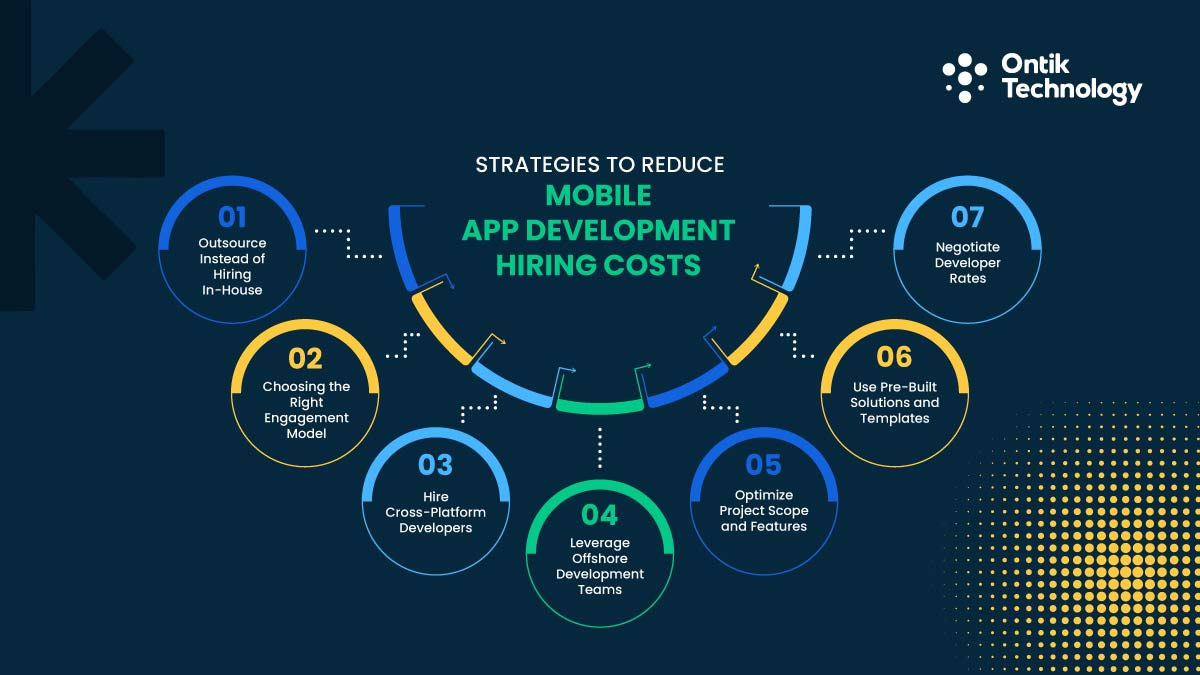
Smart planning cuts costs without sacrificing quality. These seven strategies help you maximize value.
1. Outsource Instead of Hiring In-House
Building an internal team costs significantly more. You pay salaries, benefits, office space, and equipment. Turnover creates additional hiring and training costs.
Outsourcing eliminates these overheads. You pay only for development work. No benefits or office costs. When the project completes, costs stop. This flexibility suits most businesses better.
2. Choosing the Right Engagement Model
Wrong engagement models waste money. Fixed price works only when requirements never change. Otherwise, change requests add up. Time and material suits evolving projects better.
Match the model to your certainty level. Clear requirements? Fixed price. Uncertain scope? Time and material. Long-term needs? Hire a dedicated team. This alignment saves thousands.
3. Hire Cross-Platform Developers
Building separate iOS and Android apps doubles development cost. Cross-platform frameworks like Flutter or React Native slash this expense. One codebase serves both platforms.
The tradeoff is minimal for most apps. Performance difference rarely matters. You launch faster and maintain easier. Your hire app developers in Dubai with cross-platform skills deliver better value.
4. Leverage Offshore Development Teams
Dubai developers offer quality but at premium rates. Consider hybrid teams. Keep project management and key decisions in Dubai. Offshore routine development work to lower-cost regions.
This requires good project management. Communication becomes more important. Time zone differences need handling. But savings can reach 40-50% without quality loss.
5. Optimize Project Scope and Features
Feature creep kills budgets. Every feature costs money to build, test, and maintain. Start with MVP. Launch with minimum features that prove your concept.
Add features based on user feedback. This prevents building things nobody wants. You spend money only on features that matter. Users tell you what to build next.
6. Use Pre-Built Solutions and Templates
Many features exist as ready-made solutions. Payment processing, user authentication, push notifications. Use established services instead of building from scratch.
UI templates speed up design work. While customization matters, starting from templates saves weeks. Your app development team can focus on unique features that differentiate you.
7. Negotiate Developer Rates
Rates are not fixed. Volume gives leverage. Longer engagements justify lower rates. Developers value steady work. A six-month contract might get 10-15% discount over month-by-month.
Flexible payment terms help too. Some developers offer better rates for upfront payment. Others accept milestone payments. Find arrangements that work for both sides.
Why Hire Top Application Developers From Ontik Technology?
Ontik Technology brings proven expertise to mobile app development. Their track record speaks through 500+ successful projects delivered globally. When you hire mobile app developers from them, you access a team that understands both technical excellence and business needs.
UAE Market Experience Sets Them Apart
Ontik operates with deep understanding of the UAE business landscape. They have delivered projects for companies across Dubai, Abu Dhabi, and the wider GCC region. This local knowledge ensures your app meets regional compliance requirements and cultural expectations.
Their portfolio showcases diverse industry experience. From fintech to e-commerce, healthcare to logistics. They have built solutions that work in real market conditions. Check their portfolio to see projects similar to yours.
Domain Specialization Drives Results
Ontik's developers are not generalists trying everything. They specialize in specific domains. Their mobile app development expertise covers both native and cross-platform solutions. Flutter, React Native, iOS, and Android development all receive equal attention.
The team understands modern architecture patterns. They build scalable solutions that grow with your business. Microservices, cloud integration, and API development form their technical foundation.
Proven Process Ensures Quality
Their development process combines Agile methodologies with DevOps practices. This approach delivers working software quickly while maintaining quality standards. Continuous integration and automated testing catch issues early.
Regular sprint reviews keep you involved throughout development. You see progress constantly. Feedback gets incorporated immediately. Nothing gets built in isolation from your needs.
Flexible Hiring Models Match Your Needs
Ontik offers all three engagement models we discussed. Need a dedicated team for ongoing development? They provide that. Prefer fixed-price for a defined project? Available. Want time and material flexibility? No problem.
Their team augmentation services let you scale up or down as needed. Add developers during busy periods. Reduce team size when maintenance phases arrive. This flexibility prevents wasted resources.
Technology Stack Stays Current
Ontik invests in keeping their team updated. Latest frameworks, tools, and best practices get adopted quickly. Your app benefits from modern solutions rather than outdated approaches.
They work across the full technology spectrum. Frontend frameworks like Flutter and React Native. Backend technologies including Node.js and Laravel. Cloud platforms like AWS and Google Cloud. This breadth ensures they choose the right tool for each job.
Communication Never Becomes a Barrier
Working across time zones requires excellent communication. Ontik structures their workflow for seamless collaboration. Regular updates, clear documentation, and responsive support define their approach.
Their team speaks multiple languages. English communication runs smoothly. Technical concepts get explained clearly. Non-technical stakeholders understand progress without jargon confusion.
Post-Launch Support Continues
Ontik does not disappear after launch. Their maintenance packages keep your app running smoothly. Bug fixes happen quickly. Performance monitoring catches issues before users notice. Regular updates maintain compatibility with new OS versions.
They also offer scaling support as your user base grows. Infrastructure optimization prevents performance degradation. Feature additions follow the same quality standards as initial development.
Real Results From Real Projects
Fitmate: From Concept to $2M+ Revenue in 4 Months
Ontik turned Fitmate's gym aggregator idea into a complete MVP in four months, handling UI/UX, mobile app development, and the web admin portal. The platform allows users access to hundreds of gyms under a single subscription. The result?
Fitmate generated over $2M in revenue post-launch and cut their development costs by 50% compared to local alternatives. Daniel Wight, Co-founder of Fitmate, notes their idea became complete software ready for market in record time.
Chippit: 2-Week Team Setup, Top Trending App
Chippit, a fintech platform for pooled savings goals, needed a full development team fast. Ontik onboarded full-stack and ML developers in two weeks, five times faster than competitors. This rapid deployment helped Chippit reach trending status on Google Play Australia. Founder Eli Muse confirms the team was operational and productive within days, not months.
Homerun: Gamified Real Estate at Scale
Homerun required a complex platform merging real estate auctions with live betting features. Ontik built both cross-platform mobile and web applications supporting multi-tier subscriptions, real-time auction participation, and admin analytics. The platform now handles multiple simultaneous auctions while maintaining performance, enabling new revenue streams through subscription models and in-app currency systems.
Ontik's case studies show its ability to deliver scalable solutions with measurable business results across fitness tech, fintech, and proptech.
Final Thoughts
Hiring mobile app developers in Dubai requires careful planning and execution. The right developer transforms your vision into reality. Start with crystal-clear requirements. Know exactly what you want to build. Understand your users deeply.
Choose the right hiring model and engagement approach. Dubai offers incredible talent but also many options. Use the evaluation criteria we covered. Check portfolios thoroughly. Test technical skills. Verify references. Budget wisely but do not choose based solely on price. Quality developers cost more for good reasons. Consider strategic partners who understand your industry.
The UAE's tech ecosystem continues growing. Your mobile app can tap into this momentum. Take your time with this decision. The right app development team becomes a valuable business partner. Ready to start? Review your requirements one more time. Research potential developers thoroughly. The mobile app market waits for no one. Make your move now with confidence.
FAQ
For how long can I hire a dedicated development company?
Hire dedicated developers from three months to several years based on your needs. Many start with 2 to 3 month trials then extend. Longer commitments often secure better rates with flexible scaling options.
Can I hire app developers for a short-term or one-time project?
Yes, many app developers in Dubai accept short-term projects. Fixed-price models work well for defined scope. Expect 2 to 4 months for MVPs. Minimum values typically start around AED 30,000 to 50,000.
What Qualifications Should I Look for as a Mobile App Developer?
Look for computer science degrees or equivalent practical experience. Platform-specific skills like Swift for iOS or Kotlin for Android matter. Check UI/UX understanding, API knowledge, and communication abilities. Strong portfolios prove capability better than certificates.
What industries do your app developers in Dubai serve?
Top developers work across e-commerce, healthcare, fintech, real estate, and logistics. Education technology and hospitality also see strong activity. Most experienced developers bring multi-industry exposure producing better, more innovative solutions for clients.
Will the developer provide ongoing support and maintenance?
Reputable developers offer post-launch support packages. These cover bug fixes, OS updates, security patches, and minor feature adjustments. Maintenance typically costs 15% to 20% of original fees annually. Clear SLAs define response times and coverage.
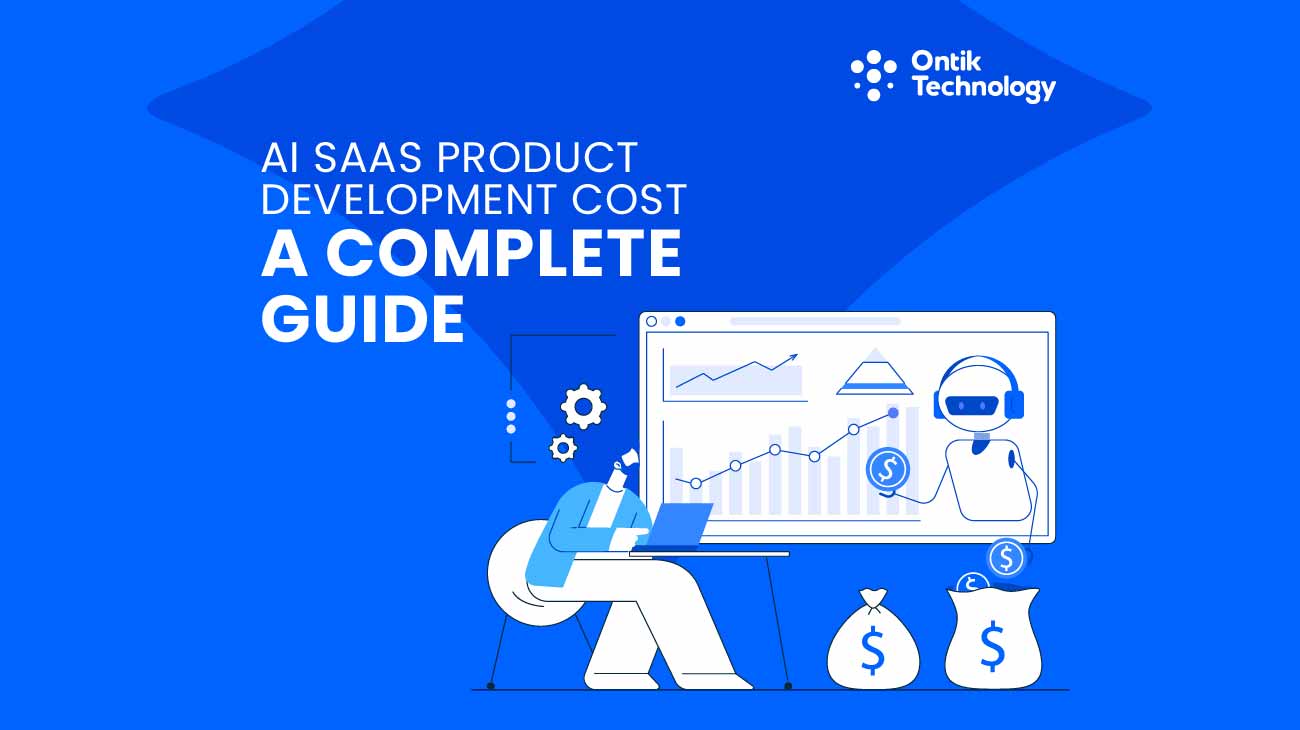

Key Takeaways
- 2026 is the breakout year for AI SaaS market leadership.
- AI SaaS combines SaaS delivery with learning, predictive, and generative intelligence.
- A structured 8-stage process de-risks AI SaaS product development.
- AI SaaS costs $40K–$400K+, with APIs and outsourcing cutting spend.
- Winners focus on narrow pains, workflow integration, and ROI-driven automation.
The AI SaaS market is exploding from $71 billion in 2024 to $775 billion by 2031, a 38.28% annual growth rate. This makes 2025 the pivotal year where early movers building AI SaaS products capture market share.
Success stories like Grammarly serving 30 million daily users, Salesforce Einstein transforming CRM, and ChatGPT reaching 100 million users faster than any software as a service example prove the opportunity. These companies understood the fundamental shift in AI SaaS product development.
Modern customers demand intelligent tools, making manual-workflow SaaS obsolete. This guide defines AI SaaS, details the build process from discovery to scaling, provides development costs, explores generative AI infrastructure options, and shares insights from successful AI-powered SaaS companies.
Whether you are exploring AI machine learning solutions or planning your product strategy, understanding AI SaaS development is essential.
What Is an AI SaaS Product? Understanding the Definition and Core Concepts
An AI SaaS product combines subscription-based software delivery with artificial intelligence capabilities. Unlike traditional software that follows programmed rules, AI powered SaaS platforms make decisions based on data patterns, learning and adapting from every interaction.
To define saas model clearly, traditional software follows programmed rules. AI powered SaaS platforms make decisions based on data patterns. This core difference changes everything about AI SaaS product development, particularly when you are planning custom software development services for your business.
The Building Blocks of AI SaaS Architecture
Every successful AI SaaS platform has four essential components. Your SaaS foundation provides multi-tenant architecture and cloud infrastructure for user management. Your AI layer powers intelligence through machine learning models, natural language processing, and predictive analytics. Data pipelines enable real-time processing and vector databases. Your user interface delivers conversational elements and personalized dashboards that make AI accessible.
AI SaaS Product Ideas Across Industries
- Healthcare: Diagnostic assistants analyze data/images for treatment paths.
- Finance: Fraud detection and personalized investment advisors.
- Marketing: Content generation (blogs, social, ads) tailored to brand voice.
- Customer Support: AI chatbots handle tier-1 inquiries, routing complex issues.
- Sales: AI CRMs predict deal closure and suggest outreach times.
- HR: Resume screening and employee engagement platforms predicting retention risks.
- Legal Tech: Contract analysis for risk identification and compliance.
- Supply Chain: Inventory forecasting and logistics optimization.
- EdTech: Personalized learning and automated, detailed grading systems.
These examples show how AI transforms traditional SaaS into intelligent, high-value systems.
Traditional SaaS vs AI-Powered SaaS
A traditional CRM stores contacts and tracks interactions manually. An AI SaaS platform like Salesforce Einstein analyzes thousands of deals simultaneously, predicts conversion probability, and suggests optimal timing for outreach. This fundamental difference shows how AI solutions for SaaS providers deliver measurable business outcomes rather than just data storage.
The Business Value of Intelligent Automation
AI SaaS products deliver measurable advantages. Automation reduces manual tasks by 40 to 60 percent while personalization drives usage up by 20 to 35 percent. Predictive accuracy exceeds 80 percent in well-trained systems, and scalability becomes exponential as AI handles ten times the workload without proportional support staff increases.
Why Build an AI SaaS Product in 2026? Market Opportunity and Business Case
The AI SaaS market explosion from $71.54 billion in 2024 to $775.44 billion by 2031 represents a once-in-a-generation wealth creation opportunity. McKinsey reports 78 percent of companies already use AI, and 40 percent are aggressively increasing budgets. The window to capture market leadership is closing fast.
Three Unstoppable Forces Creating Historic Opportunity
The technology breakthrough is complete. Foundation models like GPT-4, Claude, and Gemini power billion-dollar companies today. Inference costs plummeted 90 percent since 2020, making AI economically viable for startups. Small teams now build what required research labs three years ago.
Customer demand shifted from interest to expectation. Seventy-three percent of buyers prioritize AI capabilities when evaluating software. After experiencing ChatGPT and Grammarly, customers will not settle for manual workflows anymore.
Competitive dynamics reward speed over perfection. Traditional SaaS companies scramble to retrofit AI into decade-old architectures while burning millions. New entrants build AI-first, capturing frustrated customers. The companies moving now define categories. The companies waiting become footnotes.
The Economics Are Dramatically Better
AI SaaS commands 15 to 30 percent premium pricing and achieves 95 percent retention versus 85 percent for traditional products. AI handles 60 to 80 percent of support inquiries, cutting costs by 40 percent. Automated onboarding improves activation by 25 to 35 percent. Lean teams serve enterprise-scale customer bases.
The 2025 Window Is Everything
Market leaders emerge within 18 to 24 months. By late 2026, markets commoditize and competition shifts to price. Every delay lets competitors build data moats while their AI improves from usage. This opportunity rivals the mobile revolution and cloud migration. The only question is whether you will capture it.
How to Build an AI SaaS Product: Complete 8-Stage Development Process
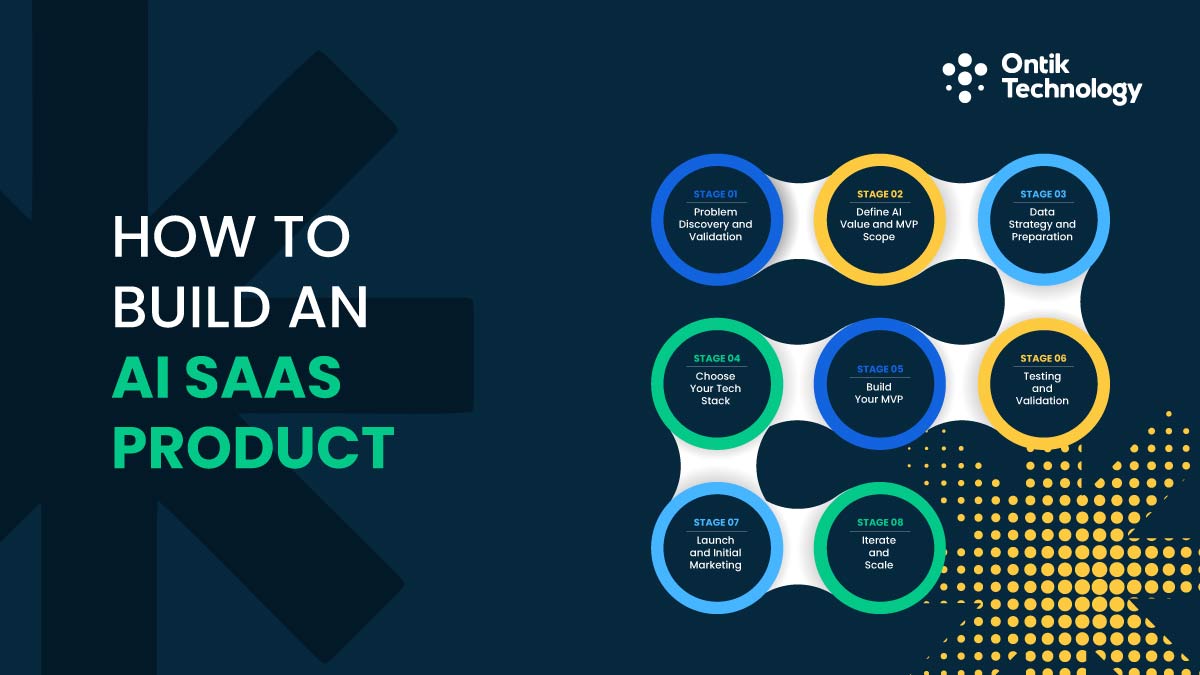
Learning how to build a saas with ai differs from traditional development. You validate both problem and solution fit. This framework provides a proven AI SaaS product development path with validation gates preventing expensive mistakes in AI SaaS projects. Following our proven development process ensures you stay on track from concept to launch.
Stage 1: Problem Discovery and Validation (2 to 3 weeks)
Conduct 20 to 30 customer interviews before coding your AI SaaS platform. Ask about workflows, pain points, and previous attempts. Run competitive analysis of existing AI SaaS tools.
Define success metrics for AI SaaS development. Your deliverable is a problem statement plus user personas. Red flags include starting with technology instead of problems in AI SaaS projects.
Stage 2: Define AI Value and MVP Scope (2 to 3 weeks)
Decide what AI does in your solution. Understanding AI SaaS product classification criteria helps specify whether it predicts, generates, classifies, or recommends.
Define your minimum viable product ruthlessly for AI SaaS projects. Choose one core AI feature plus minimal interface. Here is a SaaS example. Your customer support MVP includes email integration, AI responses, and human review. No multi-channel support or analytics yet in initial AI SaaS development.
If you lack the technical resources to build your MVP internally, consider partnering with experienced development teams. Ontik Technology offers MVP development services that can accelerate your launch timeline.
Their expertise in AI and machine learning, combined with web development and UI/UX design, helps transform your idea into a working product. You can also explore their dedicated development team option for ongoing support, or their custom software development services for more specialized needs.
Stage 3: Data Strategy and Preparation (3 to 4 weeks)
Data determines AI SaaS product development success more than algorithms. Choose pre-trained APIs for general tasks, small datasets under 10,000 samples, or budgets under $100,000.
Build custom models for specialized domains, datasets over 100,000 samples, or when privacy is paramount for your AI SaaS platform. Most early AI SaaS products start with APIs, transitioning to custom models with revenue.
Budget 20 to 30 percent of timeline for data work. Underestimating requirements is why AI SaaS projects fail. If data preparation feels overwhelming, development partners with AI and machine learning expertise can help structure your data strategy from the start.
Stage 4: Choose Your Tech Stack (1 to 2 weeks)
Selecting the best options for generative AI infrastructure affects speed and scalability. Consider OpenAI GPT-4, Anthropic Claude, or Google Gemini for AI SaaS development. Evaluate Meta Llama 3 or Mistral AI for more control.
Vector databases like Pinecone, Weaviate, or Pgvector power semantic search in AI powered SaaS. LangChain or LlamaIndex simplify workflows in AI SaaS projects.
Python dominates AI SaaS development. FastAPI delivers performance while Django offers complete features. JavaScript works for unified codebases when building AI SaaS products. Choose Python for heavy machine learning or JavaScript for real-time features in AI powered SaaS. Many teams leverage web development expertise to build robust frontend interfaces. For Web3 integrations or blockchain features, specialized Web 3.0 development partners can add decentralized capabilities to your stack.
Stage 5: Build Your MVP (8 to 12 weeks)
Your AI team integrates models and engineers prompts for the AI SaaS platform. Application teams create user flows and authentication. Integration connects AI to frontend for complete AI powered SaaS experience.
For founders without technical teams, this stage often requires outside help. A dedicated development team can handle the entire build process while you focus on customer discovery and business development. This approach works especially well for non-technical founders with strong domain expertise.
Your MVP succeeds demonstrating value, completing user journeys, handling load, and collecting feedback for AI SaaS tools. Ship imperfect working products rather than waiting for perfection in AI SaaS product development.
Stage 6: Testing and Validation (2 to 3 weeks)
Testing AI SaaS products requires validating AI-specific dimensions. Functional testing covers user flows. AI testing examines output quality, bias evaluation, and latency for your AI SaaS platform.
Security testing verifies encryption and access controls for AI powered SaaS. User acceptance with 10 to 20 beta users provides feedback. Your deliverable is test reports and launch decisions for AI SaaS projects.
Stage 7: Launch and Initial Marketing (2 to 4 weeks)
Soft launch to waitlists reduces risk for AI SaaS projects. Consider Product Hunt for buzz. Create content demonstrating AI SaaS development expertise.
Monitor metrics daily for AI powered SaaS. Track signups, activation, and usage. Conduct weekly interviews. Focus on first 10 to 50 customers confirming fit for your AI SaaS platform.
Stage 8: Iterate and Scale (Ongoing)
AI SaaS product development continues post-launch. Improve core AI, reduce onboarding friction, and optimize costs in AI SaaS projects. Monitor cost per user for opportunities reducing API calls.
Your scaling checklist ensures sustainable economics at 10x usage, auto-scaling infrastructure, systematized support, metrics dashboards, and validated pricing for AI SaaS platforms. Implementing cloud solutions helps manage infrastructure complexity as you grow. Business intelligence and analytics tools provide insights into user behavior and system performance as your product matures.
Common Pitfalls to Avoid
Overengineering before proving value wastes resources in AI SaaS development. Underestimating data needs hurts AI performance. Ignoring inference costs threatens AI powered saas economics. Neglecting user experience kills AI SaaS products. Skipping validation and treating compliance as afterthoughts create risks in AI SaaS projects.
AI SaaS Development Cost: Complete Budget Breakdown
Understanding saas development costs is critical. Building an AI SaaS product costs $40,000 to $400,000 plus depending on complexity, team location, and technology choices in AI SaaS development.
Three Tiers of AI SaaS Development
Basic AI SaaS MVP costs $40,000 to $80,000 taking 3 to 4 months with outsourced developers. You integrate pre-trained APIs for one feature. Examples include content tools or chatbots for initial AI SaaS projects.
Intermediate AI SaaS Product costs $80,000 to $200,000 taking 4 to 6 months with mixed developers. You use fine-tuned models for 2 to 3 features with polished experience. Examples include support platforms or CRM assistants as AI SaaS tools.
Enterprise AI SaaS Platform costs $200,000 to $400,000 plus taking 6 to 12 months with specialists. You build custom models with compliance and white-label options meeting b2b saas ai startup investment criteria.
Detailed Cost Components
Development team costs consume 50 to 60 percent of saas development costs:
- AI engineers cost $100 to $200 per hour for 200 to 400 hours totaling $20,000 to $80,000
- Backend developers cost $70 to $150 per hour for 300 to 500 hours totaling $21,000 to $75,000
- North American developers charge $100 to $200 per hour
- Eastern European developers cost $40 to $80 per hour
- Asian teams range $25 to $50 per hour when you hire remote developers
Technology costs account for 15 to 25 percent:
- AI APIs at $500 to $5,000 monthly
- Cloud hosting at $300 to $3,000 monthly
- Databases at $200 to $1,500 monthly
Additional budget allocations:
- Data acquisition takes 5 to 15 percent at $5,000 to $50,000
- Compliance requires 5 to 10 percent at $15,000 to $50,000
- Design consumes 5 to 10 percent at $10,000 to $45,000
Smart Ways to Optimize Costs
Reduce saas development costs by 40 to 60 percent with strategic choices. Start with APIs saving $20,000 to $80,000 initially in AI SaaS development.
Strategic outsourcing saves 40 to 60 percent when executed properly. The challenge most companies face is finding developers who understand both AI architecture and SaaS economics. Working with experienced technology partners who have shipped multiple AI products eliminates trial-and-error costs and accelerates time to market by months.
Leverage open-source tools saving $10,000 to $30,000. Roll out features in phases validating core functionality before building advanced AI SaaS tools. Serverless architecture reduces costs by 30 to 50 percent for AI powered saas. Consider team augmentation to scale your development capacity cost-effectively while maintaining control over your product vision and roadmap.
Understanding Your Return on Investment
AI SaaS products achieve payback within 18 to 36 months. Example for AI SaaS development: invest $120,000, charge $100 monthly, $300 acquisition cost. Break-even at 1,200 customers for your AI SaaS product takes 15 to 18 months. AI powered saas commands 15 to 30 percent premium pricing.
Essential Technology Stack for AI SaaS Development
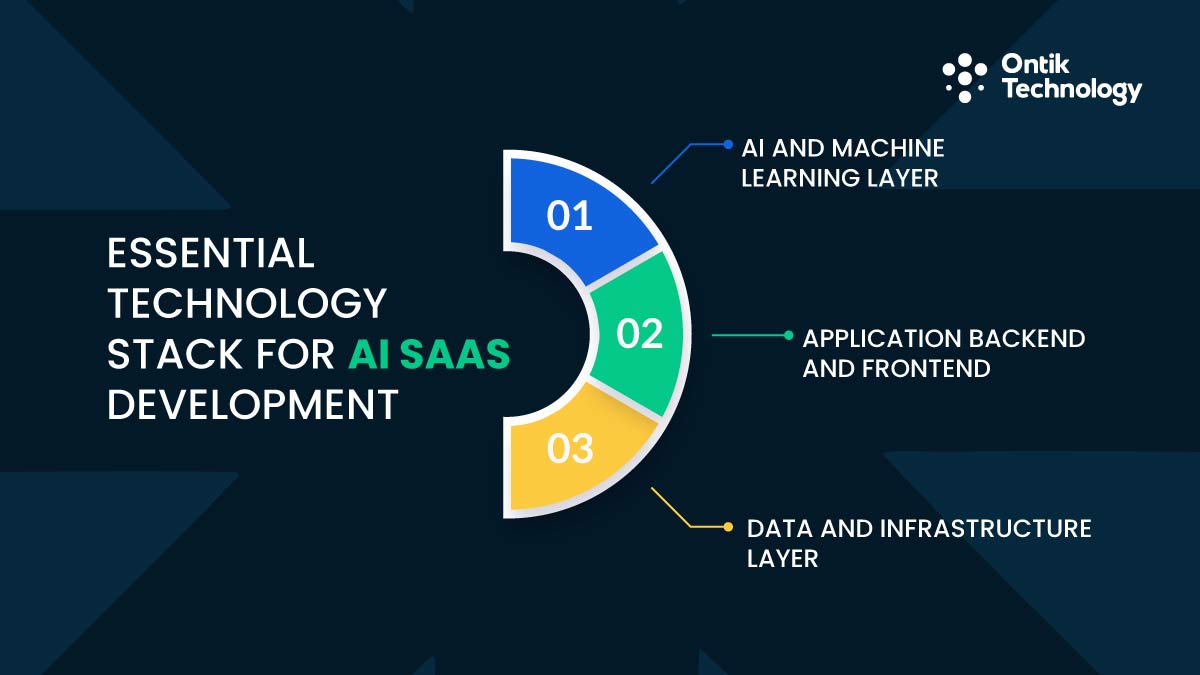
Selecting the best options for generative ai infrastructure determines shipping speed, AI SaaS platform scalability, and ownership costs. Let's examine modern AI SaaS product development architecture layers.
AI and Machine Learning Layer
Foundation models power your AI SaaS product. OpenAI GPT-4, Anthropic Claude, and Google Gemini handle natural language for AI SaaS development. Meta Llama 3 or Mistral AI provide control for AI SaaS tools.
Selection criteria include cost at $0.03 per 1,000 tokens, privacy requirements, and specific capabilities for AI SaaS platforms. Vector databases like Pinecone, Weaviate, or Pgvector enable semantic search in AI powered saas. LangChain or LlamaIndex simplify workflows in AI SaaS projects.
Application Backend and Frontend
Python dominates AI SaaS development. FastAPI delivers performance while Django offers complete features for AI SaaS platforms. JavaScript works for unified codebases with NestJS or Next.js when building AI SaaS products.
Choose Python for heavy machine learning in your AI SaaS product. Pick JavaScript for unified codebases or real-time features in AI powered saas. React plus Next.js is recommended for most AI SaaS development projects. Tailwind CSS enables rapid styling while Shadcn/ui provides components for AI SaaS tools. Professional UI/UX design consulting can dramatically improve user adoption rates.
Data and Infrastructure Layer
PostgreSQL is best for AI SaaS product development, handling relational data plus vector storage through pgvector. MongoDB works for flexible schemas. Redis provides caching for AI SaaS platforms.
AWS offers most services for AI SaaS development while Google Cloud provides excellent AI tools. Docker plus Kubernetes ensures consistent environments for AI SaaS products. Datadog, Sentry, or Prometheus catch issues in AI powered saas. Implementing business intelligence and analytics helps you monitor performance and make data-driven decisions.
Real-World AI SaaS Success Stories: Examples and Case Studies
Examining successful AI SaaS products reveals patterns in positioning and implementation that work for AI SaaS development.
LazyChat: Ontik Technology's AI-Powered Customer Support Platform
LazyChat demonstrates how focused AI SaaS product development solves specific market pain points. Built by Ontik Technology, LazyChat is an AI sales agent that handles customer conversations across Facebook Messenger, WhatsApp, and Instagram automatically.
The platform addresses a critical problem for growing e-commerce businesses where message volume overwhelms small teams. LazyChat's AI responds instantly to customer inquiries, answers product questions, takes orders, and resolves common support issues without human intervention. The system speaks naturally in different languages, adapting to how customers actually communicate.
Key success factors include deep vertical specialization for e-commerce workflows, multilingual AI trained on local market patterns, and seamless integration with platforms businesses already use. LazyChat achieved 30 percent sales increases for clients by eliminating missed conversations and late replies. The pricing model scales with message volume at $39 to $199 monthly, making AI accessible to businesses of all sizes.
This AI SaaS platform shows how understanding specific market needs and building AI that solves real workflow problems creates immediate value. Rather than general-purpose AI requiring extensive configuration, LazyChat works out of the box for its target market. The lesson for AI SaaS development is clear: narrow focus with deep execution beats broad capabilities with shallow implementation.
Grammarly and Salesforce Einstein: Proven Patterns
Grammarly serves 30 million users with AI-powered writing assistance, starting narrow with grammar checking before expanding. Freemium pricing lets users experience AI value before paying. Salesforce Einstein embedded AI into existing CRM workflows, adding predictive scoring and automation to familiar interfaces. Both demonstrate that AI adds most value when integrated into existing workflows rather than requiring new tool adoption.
Common Patterns Across Winners
Successful AI SaaS products begin focused, then expand. Freemium/trials allow users to experience AI value first. Continuous feedback-driven improvement is key. Easy integration via extensions, APIs, or existing tools reduces friction. Vertical specialization outperforms horizontal approaches. Premium pricing is justified when automation value is clear.
Common Challenges in AI SaaS Development and How to Overcome Them
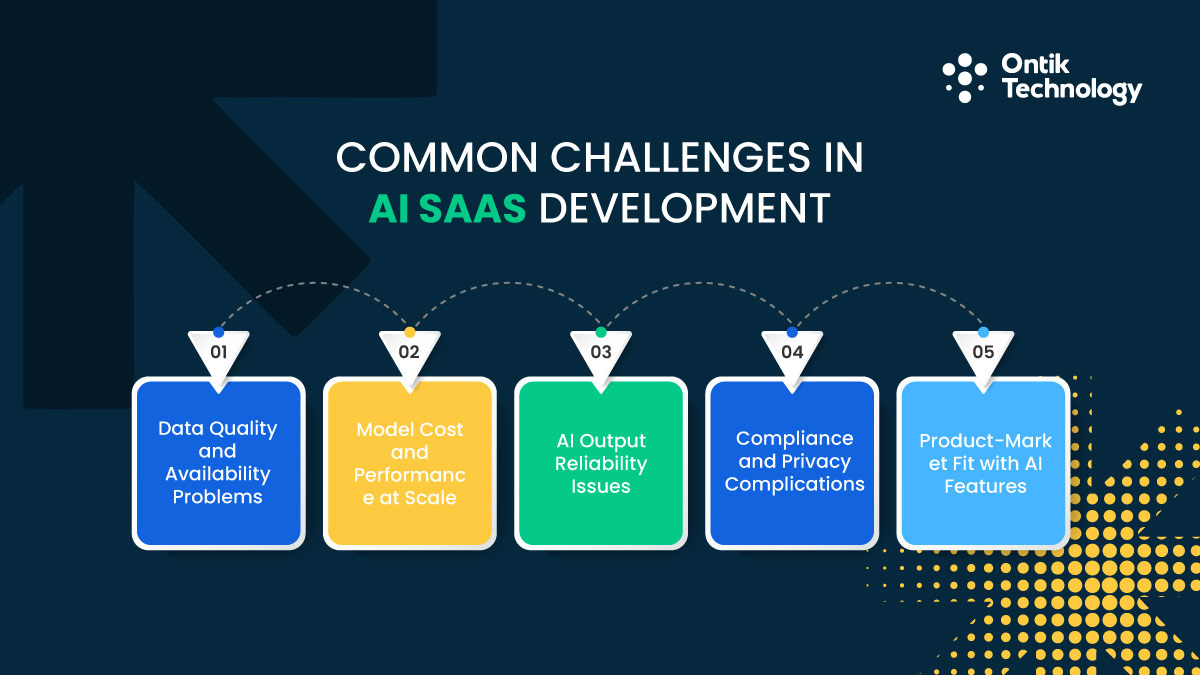
AI SaaS product development introduces unique obstacles that separate successful launches from expensive failures. At Ontik Technology, we have navigated these challenges across dozens of AI implementations, developing proven frameworks that anticipate problems before they derail timelines.
Data Quality and Availability Problems
Most companies lack datasets AI SaaS platforms require. Poor training data leads to inaccurate predictions eroding trust in AI powered saas.
Our approach starts with realistic expectations for AI SaaS development. We use synthetic or public datasets for MVPs and design AI SaaS products that collect training data with clear consent. We establish partnerships with providers like Scale AI and budget 20 to 30 percent timeline for data work, ensuring quality foundations rather than rebuilding later.
Model Cost and Performance at Scale
AI inference costs explode as AI SaaS platforms grow. Token pricing seems cheap but adds up for AI powered saas.
We focus on optimization from day one. Our implementations include caching that reduces API calls by 40 to 60 percent, intelligent model routing that uses smaller models for simple tasks, and fine-tuned open-source models for high-volume operations. We monitor cost per user weekly, catching economic problems before they threaten viability.
AI Output Reliability Issues
AI models hallucinate in AI SaaS platforms. Outputs prove inconsistent across AI powered saas implementations. Bias appears from training data.
We build comprehensive guardrails into every AI SaaS product. Our validation layers check responses before reaching users. We implement human-in-the-loop workflows for critical decisions and run regular bias audits. We communicate AI limitations transparently and define acceptable accuracy thresholds before launching AI SaaS projects.
Compliance and Privacy Complications
AI amplifies privacy concerns in AI SaaS development. Regulations impose strict requirements. Enterprise customers demand certifications meeting b2b saas ai startup investment criteria for AI SaaS platforms.
Our compliance-first approach minimizes data collection, encrypts everything, and implements opt-in mechanisms from the start. We work with legal experts and budget $15,000 to $50,000 for compliance, treating it as investment rather than overhead. This prevents costly retrofits when enterprise customers request certifications.
Product-Market Fit with AI Features
Impressive technology means nothing without solving real problems in AI SaaS projects. Many AI SaaS products have sophisticated AI but poor engagement.
We prioritize problem validation throughout development. Our process measures feature usage, not just accuracy, and includes weekly customer interviews. We focus on outcomes rather than algorithms and define success metrics beyond AI performance, ensuring products deliver business value customers will pay for.
Future-Proofing Your AI SaaS: Scaling and Growth Strategies
Launching MVPs begins AI SaaS product development journeys. Sustainable growth requires strategic scaling across dimensions for AI SaaS platforms. At Ontik Technology, we have guided dozens of AI SaaS products through this scaling journey, understanding exactly where bottlenecks emerge and how to architect for growth from day one through our custom software development services.
Technical Scaling Path
Infrastructure needs evolve as AI SaaS products grow. Stage 1 serves 0 to 100 users with simple monoliths on managed services. Stage 2 supports 100 to 1,000 users separating frontend from backend plus adding caching for AI powered saas.
Stage 3 handles 1,000 to 10,000 users with microservices and horizontal scaling in AI SaaS development. Stage 4 scales beyond 10,000 users with multi-region deployment for AI SaaS platforms. Our cloud solutions team architects this progression, anticipating scaling needs before they become problems.
Model strategies evolve with scale in AI SaaS projects. Start with external APIs, move to fine-tuned models when API costs exceed hosting, then build custom models with competitive advantages in AI SaaS tools. We help clients make these transitions smoothly, avoiding the common pitfall of premature optimization or delayed migration that bleeds budget.
Team Scaling and Business Model Evolution
First 10 customers get served by founding teams plus contractors for AI SaaS development. Growing to 100 customers requires first AI hire plus customer success for AI SaaS products.
Scaling to 1,000 customers adds data engineer and DevOps supporting AI powered saas. Beyond 1,000 customers needs specialized AI teams for AI SaaS platforms. Our dedicated development team model accelerates this scaling by embedding experienced engineers who understand AI SaaS economics. Unlike traditional hiring that takes months, we assemble specialized teams in weeks, maintaining quality standards while you focus on customers.
At launch of AI SaaS projects, use simple tier pricing. During growth, add usage-based components aligning pricing with value for AI SaaS tools. At scale, introduce enterprise custom pricing meeting b2b saas ai startup investment criteria. We have helped clients navigate these pricing evolutions, testing models that maximize revenue without triggering churn.
Metrics That Matter Most
Track Net Revenue Retention targeting 110 percent for AI SaaS products. Monitor Gross Margin targeting 75 percent in AI SaaS development. Watch Customer Acquisition Cost Payback under 12 months for AI powered saas.
Measure AI Feature Adoption ensuring users value intelligence in AI SaaS platforms. Our business intelligence and analytics solutions provide real-time dashboards tracking these metrics, helping teams make data-driven scaling decisions rather than guessing. These strategies provide frameworks for sustainable scaling of AI SaaS projects.
Conclusion
The AI SaaS market offers generational opportunity. With 38 percent plus annual growth through 2031, early movers in AI SaaS product development define categories for decades.
Accessible AI technology, customer demand, and proven business models create ideal conditions for transformative AI SaaS products. Success in AI SaaS development requires solving real problems with appropriate technical architecture using the best options for generative ai infrastructure while scaling sustainably through monitoring and iteration in AI SaaS projects.
Winners will make AI invisible in AI SaaS platforms, focusing on outcomes rather than algorithms in AI powered saas. Start problem discovery this week for AI SaaS development. Conduct 10 interviews validating pain points. Choose technical approaches matching capabilities when you hire saas developer talent. Budget realistically using frameworks covering saas development costs.
AI SaaS products are marathons requiring continuous improvement in AI SaaS platforms. Learn how to create a saas product properly understanding what saas means. The question is not whether to build AI into SaaS but whether to lead or follow in AI SaaS product development. 2025 is the year to lead with AI powered saas. Partner with experienced technology providers to accelerate your AI SaaS journey and turn your vision into reality.
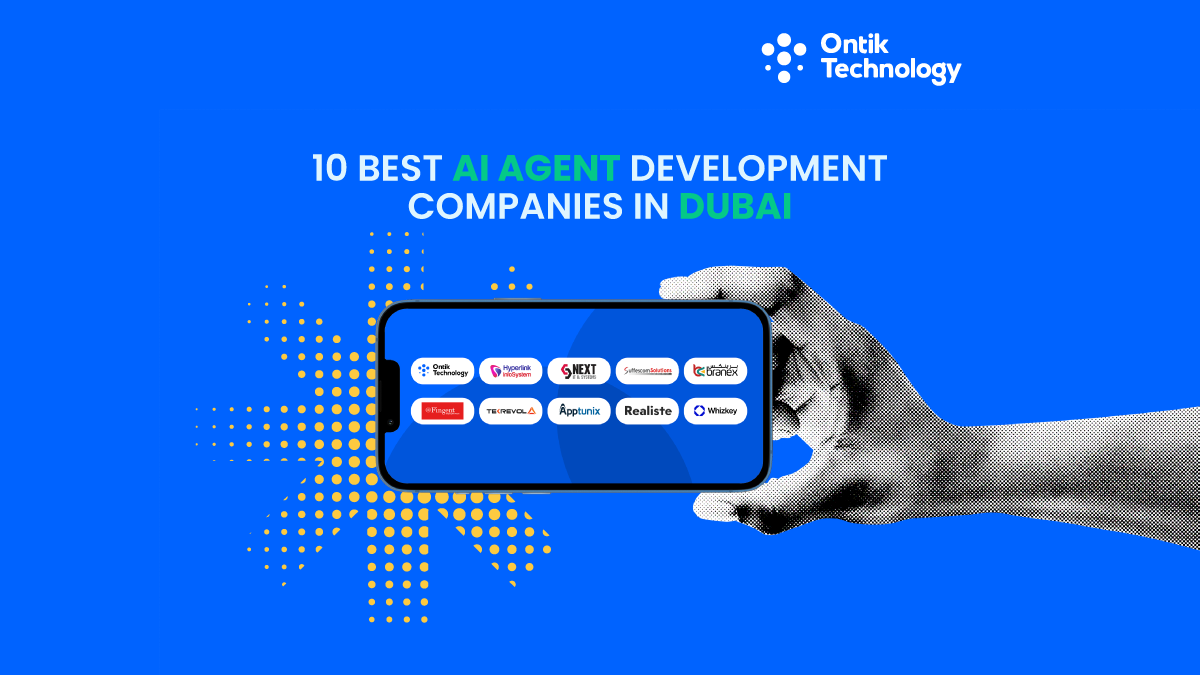

Key Takeaways
- Dubai is a global hub for agentic AI, backed by $100B+ investment, strong government support, and a fast-growing enterprise adoption ecosystem.
- Agentic AI goes beyond automation by enabling autonomous reasoning, planning, and decision-making without constant human input.
- Leading Dubai-based AI companies specialize in generative AI, multi-agent systems, machine learning, NLP, and computer vision across industries.
- Choosing the right AI partner requires focus on real delivery experience, regulatory knowledge, MLOps maturity, and business alignment.
- Successful AI adoption starts with focused MVPs, strong data pipelines, and scalable architecture, not over-engineered solutions.
Dubai commits over $100 billion to artificial intelligence, establishing itself as a global technology leader. More than 800 AI companies now operate across finance, retail, healthcare, and logistics, driving measurable transformation throughout the emirate.
Agentic AI marks a fundamental evolution beyond traditional automation. These systems reason independently, plan strategically, and adapt autonomously to changing conditions, making decisions without waiting for human instructions.
Real-world results validate this investment. Emirates NBD delivers 24/7 customer service through intelligent chatbots. DP World optimizes port operations using predictive analytics. Dubai Customs eliminated thousands of manual work hours with AI productivity engines.
Government initiatives accelerate adoption. The Dubai AI Roadmap 2031 and Smart Dubai provide strategic direction and funding. Free zones offer tax incentives and simplified regulations. This guide examines top agentic AI development companies in Dubai, evaluating technical expertise, delivery records, and capabilities across generative AI, machine learning, and computer vision services.
What is Agentic AI and AI Development Services?
Agentic AI refers to autonomous systems that think, plan, and act independently. These intelligent agents go far beyond simple automation. They understand context, evaluate multiple options, and execute complex tasks without constant human supervision.
Traditional AI follows predefined rules and patterns. You program it to respond to specific inputs with predetermined outputs. Agentic AI breaks free from these limitations. It assesses situations dynamically, considers various strategies, and chooses optimal actions based on its training and defined goals.
AI development services encompass the complete spectrum of building intelligent solutions for businesses. Machine learning services involve supervised, unsupervised, and reinforcement learning techniques. Natural language processing services enhance communication and content understanding across platforms. Computer vision services focus on image recognition, object detection, and visual analytics that transform how companies process visual data.
A practical example clarifies this distinction effectively. A traditional customer service bot answers frequently asked questions by matching queries to a static database. An agentic AI customer service agent understands nuanced customer intent, accesses multiple data sources simultaneously, resolves complex issues through reasoning, and escalates appropriately without any human intervention.
Key differences between traditional and agentic approaches:
- Traditional AI responds only to direct commands while agentic AI initiates actions independently
- Traditional systems follow rigid predetermined rules while agentic systems adapt strategies based on context
- Traditional AI requires constant human input while agentic AI operates autonomously for extended periods
- Traditional models handle single isolated tasks while agentic systems manage complex interconnected workflows
- Traditional AI cannot learn from unexpected situations while agentic systems improve through experience
Artificial intelligence companies in Dubai build both types of systems depending on business needs. However, the shift toward agentic models accelerates as organizations demand more sophisticated automation. AI development companies create predictive analytics services to help businesses make data-driven decisions faster. They deploy generative AI services including intelligent chatbots, automated content generation, and video creation solutions.
The software development company landscape in Dubai now prioritizes seamless integration of AI capabilities. Custom software development projects increasingly incorporate machine learning algorithms and intelligent automation features. This transformation touches every sector from banking apps with fraud detection to e commerce platforms with personalized recommendations.
The Rise of AI Development in Dubai
Dubai positions itself aggressively as a global AI innovation hub. The government launched the UAE AI Strategy with an ambitious goal to make the country a world leader in artificial intelligence by 2031. This comprehensive plan touches education, transportation, healthcare, government services, and economic development.
Smart Dubai initiatives demonstrate tangible commitment to this vision. The Ministry of Health and Prevention uses AI for diagnostic support and healthcare solutions. Dubai actively tests autonomous vehicle integration and intelligent traffic management systems. Government agencies integrate AI to enhance citizen services and streamline operations.
The tech industry in Dubai benefits from several structural advantages. The city offers strategic geographic positioning between Eastern and Western markets. It provides access to world class talent recruited from across the globe. Multiple free zones deliver substantial tax benefits and simplified business setup processes.
Major technology players recognize Dubai's potential. Microsoft has invested $10 billion in OpenAI, advancing AI capabilities worldwide. NVIDIA commands 87% of the GPU market, providing crucial hardware for AI technologies. Apple stands as the largest AI company by market capitalization as of 2024.
Key factors driving AI growth in Dubai:
- Over $100 billion committed to AI infrastructure and development initiatives
- More than 800 companies actively deploying AI solutions across various sectors
- Government-backed programs including Dubai 2030 vision and UAE Digital Government strategy
- Strategic free zones like Dubai Internet City, DIFC Innovation Hub, and Hub71
- Advanced telecommunications and cloud infrastructure supporting AI workloads
- Access to regional markets across Middle East, Africa, and South Asia
- Growing ecosystem of AI talent, researchers, and specialized developers
Local champions emerge alongside global giants. G42 operates as a national-scale AI and cloud computing company focusing on large-scale solutions. Saal.ai provides data-driven cognitive solutions specifically for defense, healthcare, and finance sectors. These firms prove that artificial intelligence expertise grows rapidly within the region itself.
Digital transformation accelerates across various industries throughout the UAE. Retail platforms like Noon and Amazon.ae deploy AI for personalized shopping experiences. Banking institutions employ intelligent systems for real-time fraud detection and sophisticated risk assessment. Logistics companies optimize delivery routes and predict demand patterns with remarkable accuracy.
How to Choose the Right Agentic AI Development Company in Dubai
Selecting the right AI development company requires systematic evaluation beyond marketing claims. You need a reliable partner who delivers intelligent solutions aligned with your business goals. The wrong choice leads to wasted resources and missed opportunities.
Start by verifying genuine local presence and deep regulatory knowledge. Companies operating in Dubai must understand UAE data protection laws and evolving compliance requirements. They should demonstrate proven familiarity with industry-specific regulations governing finance, healthcare, or government sectors.
Technical expertise matters significantly for project success. Request detailed case studies showing completed AI projects with measurable business outcomes. A strong artificial intelligence company showcases successful implementations across different industries. They provide transparent timelines and clearly explain their development methodology.
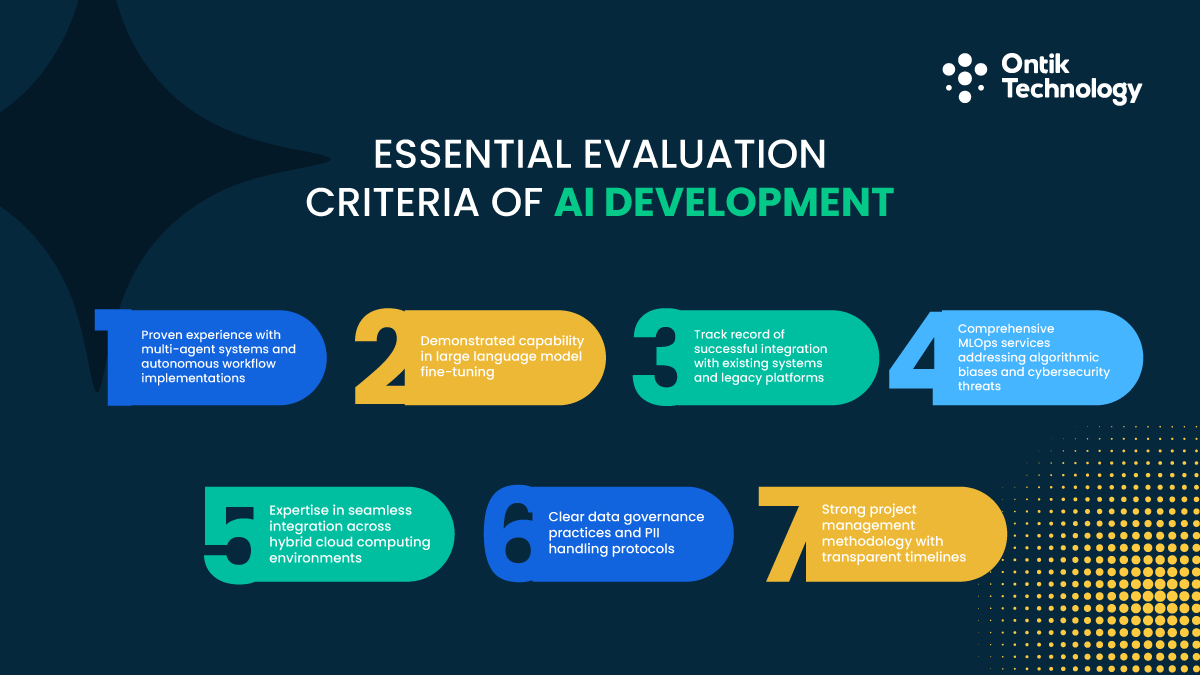
Essential evaluation criteria include:
- Proven experience with multi-agent systems and autonomous workflow implementations
- Demonstrated capability in large language model fine-tuning and deployment
- Track record of successful integration with existing systems and legacy platforms
- Comprehensive MLOps services addressing algorithmic biases and cybersecurity threats
- Expertise in seamless integration across hybrid cloud computing environments
- Clear data governance practices and PII handling protocols
- Strong project management methodology with transparent timelines
Evaluate their technology stack and strategic partnerships carefully. Leading companies work with cutting edge technology from OpenAI, Google, Microsoft, and other AI research leaders. They understand when to recommend proprietary models versus open-source alternatives. Their teams stay current with emerging technologies through continuous learning.
Assessment criteria should include proven project management capabilities. The best development company partners demonstrate clear communication patterns and collaborative problem solving skills. They involve you in critical decisions while independently handling technical complexities.
Critical red flags to watch for:
- Companies lacking documented case studies or published technical white papers
- Firms promising unrealistic timelines without proper discovery phases
- Vendors unable to explain their data governance and security practices
- Providers focusing exclusively on technology without understanding business strategy
- Companies with no references from clients in similar industries
Cost transparency proves essential for establishing trust. Reputable firms provide detailed breakdowns of project scope and comprehensive pricing structures. They explain specific cost drivers including data preparation, model training, cloud infrastructure, and ongoing maintenance. Hidden fees indicate potential problems down the road.
Top 10 Agentic AI Development Companies in Dubai, UAE
Dubai hosts numerous AI companies competing across sectors with varying capabilities. We evaluated firms based on agentic AI expertise, verified project delivery records, technical depth, and documented client success stories. The following companies represent the strongest options for building autonomous intelligent systems.
1. Ontik Technology
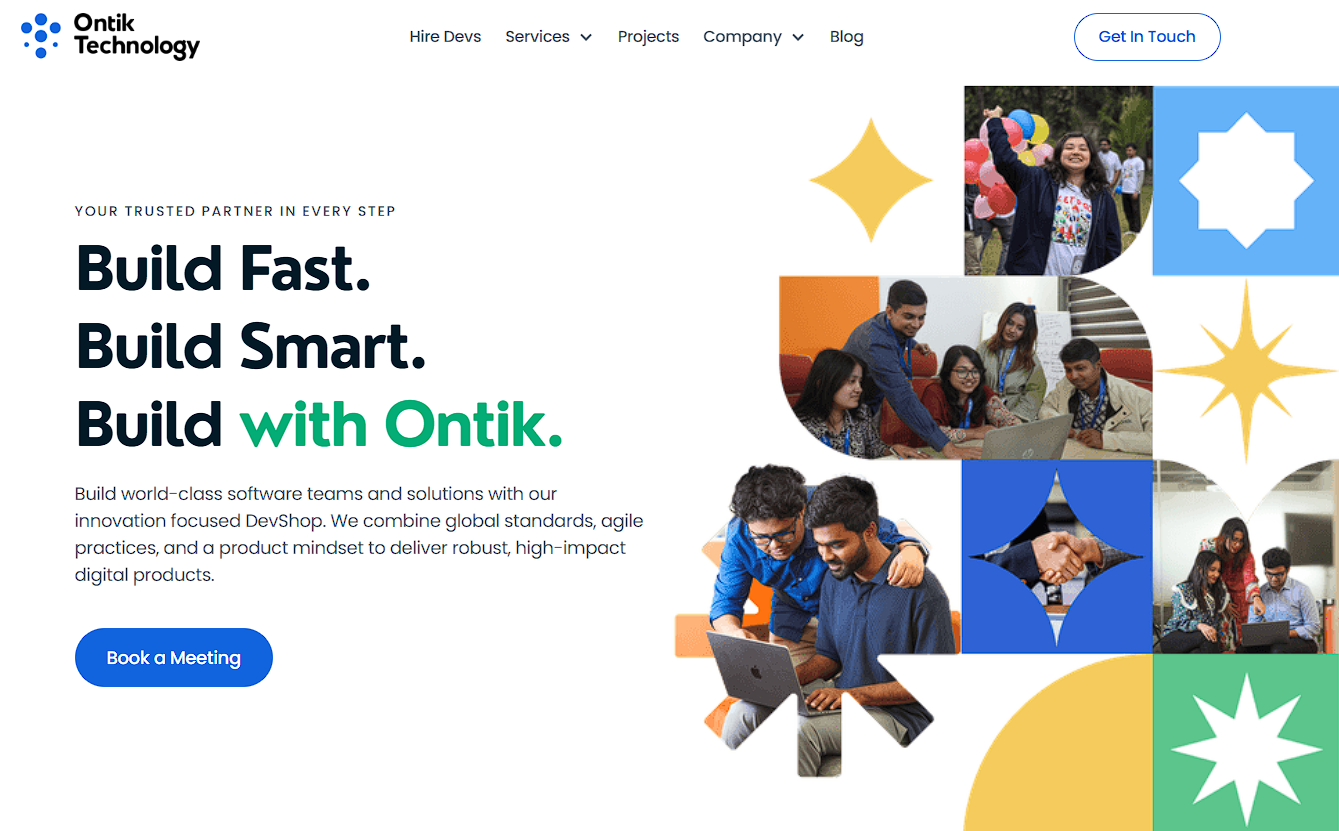
Ontik Technology leads in custom AI and machine learning development for enterprise clients worldwide. With 220+ successful projects across 20+ countries, they specialize in intelligent automation that addresses complex business challenges with measurable results—clients report 35% cost savings, 48% faster procurement cycles, and 58% increased engagement.
Core AI Capabilities: Their expertise spans generative AI implementation, advanced machine learning, and natural language processing. They build AI agents that integrate seamlessly into existing systems, delivering solutions through MVP development, dedicated teams, and custom software development.
Comprehensive Technology Services: Beyond AI, Ontik offers web development, mobile app development, blockchain solutions, UI/UX design, business intelligence, and cloud solutions.
Key Strengths:
- Transparent project management with clear milestone tracking
- Proven on-schedule delivery with 99.95% platform uptime achievements
- Comprehensive MLOps practices ensuring production reliability
- Strong presence in Dubai's software market and AI chatbot solutions
- Flexible staff augmentation services with full team setup in 2 weeks
Industries Served: Finance, healthcare, retail, real estate, and logistics benefit from their domain expertise and agile, collaborative approach.
Recognized by Stanford Seed Spark Program and as a Top 100 Finalist in Google Cloud's AI For Impact challenge, Ontik combines technical excellence with practical business acumen to deliver transformative solutions.
2. Hyperlink InfoSystem
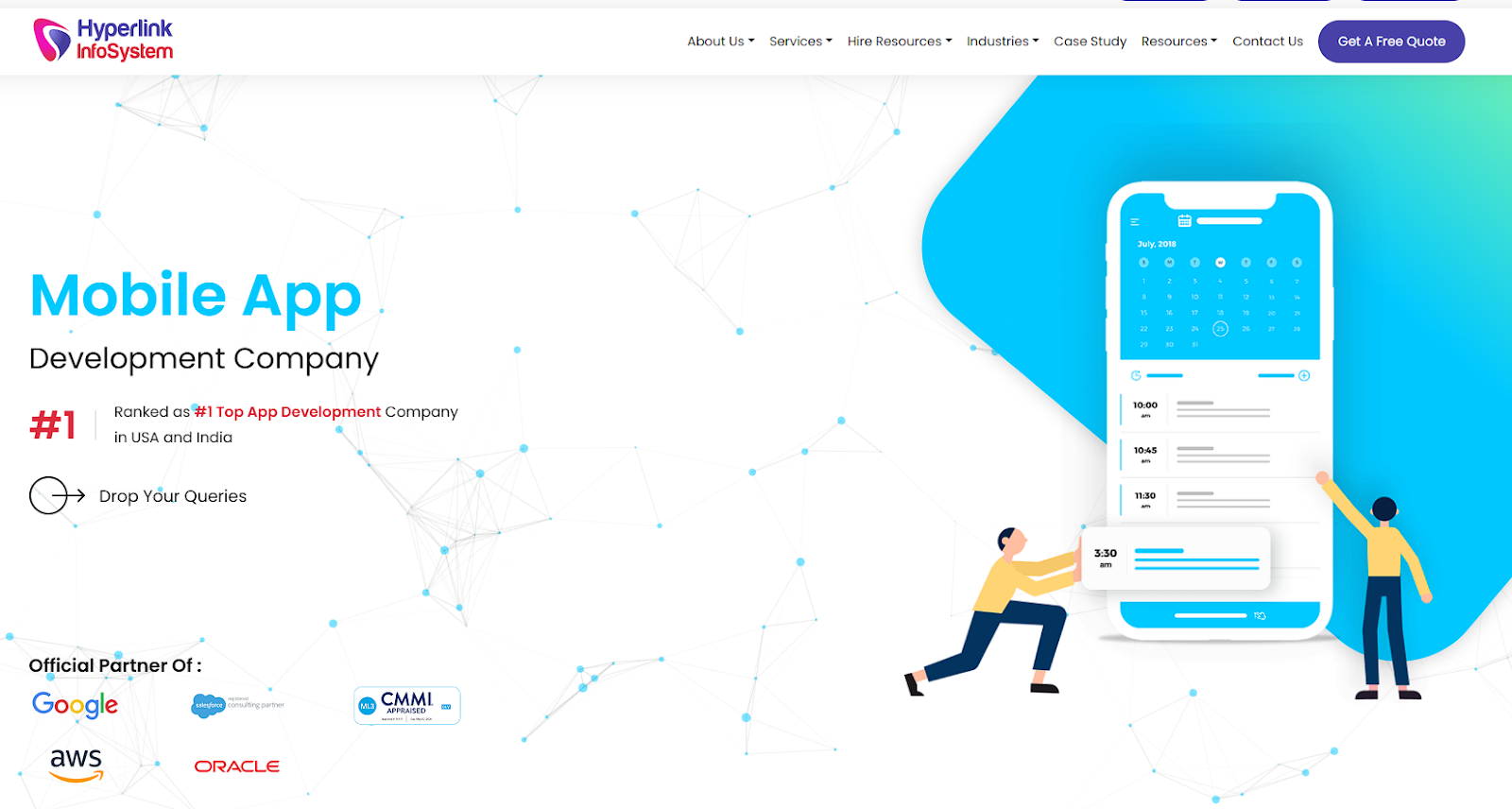
Hyperlink InfoSystem operates as a global software development company with substantial AI capabilities. They have completed over 1,500 transformative projects since their founding in 2009. Their Dubai presence serves clients across the Middle East region with localized support.
The firm specializes in AI powered mobile apps and comprehensive web development solutions. They build sophisticated predictive analytics platforms, intelligent voice assistants, and advanced computer vision applications. Their teams handle high-volume enterprise AI builds while maintaining consistent quality standards.
Notable features and services:
- Proven delivery speed with extensive portfolio demonstrating versatility
- Cost effective solutions without compromising on innovation or quality
- Experience across e commerce, banking, healthcare, and education sectors
- Dedicated teams organized by technology stacks and industry verticals
- Strong emphasis on user experience and practical functionality
3. Next UAE
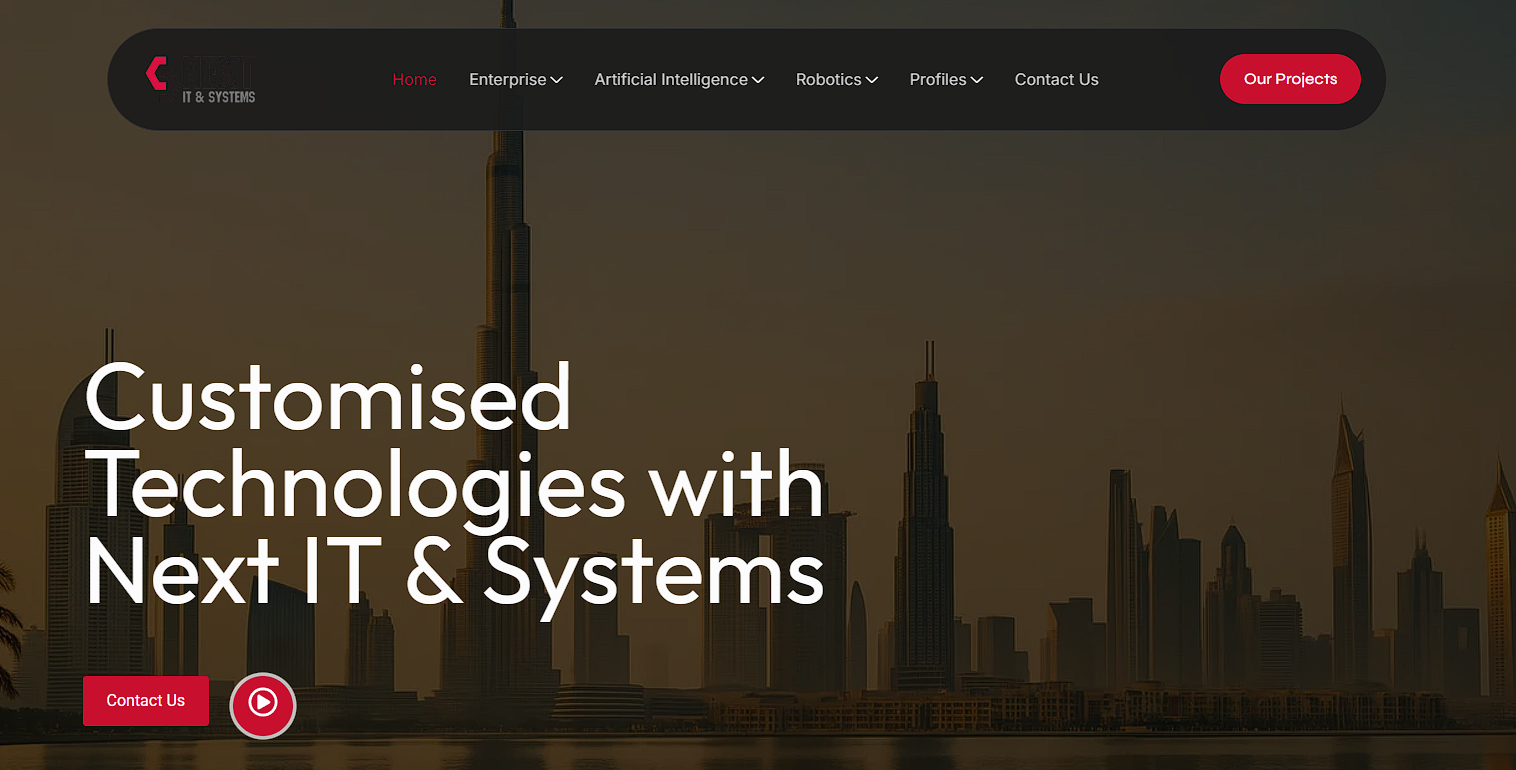
Next UAE positions itself as a comprehensive technology solutions provider with deep local roots. They offer custom software development, digital solutions, and strategic AI integration services. Their approach combines intimate local market knowledge with access to global technological solutions.
The company focuses on helping businesses navigate digital transformation through practical artificial intelligence applications. They build intelligent solutions that genuinely streamline operations and measurably improve customer engagement. Their services span from initial strategy development through complete implementation.
Core advantages include:
- Deep understanding of unique UAE market dynamics and business culture
- Effective navigation of local regulations and compliance requirements
- Consultative approach focusing on solving real problems over technology trends
- Pragmatic methodology resulting in higher user adoption rates
- Primary industries: government agencies, real estate, hospitality, retail
4. Suffescom Solutions
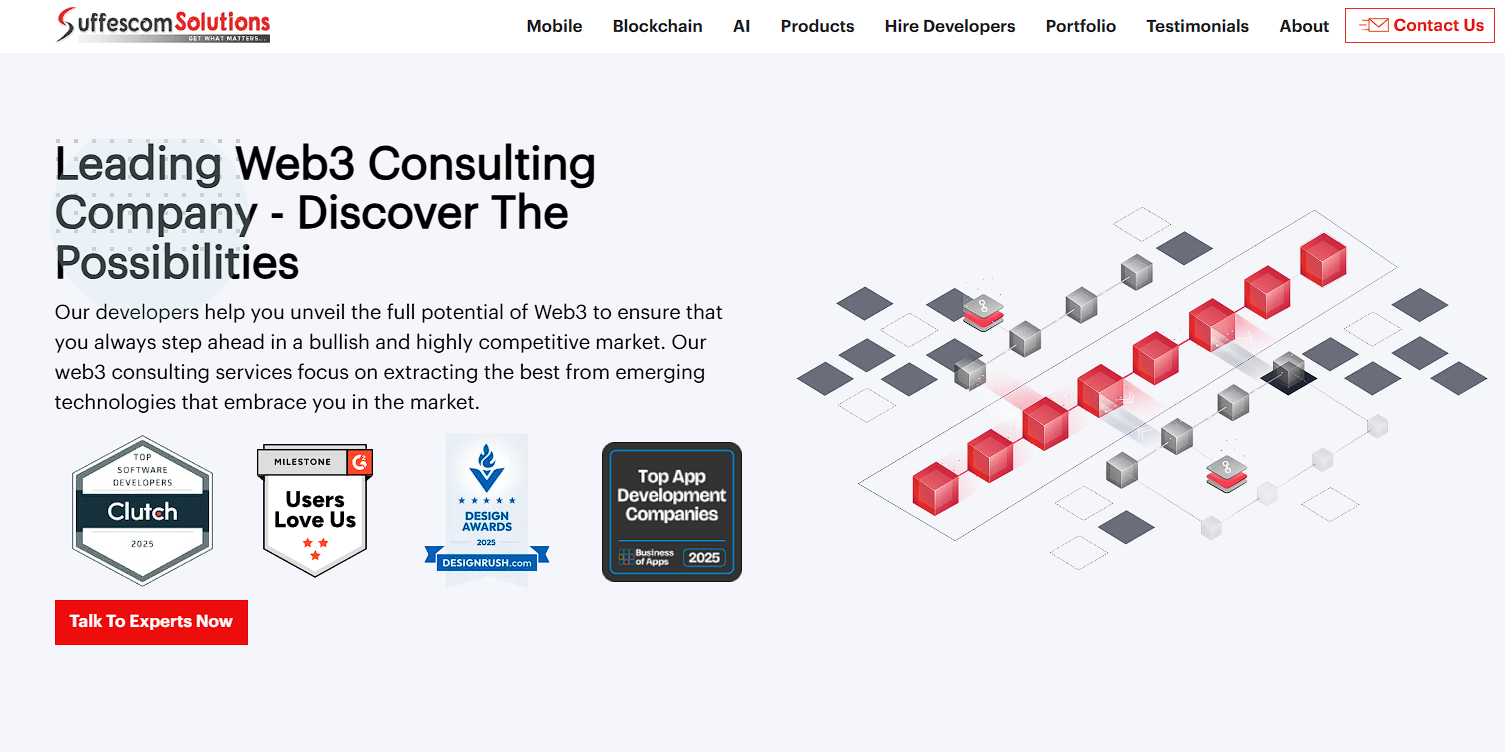
Suffescom Solutions operates across software development and multiple emerging technology domains. They build enterprise AI systems, blockchain solutions, and innovative metaverse applications. Their AI practice emphasizes automation tools and intelligent process optimization that reduces costs.
The company develops AI software for diverse industries with strong emphasis on scalability. They handle entire project lifecycles from initial concept through final deployment. Their technical teams actively stay current with AI research and evolving implementation best practices.
Key differentiators:
- Strong capabilities in complex system integration across platforms
- Successful combination of AI with complementary technologies like IoT and blockchain
- Experience with enterprise-level deployments reflected in robust architecture
- Comprehensive documentation and knowledge transfer programs
- Focus areas: supply chain management, manufacturing, finance, gaming
5. Branex
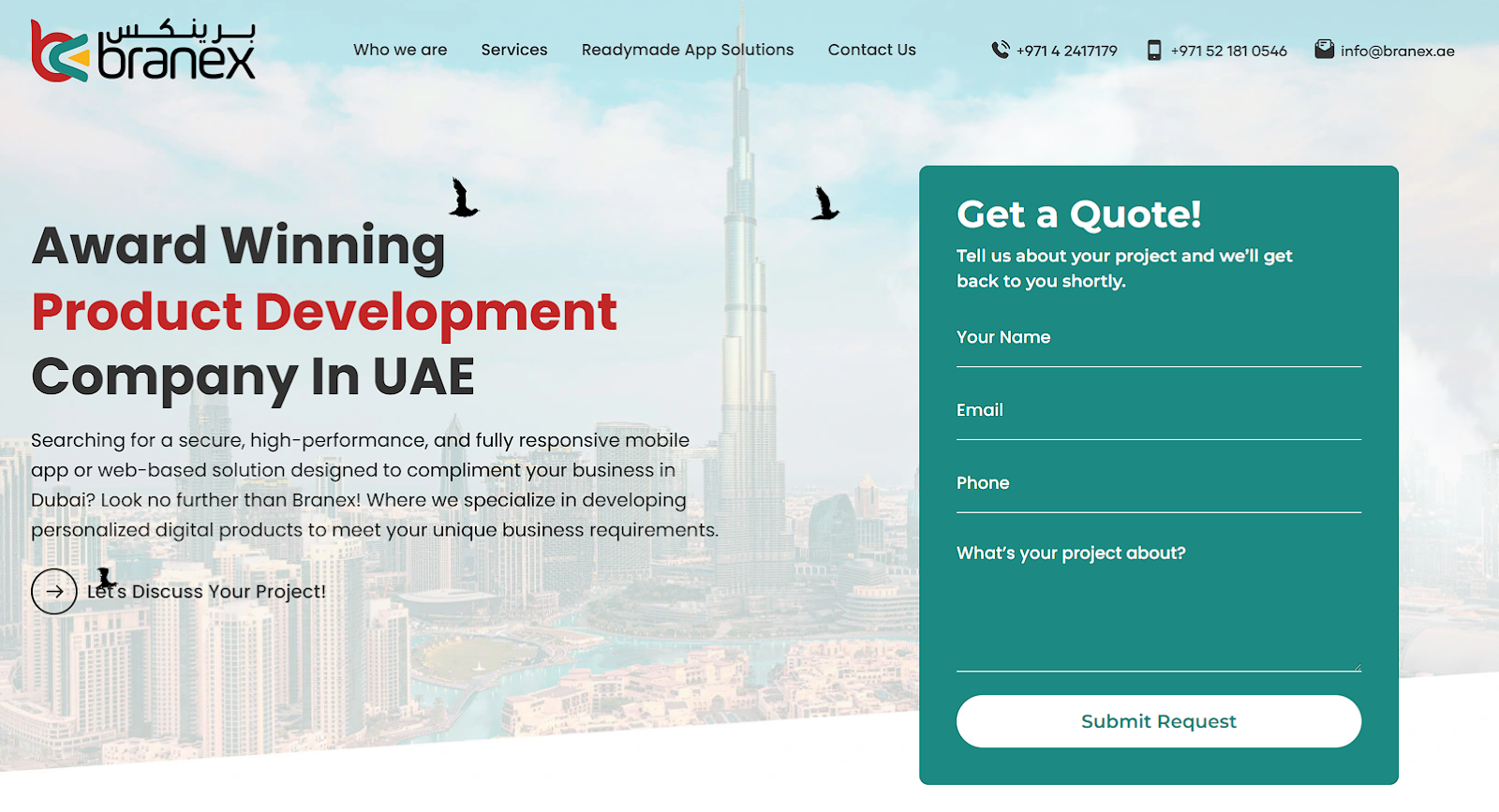
Branex operates as a full-service digital agency with specialized AI capabilities and creative strength. They combine creative design excellence with solid technical development to deliver engaging digital experiences. Their AI practice focuses on enhancing user interactions and intelligently personalizing content.
The firm builds AI driven solutions for both web and mobile platforms with emphasis on user experience. They integrate natural language processing for improved communication between systems and users. Their teams create intelligent dashboards that transform complex data into actionable insights.
What sets them apart:
- Excellence at making sophisticated AI accessible and genuinely user-friendly
- Design-first approach resulting in intuitive interfaces for complex systems
- Ability to explain technical concepts clearly in business terms
- Strong creative applications of AI technology beyond standard implementations
- Specialized in marketing agencies, media companies, corporate websites, consumer apps
6. Fingent
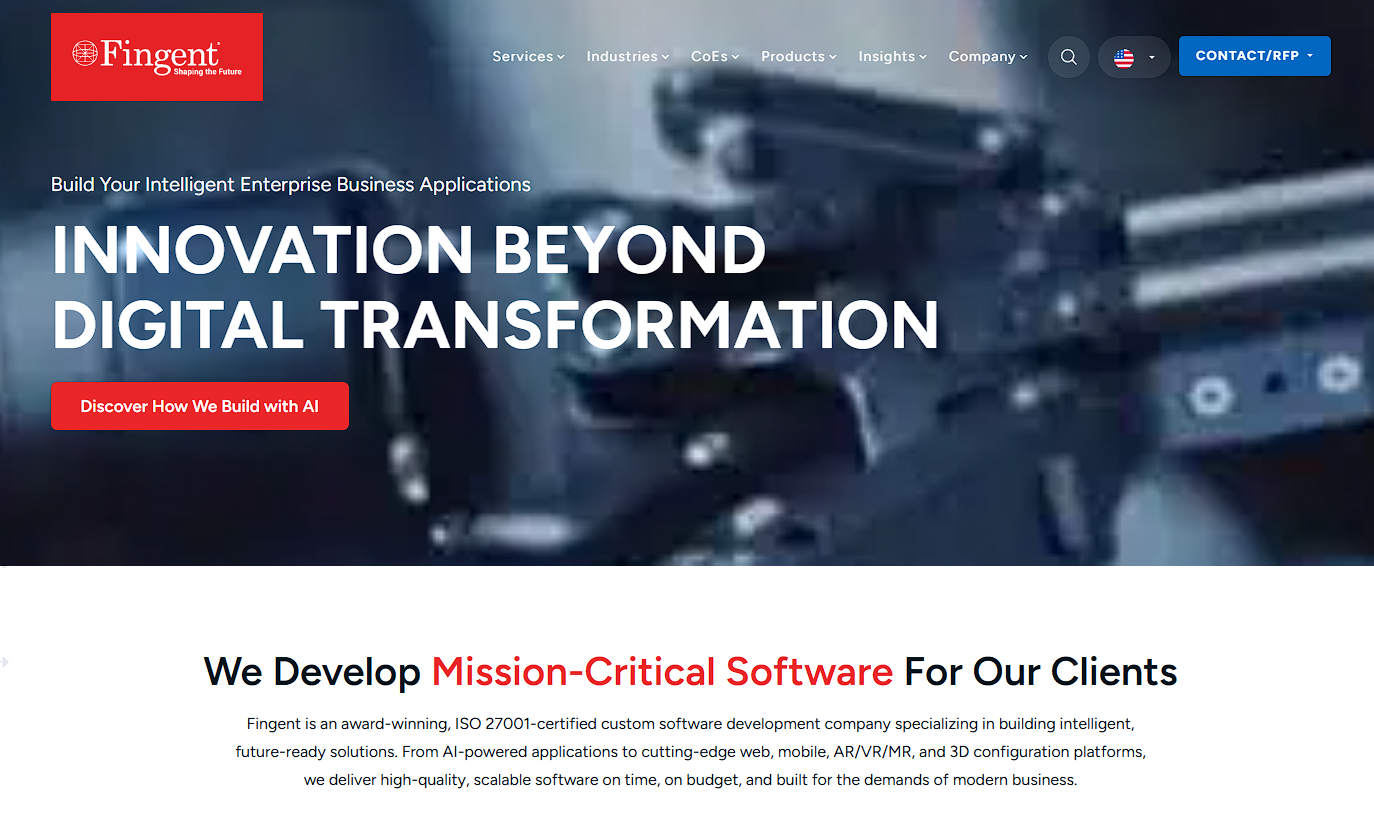
Fingent brings over two decades of custom software development experience to the AI space. They have evolved into a leading AI development company serving enterprise clients across global markets. Their Dubai operations focus specifically on AI implementation tailored for Middle East business requirements.
The company specializes in strategic AI integration that solves clearly defined business challenges. They build accurate predictive models, automate complex workflows, and enhance decision-making systems. Their consulting services help organizations develop comprehensive AI strategies aligned with business objectives.
Primary strengths:
- Deep industry knowledge across heavily regulated sectors
- Understanding of complex compliance requirements and data governance needs
- Enterprise focus enabling effective handling of complex stakeholder requirements
- Strong technical documentation supporting long-term system maintenance
- Key industries: healthcare, financial services, manufacturing, transportation
7. Tekrevol
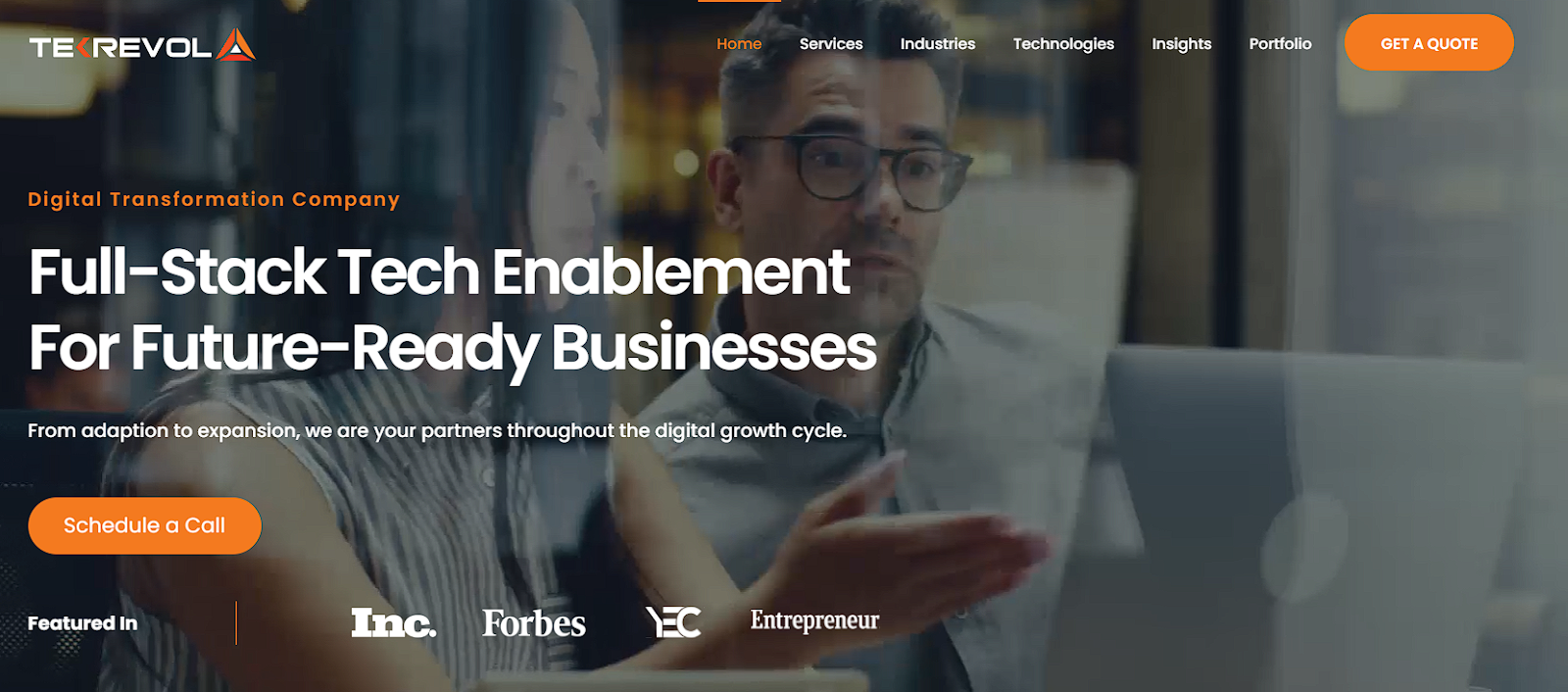
Tekrevol operates as a mobile-first development company with impressive AI capabilities. They build app development solutions that strategically leverage machine learning and intelligent automation. Their dedicated focus on mobile platforms differentiates them in the competitive market.
The company creates sophisticated AI powered features specifically optimized for consumer and enterprise mobile apps. They implement smart recommendation engines, predictive analytics, and natural language interfaces. Their teams optimize ruthlessly for performance on mobile devices and varying network conditions.
Distinguishing features:
- Excellence at creating engaging mobile experiences powered by AI
- Deep understanding of mobile user behavior patterns and expectations
- Rapid development cycles suitable for startups testing new concepts
- Strong client reviews highlighting creativity plus reliable execution
- Expertise across iOS, Android, and cross-platform development frameworks
8. Apptunix

Apptunix positions itself as an innovation-focused development company embracing emerging technologies. They build digital products that incorporate the latest AI and machine learning capabilities. Their comprehensive services span mobile apps, web platforms, and enterprise software solutions.
The firm develops intelligent solutions for businesses actively seeking competitive advantages through technology. They create AI systems that continuously learn from user behavior and optimize automatically. Their approach emphasizes measurable business outcomes over innovation for its own sake.
Notable characteristics:
- Strong combination of technical skills with business understanding
- Projects framed around specific goals like cost reduction or satisfaction improvement
- Iterative development approach allowing adjustments based on early results
- Dedicated teams matched to appropriate expertise for each project
- Primary sectors: retail, healthcare, logistics, education, entertainment
9. Realiste AI

Realiste AI specializes exclusively in artificial intelligence and machine learning solutions. They focus on building production-ready AI systems designed for demanding enterprise environments. Their boutique approach enables deep customization and exceptional attention to technical details.
The company develops sophisticated AI agents, automated workflows, and intelligent decision support systems. They excel particularly at natural language processing and computer vision applications requiring advanced capabilities. Their team includes AI researchers who actively contribute to advancing the field.
Core competencies:
- Deep technical expertise in cutting edge AI methods and research
- Ability to handle complex challenges requiring advanced techniques
- Research background ensuring they remain at forefront of AI innovation
- Collaborative approach creating sustainable long-term implementations
- Specialized focus: financial services, legal technology, healthcare, research institutions
10. Whizkey

Whizkey operates as a comprehensive technology partner for businesses navigating digital transformation. They provide AI development services alongside broader IT solutions and infrastructure support. Their integrated approach addresses infrastructure, applications, and intelligent automation together cohesively.
The company builds AI systems that measurably enhance operational efficiency across various business functions. They automate repetitive tasks, provide predictive insights, and improve decision-making processes. Their services include strategy consulting, hands-on implementation, and ongoing support.
Value propositions:
- Understanding of challenges facing mid-market companies adopting AI
- Accessible entry points without overwhelming clients with complexity
- Bundled services simplifying vendor management and accountability
- Patient approach to change management and user training
- Target markets: SMEs, government agencies, professional services, manufacturing
Emerging Agentic AI Trends in Dubai and UAE for 2025
The AI landscape evolves rapidly as generative AI moves decisively from experimentation to production deployment. Dubai businesses now implement multi-agent systems where multiple AI models coordinate seamlessly. These orchestrated solutions handle complex workflows that previously required extensive human intervention.
Autonomous workflow automation represents a transformative trend across sectors. Companies deploy AI agents that manage complete end-to-end business processes independently. These systems continuously monitor performance, proactively identify bottlenecks, and adjust operations automatically.
Enterprise AI adoption accelerates particularly across regulated industries with strict compliance requirements. Financial institutions deploy sophisticated AI for fraud detection, nuanced risk assessment, and personalized customer service. Healthcare organizations leverage AI for diagnostic support and patient care optimization.
Major trends shaping 2025 include:
- Multi-agent orchestration enabling systems where multiple AI agents collaborate on complex problems
- Agentic RPA combining robotic process automation with reasoning and adaptive capabilities
- Private LLMs allowing organizations to deploy proprietary language models for enhanced data security
- AI-powered analytics delivering real-time insights that drive immediate business decisions
- Sector-specific solutions tailored precisely for finance, real estate, logistics, and healthcare
- AI copilots working alongside employees to enhance productivity across functions
- Autonomous decision systems making operational choices without human approval
AI copilots emerge as powerful productivity enhancers throughout organizations. These intelligent assistants work directly alongside employees, efficiently handling routine tasks and providing contextual recommendations. They access multiple data sources simultaneously and draft initial responses. Human workers focus their energy on strategic decisions while AI handles operational details.
Dubai's government continues aggressively driving adoption through the comprehensive UAE AI Strategy. The Smart Dubai initiative expands AI integration systematically across city services. This creates a valuable testing ground for innovative applications that later scale regionally and globally.
Natural resources sectors actively explore promising AI applications beyond traditional tech industries. Energy companies deploy predictive maintenance systems to reduce costly downtime. Environmental monitoring programs employ computer vision for precise tracking and analysis.
The tech companies in Dubai ecosystem matures with increased collaboration between stakeholders. Startups partner strategically with established firms to bring innovations to market faster. Universities and research institutions contribute meaningfully to AI research addressing specific regional challenges.
Comparing Top AI Companies: Capabilities and Specializations
Choosing among top AI companies requires understanding their unique strengths and specializations. Each firm brings different capabilities, industry focus, and service approaches to projects. This comparison helps you match company expertise precisely with your specific needs.
Project delivery timelines vary significantly by company capabilities and project scope. Simple AI implementations typically require 8 to 12 weeks from kickoff to deployment. Complex enterprise systems demand 20 to 28 weeks for complete implementation. Most companies offer phased approaches that deliver incremental value.
Technical capabilities differ substantially across providers. Some firms excel specifically at natural language processing for conversational interfaces. Others specialize in computer vision for visual analytics and recognition tasks. Still others focus on predictive analytics for forecasting and optimization.
Key differentiation factors include:
- Industry experience with some companies focused on finance while others serve retail or healthcare
- Company size impacting service delivery with larger firms offering comprehensive services
- Geographic presence affecting collaboration quality and understanding of local business culture
- Technology partnerships determining access to cutting edge tools and preferential pricing
- Support models ranging from basic maintenance to comprehensive optimization programs
Company size significantly impacts service delivery models. Larger software development firms offer comprehensive services spanning strategy through maintenance. Boutique AI companies provide highly personalized attention and customization. Match company scale appropriately to your project requirements and ongoing support needs.
AI Development Cost in Dubai
Understanding AI development costs helps you budget appropriately and evaluate vendor proposals effectively. Prices vary considerably based on project scope, technical complexity, and company expertise. Dubai rates reflect the city's position as a premium technology market with access to global talent.
Discovery and strategy phase typically costs AED 30,000 to 90,000. This covers business analysis, technical feasibility assessment, and roadmap development. Smart companies invest here to reduce implementation risks significantly.
Proof of concept projects running 4 to 8 weeks range from AED 70,000 to 250,000. You validate core assumptions and test critical functionality. This phase proves technical viability before full investment commitment.
MVP development taking 8 to 16 weeks costs AED 200,000 to 650,000. You build a working system with essential features. Early user feedback guides further development priorities effectively.
Enterprise rollout requiring 16 to 28 weeks ranges from AED 600,000 to 1,800,000 or more. Full-scale implementation includes integration, testing, training, and deployment across the organization.
Ongoing MLOps and maintenance runs AED 25,000 to 120,000 monthly. This covers monitoring, retraining, optimization, and support to keep systems performing well.
Major cost drivers in AI projects:
- Data preparation including cleaning, labeling, and organizing datasets consuming 40 to 60 percent of budgets
- Model complexity with sophisticated multi-agent systems costing more than simple classification
- Infrastructure expenses covering cloud computing, storage, and API usage
- Token pricing for services like OpenAI adding ongoing operational costs
- Integration complexity when connecting to existing systems and legacy platforms
- Compliance requirements adding security measures and audit capabilities
- Team expertise with senior AI architects commanding premium rates
- Testing and validation ensuring accuracy, fairness, and reliability
Ongoing infrastructure costs include cloud, storage, and API expenses, alongside token pricing for services like OpenAI and data volume/query frequency charges for vector databases (e.g., Pinecone, Weaviate).
Integrating AI into existing, often legacy, systems significantly raises budgets, requiring custom connectors and increasing complexity across multiple platforms. Compliance requirements also add considerable costs in regulated sectors, such as specific data handling for PDPL, enhanced security/audit trails for banking, and stringent medical data protection for healthcare.
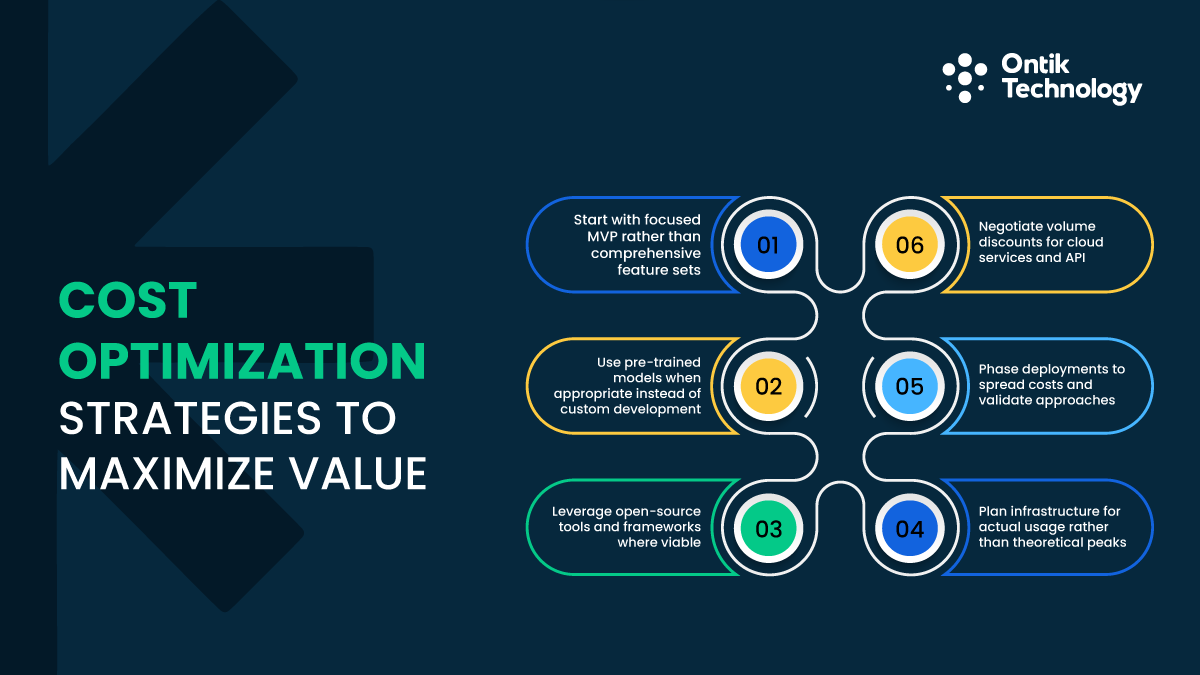
Cost optimization strategies to maximize value:
- Start with focused MVP rather than comprehensive feature sets
- Use pre-trained models when appropriate instead of custom development
- Leverage open-source tools and frameworks where viable
- Plan infrastructure for actual usage rather than theoretical peaks
- Phase deployments to spread costs and validate approaches
- Negotiate volume discounts for cloud services and API usage
Hidden costs frequently surprise organizations without AI experience. Change management and training require substantial investment beyond pure technology. User adoption programs ensure people actually use new AI systems effectively. Ongoing optimization maintains performance as business conditions evolve.
Tech Stack Used by Top AI Development Companies in Dubai
Artificial intelligence companies in Dubai employ sophisticated technology stacks to build robust, scalable AI solutions. Understanding these tools helps you evaluate vendor capabilities realistically and make informed decisions about your AI projects.
Foundation models like OpenAI's GPT, Meta's Llama (open-source), and Google's multimodal Gemini power most AI applications. Frameworks simplify development: LangChain manages prompts and chains AI operations, Microsoft's AutoGen builds multi-agent systems, and CrewAI orchestrates teams of AI agents for shared goals.
Programming languages and runtime environments provide the foundation for implementation. Python dominates AI development due to its extensive libraries and active community support. Node.js serves well for building APIs and integrating AI into web applications. TypeScript adds valuable type safety for larger codebases.
Core technology components include:
- Foundation models: OpenAI GPT, Meta Llama, Google Gemini for language understanding
- AI frameworks: LangChain for LLM applications, AutoGen for multi-agent systems, CrewAI for orchestration
- Programming languages: Python for AI development, Node.js for APIs, TypeScript for type safety
- Vector databases: Pinecone for managed search, Weaviate for hybrid capabilities, ChromaDB for open-source
- Cloud platforms: AWS UAE region, Microsoft Azure, Google Cloud Platform for infrastructure
- Development tools: Docker and Kubernetes for deployment, GitHub Actions for automation
Vector databases store and retrieve embeddings efficiently for semantic search. Pinecone provides managed vector search at impressive scale. Weaviate combines vector search capabilities with traditional database features. ChromaDB offers open-source options for organizations preferring self-hosted solutions.
AWS is strong in the UAE with local data centers for data residency. Azure suits enterprises using Microsoft ecosystems. Google Cloud Platform offers unified AI and infrastructure. Data processing uses Apache Spark for distributed large datasets, Apache Kafka for high-throughput real-time streams, and dbt for transforming raw data into analytics-ready formats.
Development and deployment infrastructure includes:
- Containerization using Docker for consistent environments and Kubernetes for orchestration
- Automated pipelines with GitHub Actions or GitLab for testing and deployment
- Experiment tracking through MLflow or Weights & Biases for model development
- Monitoring systems using Prometheus and Grafana for observability
- Workflow orchestration via Apache Airflow for complex data pipelines
- Security management with HashiCorp Vault for secrets and encryption keys
Security and governance tools protect sensitive information and ensure compliance. HashiCorp Vault manages secrets and encryption keys securely. Apache Ranger provides fine-grained access control across data sources. Data lineage tools track how information flows through systems.
Testing frameworks verify AI system behavior across multiple dimensions. Pytest handles traditional software testing for code quality. Specialized tools evaluate model accuracy, fairness, and robustness comprehensively. Red-teaming techniques identify potential vulnerabilities and failure modes.
Final Thoughts
Dubai's AI ecosystem thrives with over 800 companies deploying intelligent solutions, backed by strong government support and advanced infrastructure. The shift toward agentic AI marks a fundamental transformation—these autonomous systems handle complex workflows independently, adapting to changing conditions without constant human intervention.
Selecting the right development partner demands scrutiny beyond marketing claims. Examine verified delivery records, technical expertise, and proven compliance knowledge. Remember that costs extend far beyond initial development—data preparation, ongoing optimization, and infrastructure require substantial investment.
Success hinges on five critical factors: robust data governance, appropriate model selection, comprehensive monitoring systems, clear business objectives, and organizational readiness for change. Industries from financial services to healthcare already demonstrate measurable benefits through fraud detection, personalized experiences, and predictive maintenance.
Smart organizations start focused, solving specific problems before scaling systematically. Strong data pipelines, rigorous testing, and proper MLOps practices ensure long-term performance. Connect with Dubai's leading AI chatbot solutions providers to transform potential into proven business value.
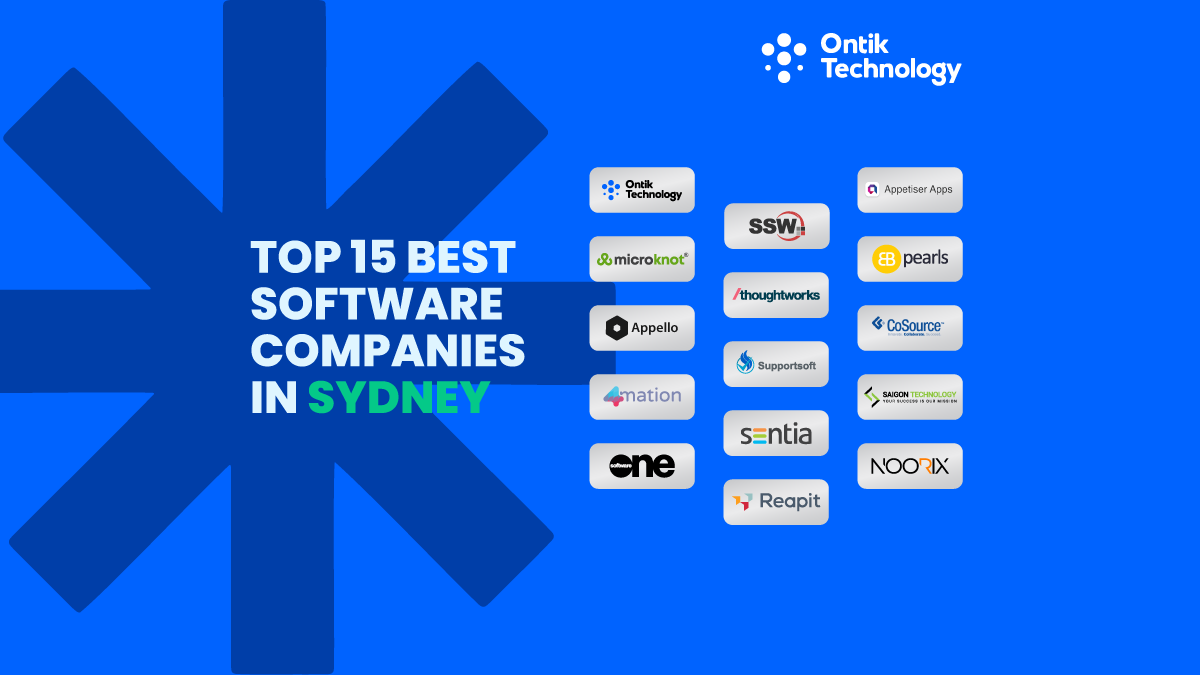

Key Takeaways
- Sydney is a leading Australian tech hub, with a fast-growing software market and deep talent pool across web, mobile, AI and enterprise solutions.
- The guide compares 15 top software development companies in Sydney, covering ratings, pricing, tech stacks, industries, and team sizes.
- Ontik Technology and several other firms offer strong AI, mobile, and custom software capabilities at competitive, startup-friendly rates.
- A clear checklist—experience, services, tech stack, portfolio, approach, pricing, and support- helps shortlist the right development partner.
- Typical Sydney projects range from AUD 10K to 100K+, with costs driven by scope, complexity, platform choice, tech stack, and post-launch support needs.
Sydney has rapidly become one of the fastest-growing tech hubs in the Southern Hemisphere. From AI-powered platforms to mobile apps, software development companies in Sydney are driving digital innovation across industries.
Australia's software development market reached USD 3.25 billion in 2024 and is projected to hit $17.15 billion by 2033. Sydney leads as the preferred base for top IT companies in Sydney. But choosing the right partner is challenging.
Not every software developer matches your vision, timeline, or budget. Some excel at custom software development, others at mobile app development or AI solutions. We have researched, compared portfolios, and analyzed reviews. This guide reveals the top 15 software development companies in Sydney redefining digital excellence in 2025. Let us find your perfect tech partner.
List of Top 15 Best Software Development Companies in Sydney
Below is a curated list of the best software development companies in Sydney, Australia. These firms have been evaluated based on ratings, expertise, case studies, plus client feedback. Each software development agency brings unique strengths to the table, from AI integration to blockchain development to mobile app development.
Here is a quick comparison to help you decide:
Now let us explore each software company in detail.
1. Ontik Technology
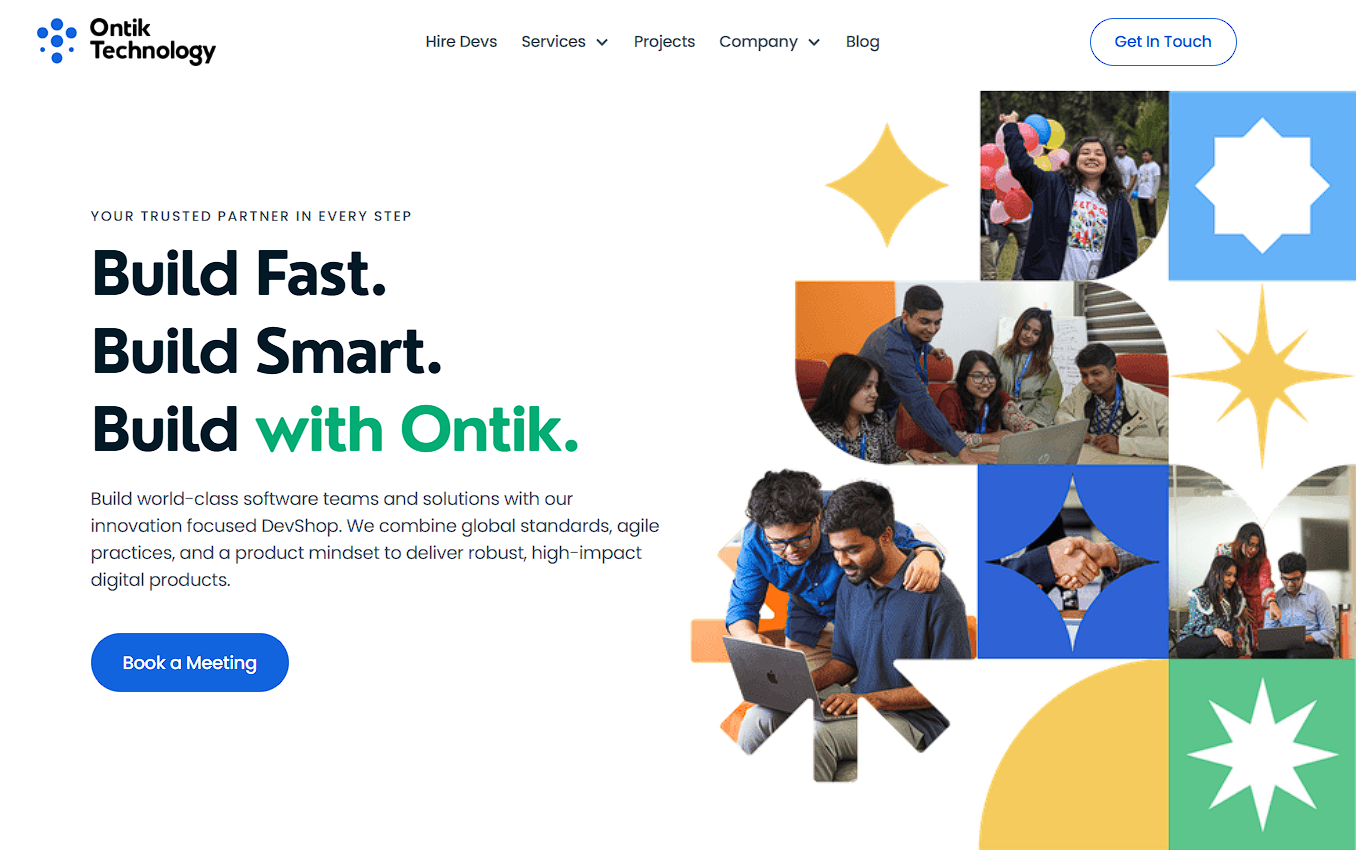
Ontik Technology is a forward-thinking software consulting and development company that prioritizes innovation, research, plus employee growth. Founded in 2016, the company has grown to a team of 50 to 249 highly skilled software developers. They specialize in a wide range of cutting-edge technologies, including web development, mobile app development, cloud computing, artificial intelligence, machine learning, blockchain, plus more.
Core Services
Ontik Technology offers a comprehensive suite of custom software development services designed to meet diverse business needs:
- AI Development (30%): Building intelligent chatbots, image analyzers, and personalized recommendation engines
- IT Staff Augmentation (20%): Providing skilled software developers to support your in-house teams
- Mobile App Development (20%): Creating scalable and secure mobile apps for iOS and Android app development
- Custom Software Development (10%): Tailoring solutions to meet specific business needs
- Web Development (10%): Delivering robust web platforms and SaaS products
- E-Commerce Development (5%): Building online stores with seamless payment integrations
- Low/No Code Development (5%): Rapid prototyping using modern no-code platforms
Why Ontik Technology Stands Out
Ontik Technology specializes in building scalable and secure mobile apps plus web platforms, including SaaS products and AI-powered solutions. As a leading provider in the software development agency space, they focus on delivering tailored solutions that align with client objectives. Their cost rating of 4.8 out of 5 reflects their commitment to delivering exceptional value.
With a minimum project size of $10,000 and hourly rates under $25, Ontik offers competitive pricing without compromising quality. Their team focuses on innovation plus research, ensuring that every solution is future-ready.
Notable Strengths:
- Deep expertise in AI and machine learning integration
- Affordable pricing models suitable for startups and SMEs
- Strong focus on employee growth translates to better project outcomes
- Expertise in blockchain and Web3 technologies
Ontik Technology serves clients globally, making them an ideal partner for businesses in Sydney, Australia looking for cost-effective yet high-quality custom software development.
2. Simform
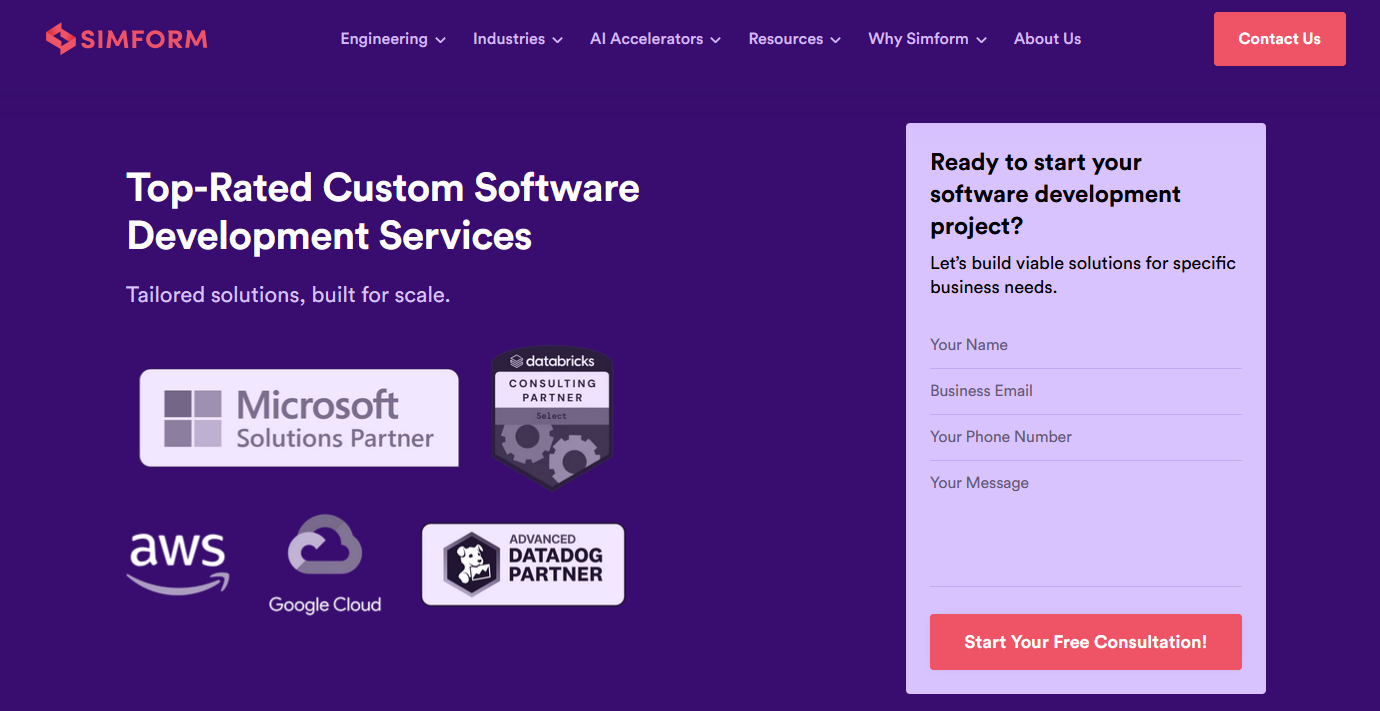
Simform delivers full-stack, end-to-end, and customized software development solutions. Rated 4.8 stars on Clutch (81 reviews), they are highly praised for technical expertise and communication, delivering innovative solutions across various industries.
Core Services
Simform provides a broad spectrum of custom software development services:
- Custom Software Development (10%)
- AI Development (10%)
- CRM Consulting and Systems Integration (plus 7 additional services)
- Cloud-based application development
- Quality assurance and testing services
- Business intelligence and data analytics solutions
Key Highlights
- Strong emphasis on effective communication
- Proven track record with global enterprises
- Agile methodologies enhance collaboration and rapidly achieve solutions
- Transparent project lifecycle management
- Focus on delivering tailored solutions that drive business outcomes
Simform serves Sydney software development clients and offers flexible engagement models, from fixed-price projects to dedicated development teams. Their commitment to continuous improvement keeps them at the industry forefront.
3. TechnoYuga Soft Pvt. Ltd.
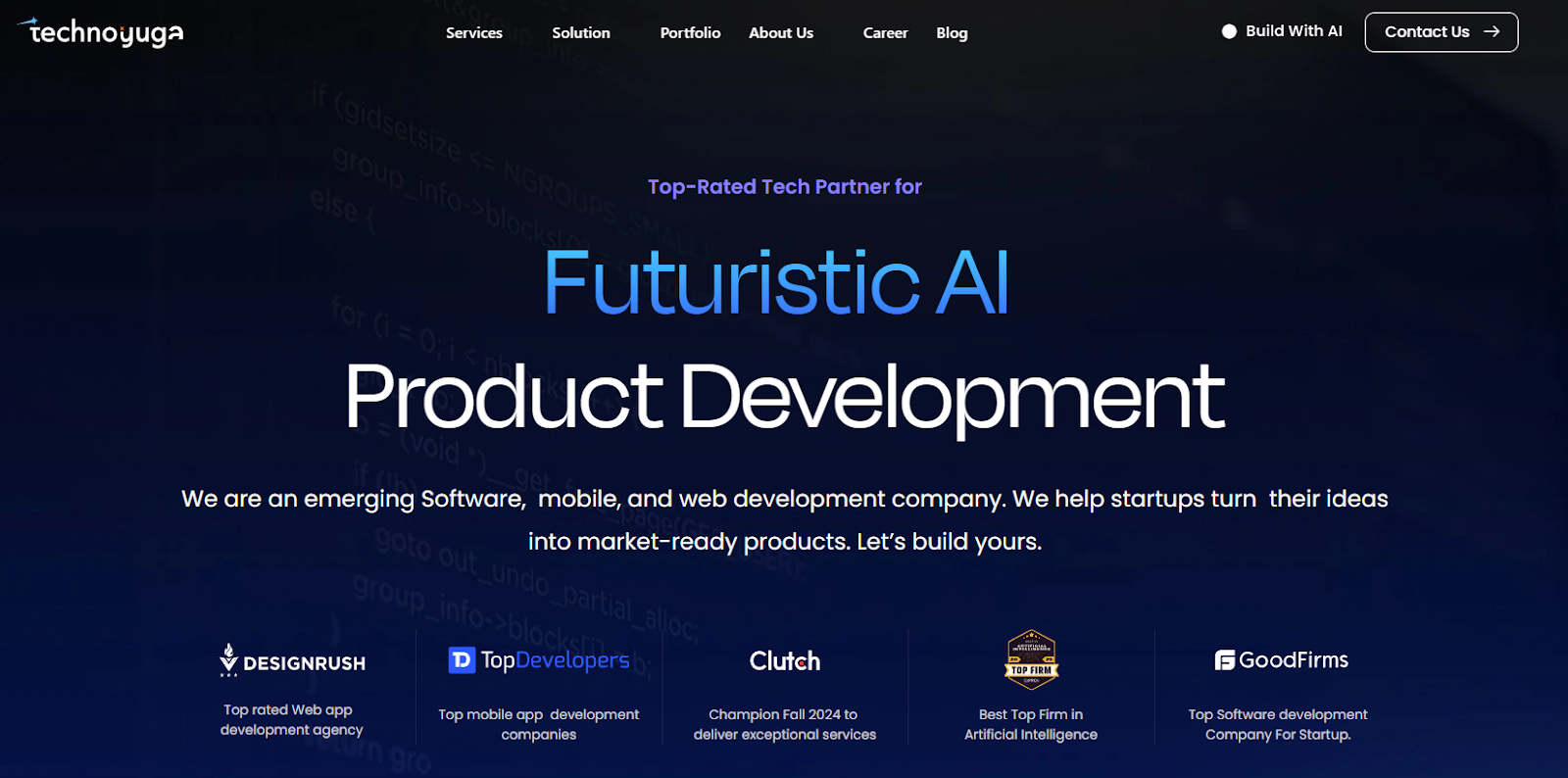
TechnoYuga Soft Pvt. Ltd. is a full-stack development firm offering comprehensive, custom software solutions for a wide range of industries. With a perfect 5.0-star rating based on 64 reviews, TechnoYuga consistently receives positive feedback.
Core Services
TechnoYuga focuses on three main areas:
- Custom Software Development (35%)
- Mobile App Development (35%)
- AI Development (20%)
- Plus one additional service line
Key Highlights
- Exceptional project management and timely delivery
- Scalable and user-friendly applications
- Proactive communication and strategic partnership approach
- User-centric design principles
- Excellence in developing software that addresses specific market needs
TechnoYuga's team of 50 to 249 software developers ensures personalized attention to every project. Their hourly rate of less than $25 makes them one of the most cost-effective options for custom software development in Sydney.
4. Innowise
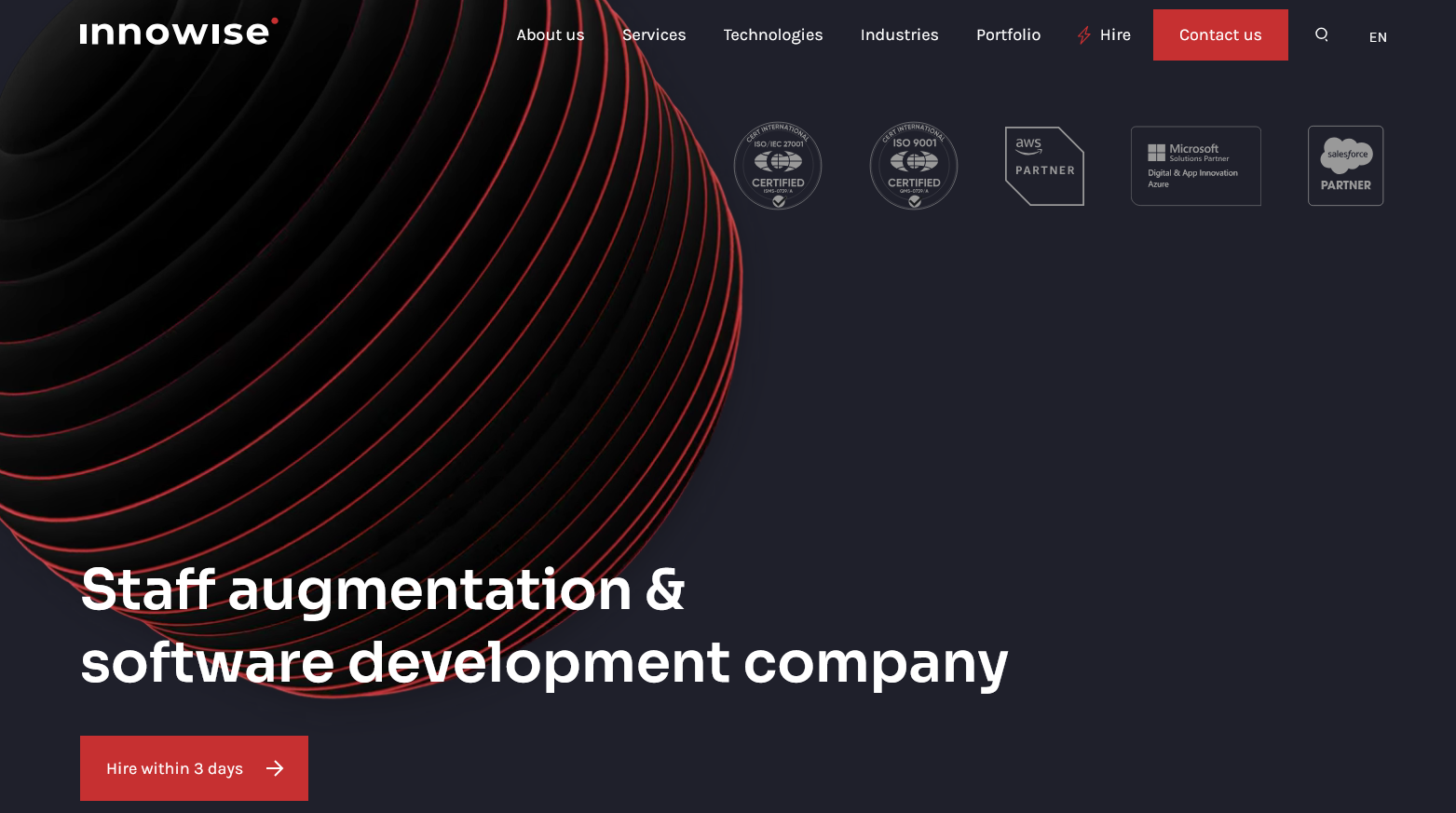
Innowise is a bespoke software development agency that provides end-to-end services, specializing in various sectors, including healthcare and finance. With a Clutch rating of 4.9 stars based on 72 reviews, Innowise boasts a 100% satisfaction rate. This leading provider excels at delivering innovative software solutions for complex enterprise requirements.
Core Services
Innowise offers a diverse range of software development services:
- Custom Software Development (10%)
- AI Development (10%)
- AR/VR Development (10%)
- Plus 7 additional services including cloud solutions and IoT
- Data analytics and business intelligence services
Key Highlights
- Exceptional responsiveness plus technical expertise
- Deliver on time and within budget
- Proven experience in regulated industries like healthcare and fintech
- Strong project management with Agile and Scrum methodologies
- Skilled at delivering tailored solutions for enterprise clients
Innowise serves Sydney with a minimum project size of $10,000 and hourly rates from $50 to $99. Their ability to deliver tailored solutions makes them ideal for complex enterprise needs.
5. EB Pearls
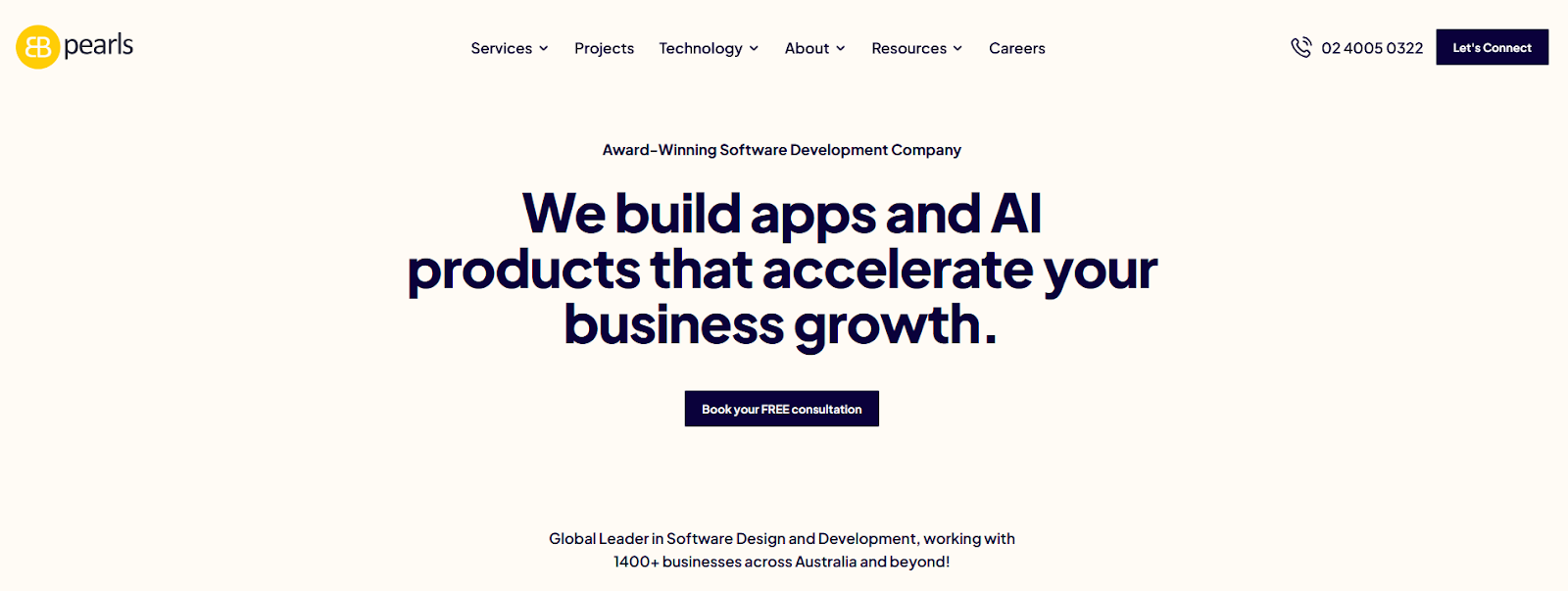
EB Pearls is a full-stack software development company that specializes in creating bespoke, tailored, and custom software solutions. Based in Surry Hills, Australia, EB Pearls has earned a perfect 5.0-star rating based on 59 reviews.
Core Services
EB Pearls focuses heavily on mobile solutions:
- Custom Software Development (15%)
- Mobile App Development (50%)
- AI Development (25%)
- Plus one additional service line
Key Highlights
- Over 200 mobile apps developed
- Expert iOS, Android app development, and hybrid solutions
- Excellent communication skills and professionalism
- Seamless integration into client teams
- Strong track record in mobile application development
EB Pearls' team of 250 to 999 software developers handles both startup projects and enterprise applications. Their hourly rate of $25 to $49 offers great value for mobile app development companies in Sydney.
6. Appinventiv
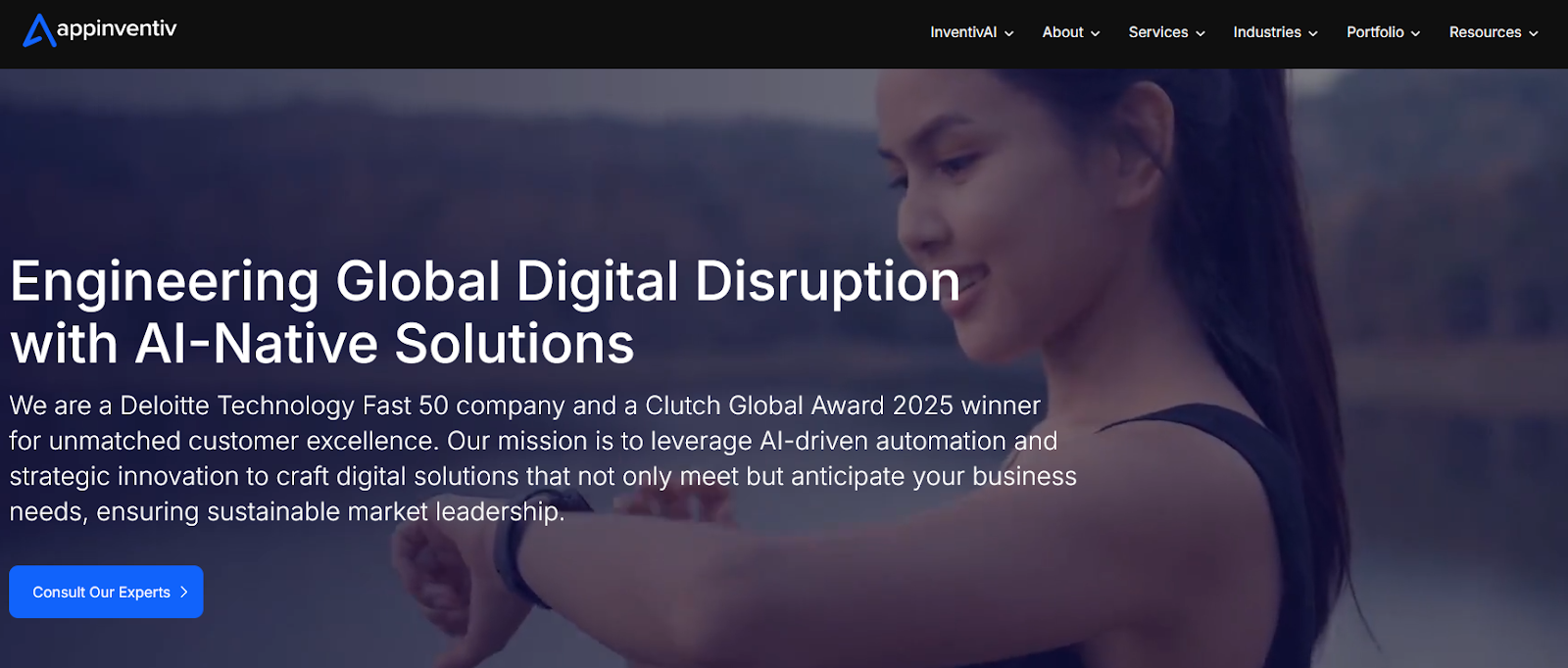
Appinventiv is a custom software development company specializing in end-to-end software development solutions. With a Clutch rating of 4.6 stars based on 89 reviews, Appinventiv has a largely positive reputation. This software development agency focuses on delivering innovative mobile applications and AI-powered solutions.
Core Services
Appinventiv offers three primary software development services:
- Custom Software Development (20%)
- AI Development (40%)
- Mobile App Development (40%)
Key Highlights
- Large team of 1,000 to 9,999 software developers
- Strong AI and machine learning capabilities
- Experience with both startups and enterprises
- Flexible engagement models
- Excellence in mobile application development
Approximately 70% of feedback highlights their strengths in project management, flexibility, plus technical expertise. Their minimum project size of $50,000 makes them suitable for mid to large-scale software development projects.
7. Arcanys
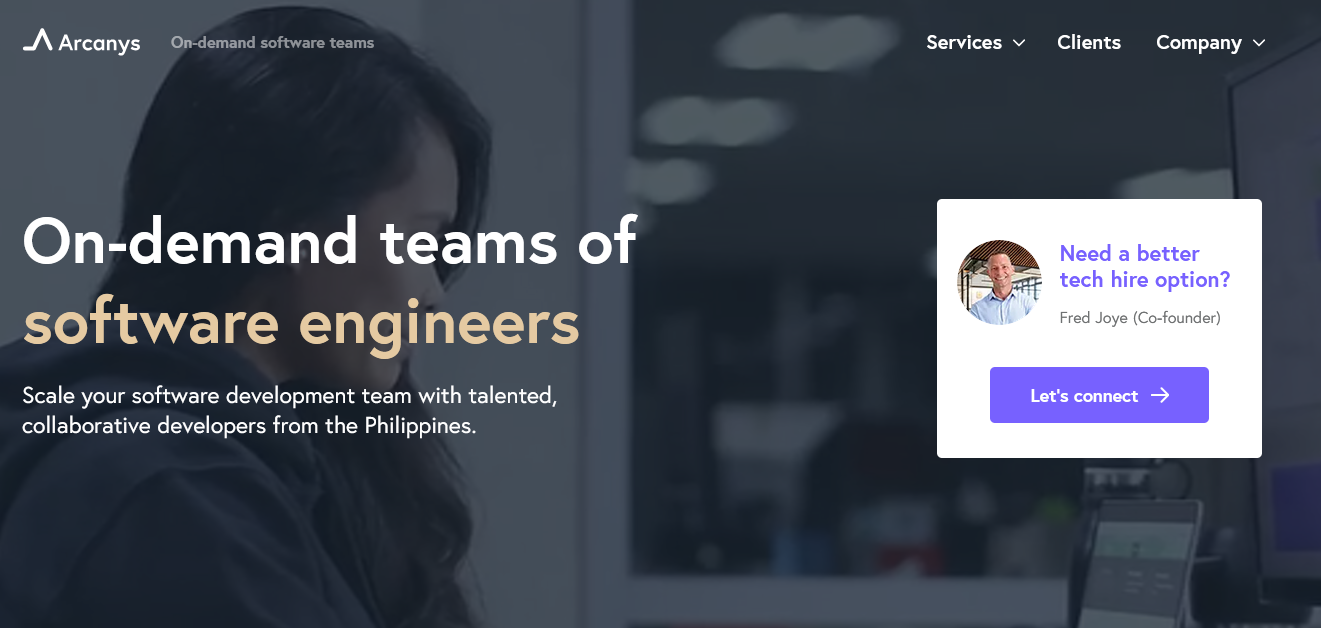
Arcanys offers full-stack software development and custom software creation, providing solutions meticulously tailored to meet the needs of various industries. With a perfect 5.0-star rating based on 25 reviews, Arcanys has earned a reputation for excellence.
Core Services
Arcanys focuses on three main areas:
- Custom Software Development (40%)
- Web Development (30%)
- AI Development (20%)
- Plus one additional service line
Key Highlights
- Long-term partnership approach
- Strong emphasis on code quality and best practices
- Transparent communication throughout development
- Seamless integration into existing workflows
- Expertise in developing software for complex business requirements
Arcanys' team of 250 to 999 software developers provides balance between personalized service and scalability. With a minimum project size of $100,000 and hourly rates of $25 to $49, they cater to enterprise clients.
8. VT Digital

Based in Sydney, Australia, VT Digital is a software development company that specializes in creating tailored, AI-enhanced software solutions. With a perfect 5.0-star rating based on 25 reviews, VT Digital has proven its excellence as a web development company and software development agency.
Core Services
VT Digital offers a balanced service portfolio of custom software development services:
- Custom Software Development (20%)
- Mobile App Development (30%)
- Web Development (20%)
- Plus 3 additional services including data analytics
Key Highlights
- Deep expertise in financial services industry
- Strong focus on compliance and regulatory requirements
- AI-enhanced solutions improving user engagement
- Local Sydney presence with global team capabilities
- Excellence in website development and web application development
VT Digital's team of 10 to 49 software developers ensures personalized attention. With a minimum project size of just $1,000 and hourly rates of $50 to $99, they accommodate projects of all sizes.
9. Hiteshi

Hiteshi is a bespoke software development company specializing in custom software creation plus full-stack development. Based in Sydney, Australia, Hiteshi has earned a perfect 5.0-star rating based on 27 reviews.
Core Services
Hiteshi focuses primarily on two areas:
- Custom Software Development (30%)
- AI Development (70%)
Key Highlights
- Heavy focus on artificial intelligence and machine learning
- Deliver projects ahead of schedule
- Strong emphasis on budget adherence
- Excellent value for money
- Expertise in delivering cutting edge software solutions
Hiteshi's team of 50 to 249 software developers provides the right mix of expertise and personalized service. With a minimum project size of $5,000 and hourly rates under $25, they offer exceptional value for AI development projects.
10. Appello Software
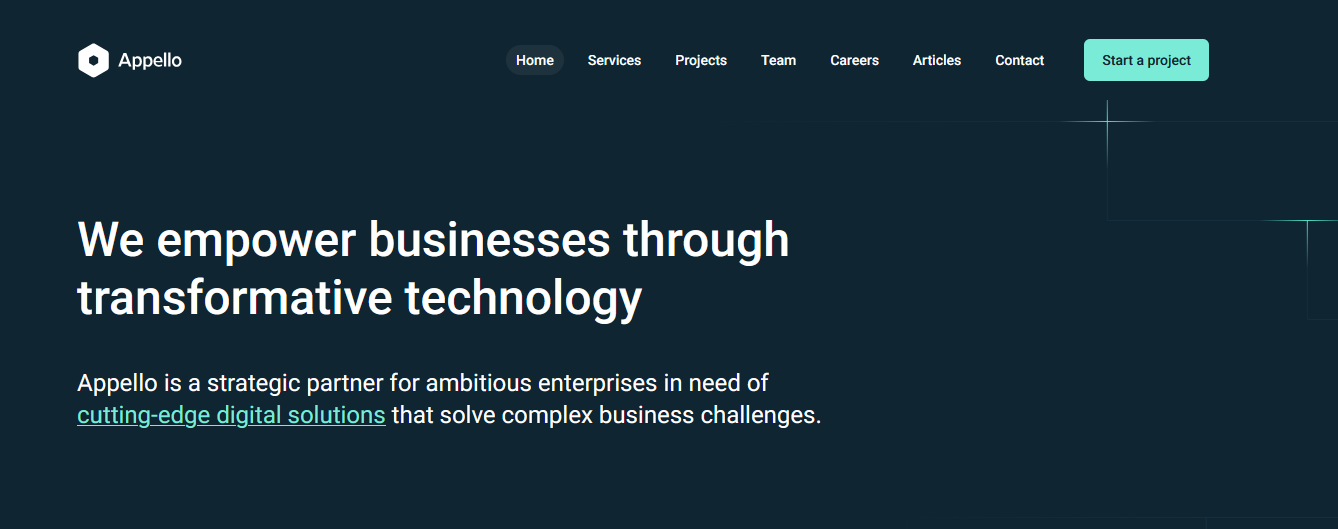
Appello Software is a custom software development company based in Sydney, Australia, specializing in tailored software development solutions, including mobile app development, web-based platforms, plus branding. With a Clutch rating of 4.9 stars based on 33 reviews, Appello has earned strong client satisfaction.
Core Services
Appello focuses heavily on mobile solutions:
- Custom Software Development (35%)
- Mobile App Development (55%)
- Web Development (10%)
Key Highlights
- Specializes in healthcare and fintech industries
- Strong UI/UX design capabilities including custom web design
- Transparent communication and project management
- Local Sydney presence ensures cultural alignment
- Excellence in mobile applications development
Appello Software tailors software solutions and mobile apps for industries such as healthcare and fintech. Their team of 50 to 249 software developers provides focused expertise. With a minimum project size of $50,000 and hourly rates of $100 to $149, they cater to clients valuing premium quality.
11. StepInsight

StepInsight is a custom software development company based in Sydney, Australia, known for expertise in bespoke software solutions. They focus on tailored software development plus end-to-end software engineering services. With a Clutch rating of 4.9 stars based on 11 reviews, StepInsight has built a solid reputation.
Core Services
StepInsight offers a balanced portfolio of software development services:
- Custom Software Development (40%)
- Mobile App Development (30%)
- AI Development (15%)
- Plus one additional service line
Key Highlights
- Strong technical proficiency across multiple platforms
- Client-focused approach with regular updates
- Timely delivery and adherence to budgets
- End-to-end software engineering services
- Proven ability to deliver solutions that meet business objectives
StepInsight's team of 10 to 49 software developers ensures personalized attention to every project. With a minimum project size of $25,000 and hourly rates of $50 to $99, they serve mid-market clients seeking technology solutions.
12. Tech Exactly

Tech Exactly is a custom software development company specializing in tailored and end-to-end software solutions. Based in Kolkata, India, Tech Exactly serves clients globally, including Sydney. With a Clutch rating of 4.9 stars based on 25 reviews, they have earned strong client trust.
Core Services
Tech Exactly focuses on mobile solutions and software development services:
- Custom Software Development (10%)
- Mobile App Development (50%)
- AI Consulting (10%)
- Plus 3 additional services
Key Highlights
- Strong mobile app development capabilities
- Exceptional communication and milestone tracking
- Adaptability to changing project requirements
- Cost-effective pricing model
- Excellence in mobile applications and mobile application development
Tech Exactly's team of 50 to 249 software developers provides the scale needed for diverse projects. With a minimum project size of $5,000 and hourly rates under $25, they offer excellent value for app development.
13. Offshorly
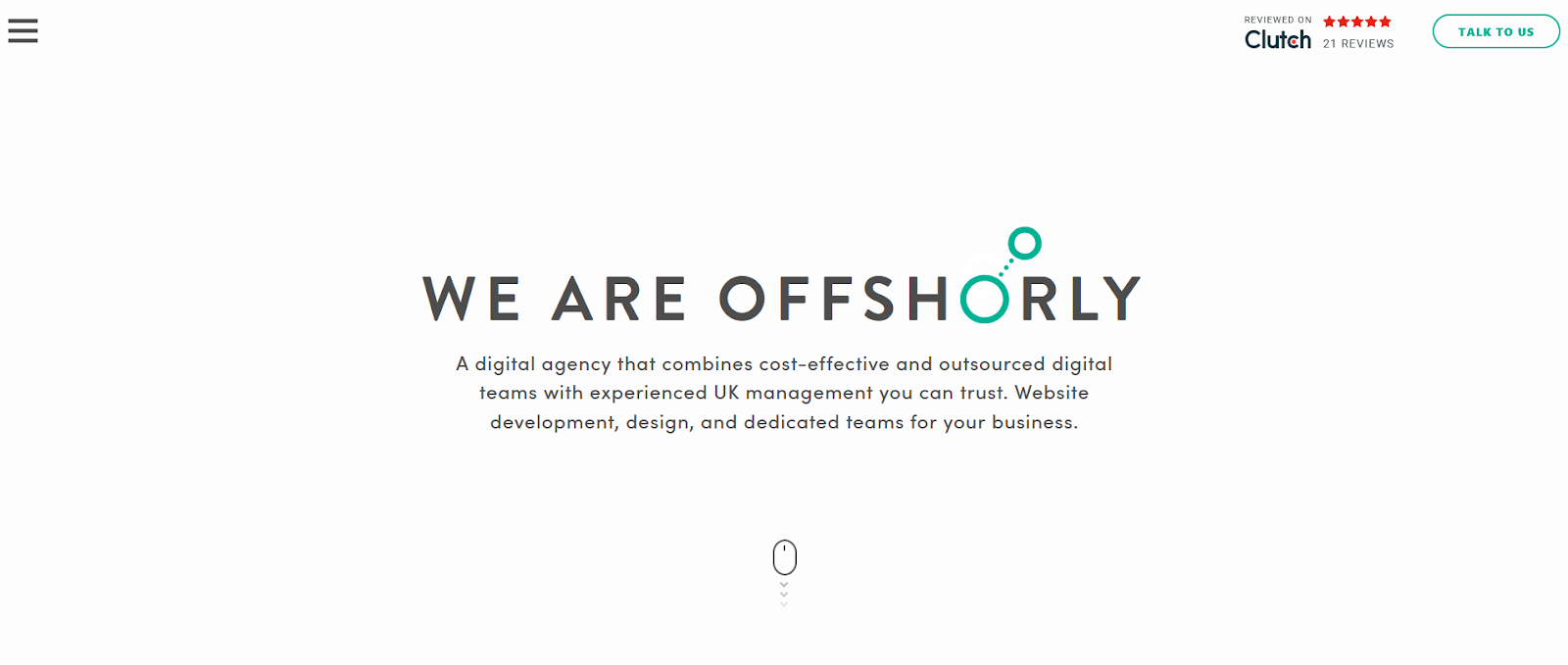
Offshorly is a custom software development company specializing in bespoke software creation plus end-to-end development solutions. With a Clutch rating of 4.9 stars based on 21 reviews, Offshorly has achieved a 100% positive feedback rate.
Core Services
Offshorly offers diverse custom software development services:
- Custom Software Development (20%)
- AI Development (20%)
- Web Design (15%)
- Plus 4 additional services including website development
Key Highlights
- Acts as an extension of your internal team
- Proactive approach to problem-solving
- High-quality deliverables consistently
- Strong commitment to client values
- Skilled at delivering tailored solutions across industries
Offshorly's team of 50 to 249 software developers ensures personalized service. With a minimum project size of $5,000 and hourly rates under $25, they provide cost-effective digital solutions for businesses of all sizes.
14. Sentia

Sentia is a custom software development company based in Sydney, Australia, offering tailored and end-to-end software solutions. With a Clutch rating of 4.8 stars based on 6 reviews, Sentia has built a reputation for excellence as both a software development agency and web development company.
Core Services
Sentia offers a balanced portfolio of software development services:
- Custom Software Development (20%)
- Mobile App Development (25%)
- Web Development (25%)
- Plus 3 additional services including web application development
Key Highlights
- Deep understanding of business objectives
- Strong technical expertise across multiple platforms
- Adherence to timelines and budgets
- Ability to deliver scalable solutions
- Excellence in website development and custom web design
Sentia's team of 10 to 49 software developers provides focused attention. With a minimum project size of $25,000 and hourly rates of $150 to $199, they cater to clients valuing premium expertise.
15. Quickworks
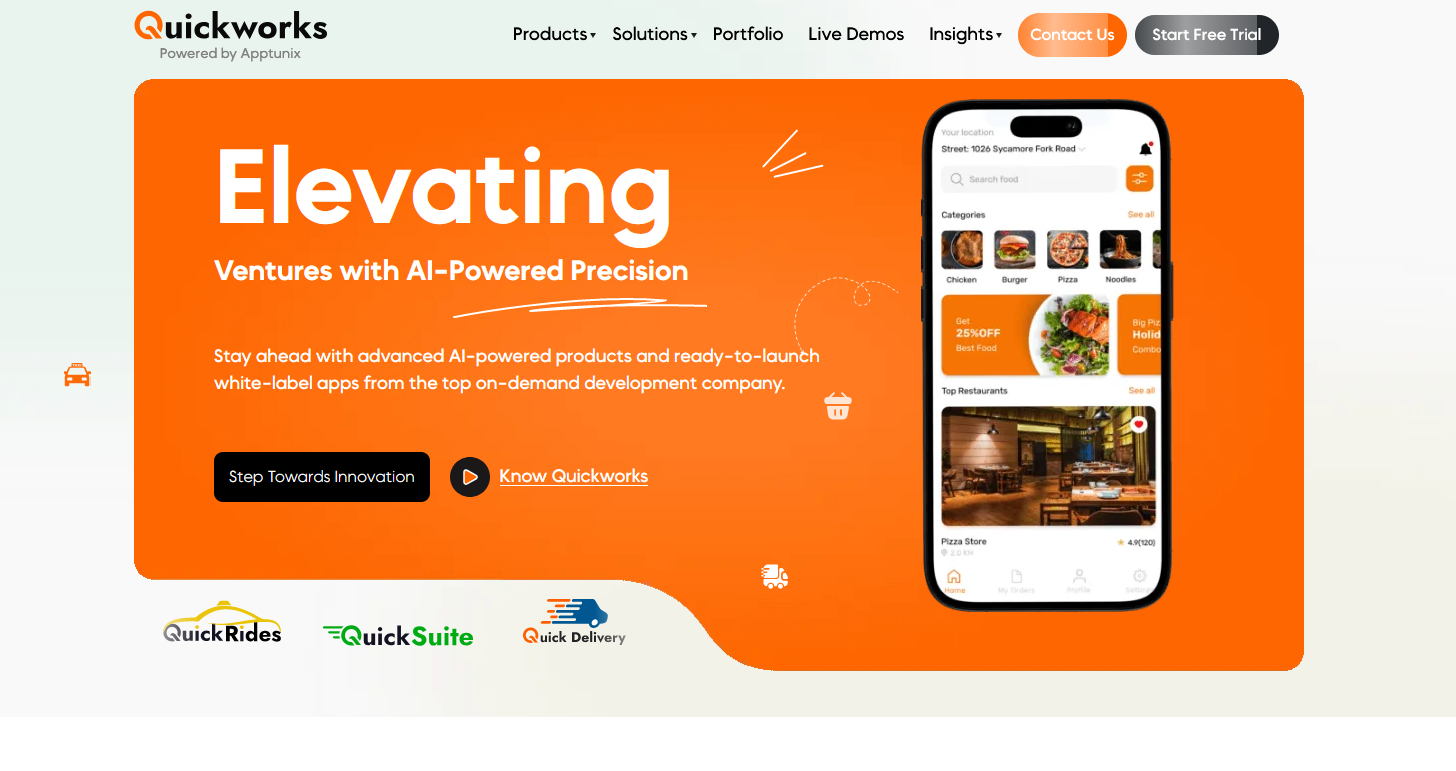
Quickworks specializes in mobile software development for iOS and Android, focusing on delivering ready-to-deploy, white-labeled platforms. Built with scalability, speed, plus simplicity in mind, Quickworks offers pre-built yet customizable tech stack.
Core Services
Quickworks offers specialized solutions:
- White-Label Apps: Prebuilt solutions for food, grocery, taxi, and fleet management apps
- SaaS Integration: AI-powered, customizable apps that can launch in weeks
- iPaaS/Workflow Automation: Drag-and-drop enterprise integration services platform with 1,500 plus pre-integrations
- Post-Launch Support: Regular updates, customer support, and feature enhancements
Key Highlights
- Deep domain expertise in on-demand platforms
- Affordable pricing without compromising quality
- Streamlined development approach using agile methodologies
- Exceptional post-launch support and updates
- Leading provider in white-label mobile applications
Quickworks specializes in mobile software development, building ready-to-deploy iOS and Android app development solutions that are white-labeled and fully configurable. Their plug-and-play architecture reduces development time by up to 70%, helping businesses launch within weeks. Their platforms are backed by robust APIs, high-level security, plus flexible UI modules.
Now that you have discovered the top software development companies in Sydney, let us dig deeper. How do you actually choose the right one? Because not every great name will be the right fit for your business. Here is what to consider before making your move.
Why Choose the Best Software Development Companies in Sydney?
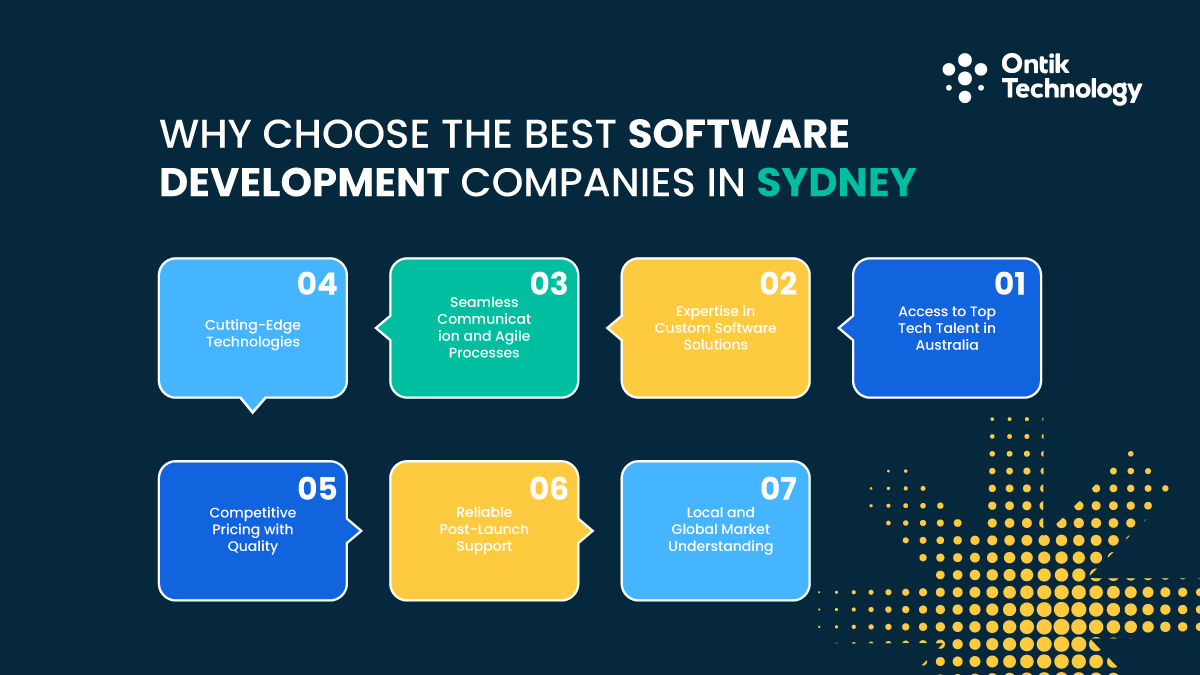
Collaborating with the right software development company in Sydney is crucial for business success. Whether you are a startup or enterprise, finding the right digital partner outlines your vision. Sydney is emerging as a powerhouse for next-gen software companies bringing real value.
Access to Top Tech Talent in Australia
Sydney hosts skilled software developers, software engineers, mobile developers, UI/UX designers, plus product strategists. These software developers in Sydney bring expertise across multiple technologies and frameworks.
Many top software companies in Sydney and IT companies in Sydney, Australia have major offices here, giving you access to concentrated tech talent. The collaborative environment among software developers in Sydney fosters innovation and knowledge sharing.
These professionals stay current with mobile software development trends. Government IT initiatives support STEM education, creating a pipeline of qualified software developers ready to tackle real business challenges.
Expertise in Custom Software Solutions
A custom software development company in Sydney builds platforms tailored for your goals and workflows. Custom software development improves efficiency and eliminates operational inefficiencies. Sydney firms deliver highly scalable systems, whether SaaS products or on-demand apps. Custom software solutions provide tailored solutions that give you competitive advantages through unique features aligned with your business vision and needs.
Seamless Communication and Agile Processes
Sydney software companies use Agile for faster, transparent custom development (market research, business analysis, development, deployment, maintenance). Time-zone alignment is beneficial. Agile's iterative development, cross-functional collaboration, and user stories define scope and functionality. Effective communication is key; scaling requires strategy to maintain efficiency and productivity.
Cutting-Edge Technologies
Sydney's innovation-led software ecosystem leverages cutting-edge tools like Flutter and React Native for cross-platform mobile apps, and modern web frameworks for faster delivery. Developers use advanced frameworks for robust systems.
DevOps improves collaboration, while cloud solutions boost scalability and performance. Business intelligence and data analytics enable data-driven decisions.
Competitive Pricing with Quality
While Sydney is not the cheapest market, the cost-to-quality ratio is outstanding. Firms offer flexible pricing: fixed-cost packages to dedicated teams. Software development costs range from $20,000 for MVPs to $5 million for full products. A Minimum Viable Product tests market viability before full investment.
Reliable Post-Launch Support
Sydney-based firms offer maintenance, monitoring, bug fixes, plus upgrades. Ongoing maintenance keeps software running smoothly. Regular feedback loops ensure software meets user needs. Custom software development can lead to better user experiences by focusing on user-centric design principles.
Local and Global Market Understanding
These app development companies in Sydney grasp compliance, user behavior, plus Australian regulations. Companies in Sydney may have better insight into the local business landscape and specific customer expectations. Adhering to Australian Privacy Principles (APPs) and Notifiable Data Breaches (NDB) scheme is crucial. This local insight combined with global delivery makes them ideal partners.
Ready to find your development partner? Let us explore the top 15 best software development companies in Sydney.
Sydney's IT Landscape: A Hub for Innovation
Sydney has emerged as Australia's premier destination for technology services. The city hosts numerous top IT companies in Sydney alongside innovative small IT companies in Sydney that deliver specialized solutions. Whether you're searching for top tech companies to work for in Sydney or seeking IT Services Companies in Sydney for your project, the city's ecosystem supports every need.
This comprehensive list of IT companies in Sydney represents the top 10 IT companies in Sydney and beyond, showcasing firms that excel in custom software and app developers Sydney services. These top software companies in Sydney and best software development companies in Sydney Australia have established proven track records across industries. Many leading providers in Sydney's software development agency landscape offer comprehensive services from ideation to deployment.
Parameters to Choose the Best Software Development Company in Sydney
Selecting the best software development company in Sydney is a high-stakes decision for any business, big or small. The right partner brings more than just code to the table. They bring strategy, support, plus long-term value. Here are the most important parameters to guide your decision.
Experience and Industry Expertise
Start by checking how long the company has been operating. Longevity reflects credibility and consistent delivery. Look for industry experience in your specific sector, as healthcare apps differ vastly from retail platforms.
Check for years in business, successful project count, industry-specific case studies, client testimonials from similar sectors, awards and recognitions, plus partnerships with technology leaders like Microsoft Gold Partner status. Top software development companies in Sydney showcase case studies demonstrating their domain expertise. Experienced software developers offer deep insights, better workflows, plus avoid rookie mistakes. Top software developers in Sydney understand how to align technology with your business vision.
Range of Services Offered
Top Sydney custom software developers provide full-cycle services, including ideation, maintenance, and essential offerings like mobile app, web, and backend development, along with custom web design and application capabilities. This comprehensive approach eliminates the need for multiple vendors.
Full-cycle development includes business analysis, user stories, development, deployment, plus ongoing maintenance. A leading provider should deliver solutions across all platforms and technologies.
Tech Stack and Tools
Modern problems need modern tools. Check what programming languages, frameworks, plus technologies the company uses. Sydney's best mobile software development companies master Flutter, Kotlin, Swift, React Native, plus more.
Key technologies include frontend frameworks (React, Angular, Vue.js), mobile platforms (Flutter, React Native, Swift, Kotlin), backend systems (Node.js, Python, Java, .NET), cloud services (AWS, Azure, Google Cloud), and emerging tech (AI/ML, Blockchain, IoT, business intelligence and data analytics tools).
The technology stack should align with your project requirements plus future scalability needs. Top software developers should be proficient in multiple tech stacks and cutting edge technologies.
Portfolio and Case Studies
Always review a company's past projects. This shows their technical skills, creativity, plus ability to solve real business challenges. Look beyond surface design. Examine user reviews, performance improvements, or revenue results tied to their projects. Client reviews often highlight the importance of communication and timely delivery in software development projects.
Client success stories reveal how the company approaches real business challenges and their ability to deliver solutions that drive business success. Look for examples of tailored software solutions that addressed specific client needs.
Client Testimonials and Reviews
Reviews can offer valuable insight into the company's professionalism, reliability, plus communication. Platforms like Clutch, GoodFirms, and Google Reviews are a good start. A great software development company in Sydney does not just deliver good products but builds lasting relationships.
Pay attention to patterns in reviews. If multiple clients mention excellent communication, that is a strong signal. If several mention delays, that is a red flag. Reviews from engineering firms and established businesses carry significant weight.
Development Approach and Methodology
The most successful software development companies in Australia often follow Agile or Scrum methodologies. These ensure faster iterations, real-time feedback, plus a lower chance of rework. A defined software delivery process builds transparency, accountability, plus trust.
Agile offers iterative development for flexible requirements, uses regular sprints for continuous progress, ensures transparent communication, allows quick adaptation to changing business needs, and fosters collaboration between the client and development team. DevOps enhances collaboration between development and operations through continuous integration and deployment.
Pricing Model and Cost Transparency
The software development cost in Sydney varies based on scope, tech stack, plus team structure. Make sure the company is upfront about pricing. Look for flexibility in pricing models: fixed-price, hourly, or dedicated team models. Remember, the cheapest option can become the costliest if it lacks quality or stability. Value for cost is more important than just low prices.
Support and Maintenance
Software development requires ongoing maintenance, not a one-time job. Leading Sydney software development companies provide flexible post-launch maintenance, including performance monitoring, bug fixes, and regular updates. Consistent feedback during development ensures solutions meet user needs.
Finding a software development company in Sydney that checks all these boxes is not easy, but it is worth the effort. For companies needing additional resources, consider exploring dedicated development team options.
What Are the Software Development Costs in Australia?
Understanding software development cost in Australia, particularly in Sydney, is essential for smart budgeting. Projects range from AUD 10,000 to AUD 100,000 plus, depending on numerous factors.
The cost of software development can range from $20,000 for a simple Minimum Viable Product to over $5 million for full product development. Simple software development projects typically take 10 to 12 weeks, while larger projects can take several months to a year.
Factors Influencing Cost
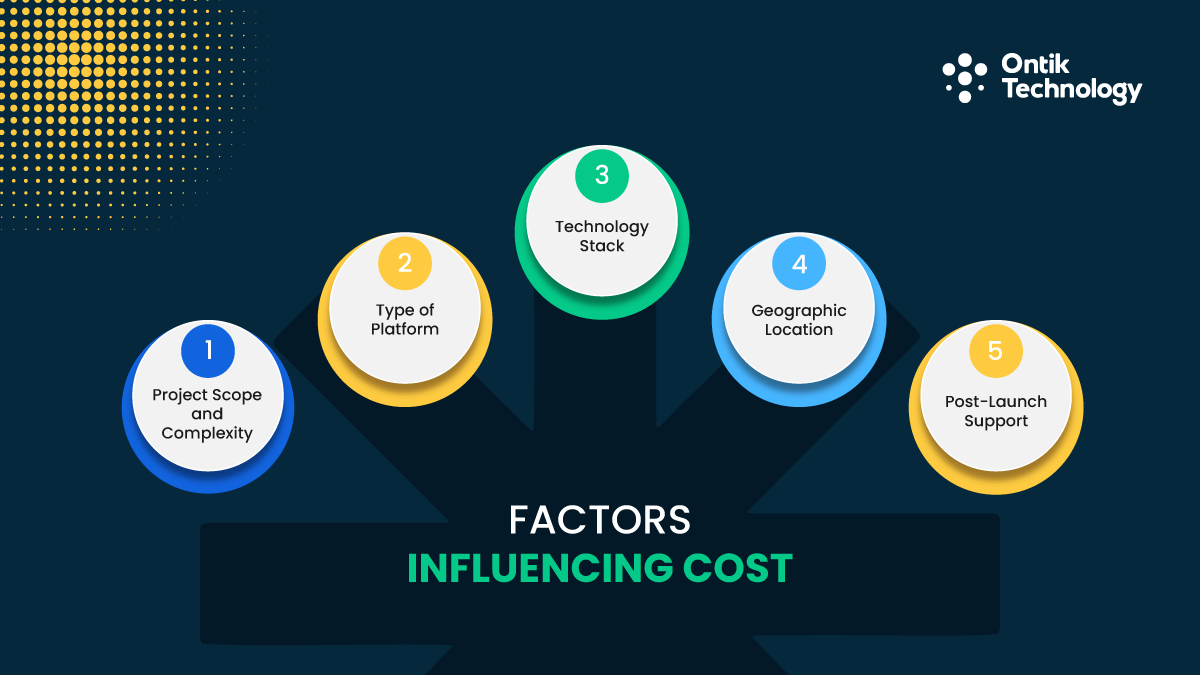
Project Scope and Complexity: Enterprise systems with user roles, analytics, plus integrations significantly increase software development costs in Sydney.
Type of Platform: Web development is often cost-effective. Native mobile apps for iOS and Android require separate builds, raising expenses. Hybrid solutions like React Native save time and money. Mobile application development costs vary based on platform choice.
Technology Stack: Standard stacks are affordable. New technologies like AI, blockchain, or IoT demand special skills with higher costs. Data analytics and business intelligence features add to the overall cost.
Geographic Location: Software developers in Sydney are more expensive than outsourcing teams. The pricing for software development services varies significantly based on whether the team is onshore or offshore.
Post-Launch Support: Ongoing maintenance typically costs 15 to 20% of the initial development budget annually.
A Comparative Overview of Sydney's Leading Software Development Companies
Choosing the right partner requires understanding what each company brings to the table. Here is a comparison of the top firms.
Team Size and Pricing
Small IT companies in Sydney (10 to 49 software developers) offer personalized attention plus flexibility, ideal for startups requiring close collaboration. Larger firms (1,000+ software developers) provide scalability plus diverse expertise for enterprise projects.
Budget-friendly options (under $25/hr) include Ontik Technology, TechnoYuga, Hiteshi, Tech Exactly, plus Offshorly. Mid-range options ($25 to $99/hr) include Simform, EB Pearls, Appinventiv, Arcanys, VT Digital, plus StepInsight. Premium options ($100 to $199/hr) include Appello Software and Sentia.
Specialization and Location
AI and machine learning specialists include Ontik Technology, Simform, Hiteshi, plus Innowise. Mobile app development leaders include EB Pearls, Tech Exactly, plus Appello Software. Healthcare and fintech experts include Appello Software, Innowise, plus VT Digital.
Web development company specialists include VT Digital, Sentia, and Arcanys, offering comprehensive website development and web application development services.
Sydney-based companies include VT Digital, Hiteshi, StepInsight, Appello Software, Sentia, plus EB Pearls, offering local insight plus cultural alignment. Global companies serving Sydney include Simform, Innowise, Appinventiv, Arcanys, TechnoYuga, Tech Exactly, Offshorly, plus Ontik Technology.
Companies with perfect 5.0-star ratings include TechnoYuga, EB Pearls, Arcanys, VT Digital, plus Hiteshi. Several software development companies in Sydney have experience working with startups and enterprises alike, providing tailored solutions to meet specific client needs with a strong focus on customer satisfaction and long-term partnerships.
Final Thoughts
Selecting the right Sydney software development partner is key to digital success, whether for a startup or an enterprise. Custom software drives business growth. Smart budgeting and a reliable partner accelerate scalability.
Sydney hosts top app development firms for diverse industries, from AI to enterprise solutions. To begin, define requirements, set a budget, and contact the best fit. Building an MVP minimizes risk and validates the concept.
The right company becomes a strategic partner, understanding your goals and providing the technical expertise to execute. Choose wisely and start building your future today.
FAQ's
What is the average cost of software development in Sydney?
The average software development cost in Sydney ranges from AUD 10,000 to AUD 100,000 plus, depending on project complexity. Simple mobile apps start around $10,000, while enterprise solutions can exceed $100,000. Factors like tech stack, team size, plus project scope all influence final costs.
How long does it take to build a custom software solution?
Simple software development projects typically take 10 to 12 weeks to complete. More complex enterprise applications can take several months to a year. The timeline depends on project requirements, team size, plus development methodology. Agile approaches often deliver faster results through iterative development.
Should I hire a local developer or outsource?
Local software development companies in Sydney offer better communication, cultural alignment, plus understanding of Australian regulations like the APPs and NDB scheme. However, offshore teams provide cost savings. Many businesses choose hybrid models that balance quality with budget. Consider your priorities: communication versus cost.
How do I verify a company's expertise?
Check their portfolio, case studies, and client testimonials (Clutch, Google Reviews). Request references. Inquire about their tech stack and development methods. Use a free consultation to assess communication and expertise. Look for industry recognition like Microsoft Gold Partner status.
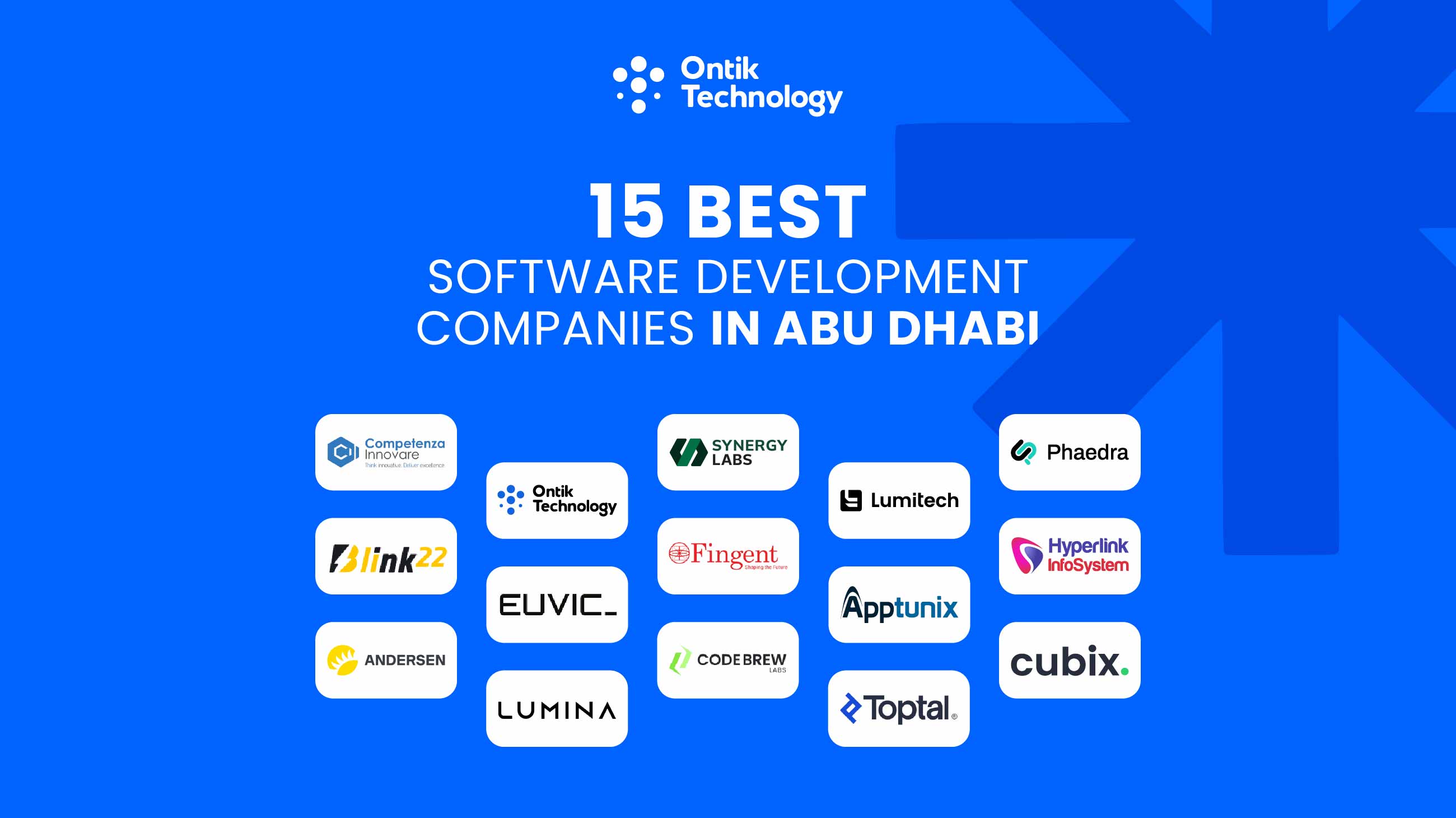

Choosing the right software development company in Abu Dhabi can transform your business. With over 300 firms in the market, finding a software development company in Abu Dhabi that actually delivers becomes challenging.
Abu Dhabi's tech ecosystem has grown dramatically thanks to Vision 2030 investments. We evaluated 100+ companies using strict criteria: Clutch reviews, local presence, case studies, and PDPL compliance. This guide presents 10 verified Abu Dhabi-based software companies with proven track records.
Whether you need custom software development, mobile apps, or enterprise solutions, these local software developers Abu Dhabi offer the expertise and regional market knowledge to execute successfully. Each has been vetted for technical capability and market readiness.
What Makes Abu Dhabi a Rising Hub for Software Development?
Driven by Vision 2030, Abu Dhabi has become a booming tech ecosystem. The software development market is expected to grow 12.5% annually until 2029, making it a prime location to hire software companies.
Hub71 spearheads this growth with $2 billion in startup incentives. Free zones like Masdar City and ADGM attract top local and international software firms by offering 100% foreign ownership, zero corporate tax for 50 years, and fast-track visas.
The emirate focuses on enterprise software, government contracts, and mission-critical systems. This differs from Dubai's startup-heavy ecosystem. Abu Dhabi offers B2B software firms opportunities in stable government and compliance projects, requiring custom development. Key sectors utilizing software include oil/gas, finance, healthcare, and government.
Infrastructure supports rapid growth with full 5G coverage, world-class data centers, and cloud connectivity rivaling any global tech hub.
How Did We Curate This List of Top Software Development Companies?
We evaluated over 100 software development companies in Abu Dhabi using six rigorous criteria to ensure verified quality and genuine capability. Whether you need a software development company near me Abu Dhabi or prefer working with a leading software development firm Abu Dhabi, this methodology helps you choose wisely.
Clutch reviews - We prioritized firms with 4.0+ ratings and verified client feedback. Real reviews from actual projects reveal more than polished marketing materials. We analyzed review patterns, response quality, and client satisfaction trends.
Case studies - Companies must demonstrate documented project success with measurable outcomes. We looked for specific results: reduced costs, improved efficiency, increased revenue. Generic portfolio pieces without data did not qualify.
Industry specialization - The best software development company in Abu Dhabi has deep expertise in specific sectors like fintech, healthcare, government, or logistics. Specialists understand industry regulations, workflows, and technical requirements better than generalists.
PDPL compliance - The Personal Data Protection Law (PDPL) establishes strict requirements for collecting, storing, and processing personal data. Compliance is mandatory for software handling resident data. Every software development company in Abu Dhabi must understand these regulations.
Key requirements include data minimization, clear consent mechanisms, user rights (access, correction, deletion), security measures, and breach notification within 72 hours. Violations carry fines up to AED 10 million.
UAE data protection and security standards are non-negotiable. We verified each company's understanding of Personal Data Protection Law, encryption practices, and data residency requirements.
Scalability - Companies must grow development teams without sacrificing delivery quality. We assessed their ability to maintain code standards, communication clarity, and sprint discipline as projects scale.
This methodology delivers vetted partners with proven capabilities in custom software development, not just marketing claims.
What Are the Top 15 Software Development Companies in Abu Dhabi?
The following 15 top software development companies in Abu Dhabi represent the region's most capable and verified partners. Each software company brings unique strengths across different industries and technical domains, from web application development to mobile app solutions.
Before we dive into individual profiles, here's a quick comparison to help you narrow your options:
Company Comparison Table
Now let's explore what makes each company stand out.
Ontik Technology
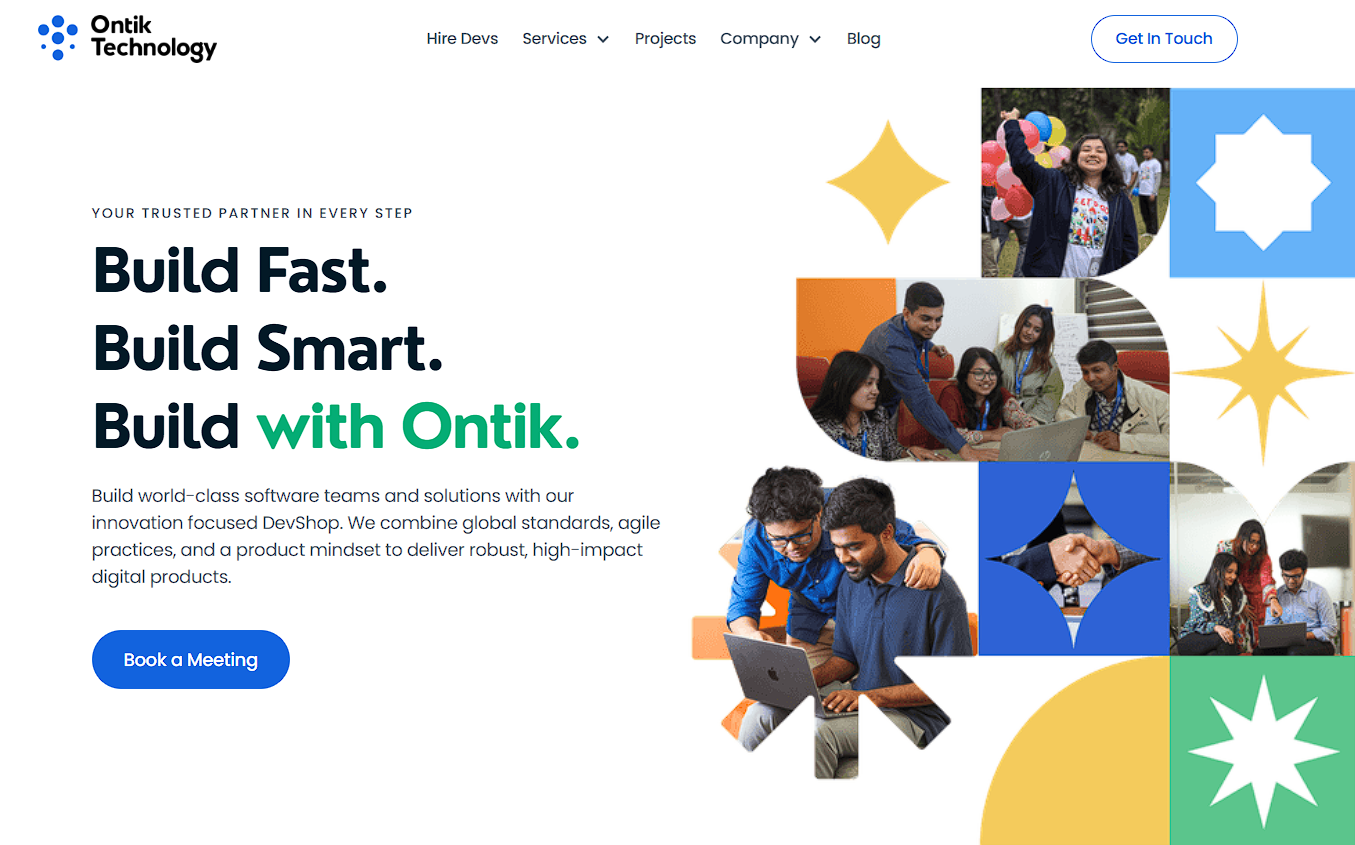
Founded in 2016, they have delivered 500+ successful projects for 350+ businesses worldwide. Their team of 150+ professionals offers rates under $25/hr, making enterprise-grade solutions accessible.
Service portfolio:
- AI development and machine learning solutions
- IT staff augmentation and team extension
- Mobile app development (iOS and Android)
- Custom software development service
- Web development and Web3 solutions
- Enterprise resource planning systems
- BI and data science
- MVP development
Ontik specializes in digital transformation, modernizing legacy systems, and integrated business automation. Their expertise spans diverse sectors including real estate, fitness, mentorship, and cultural education. With a strong UAE presence, they ensure seamless collaboration through every project phase.
The company has cultivated a culture rooted in research, continuous learning, and cutting-edge technology adoption. Their approach combines technical proficiency with deep understanding of regional market dynamics, including PDPL compliance and Arabic-RTL implementation.
Best for: Forward-thinking companies wanting AI-powered solutions with strong collaboration from conception to launch at competitive rates.
Competenza

Competenza has over 10 years of experience serving 1000+ enterprises globally with technology partnerships including Microsoft, Amazon, and Intel.
Key strengths:
- AI/ML solutions and custom Machine Learning models
- Process automation for approvals and reconciliations
- Mobile app development (iOS, Android, cross-platform)
- IT staff augmentation with GCC-aligned teams
- Cloud services across AWS, Azure, and hybrid setups
- Digital transformation and application modernization
Best for: Enterprises and growing businesses needing end-to-end digital solutions with strong GCC compliance understanding.
Synergy Labs
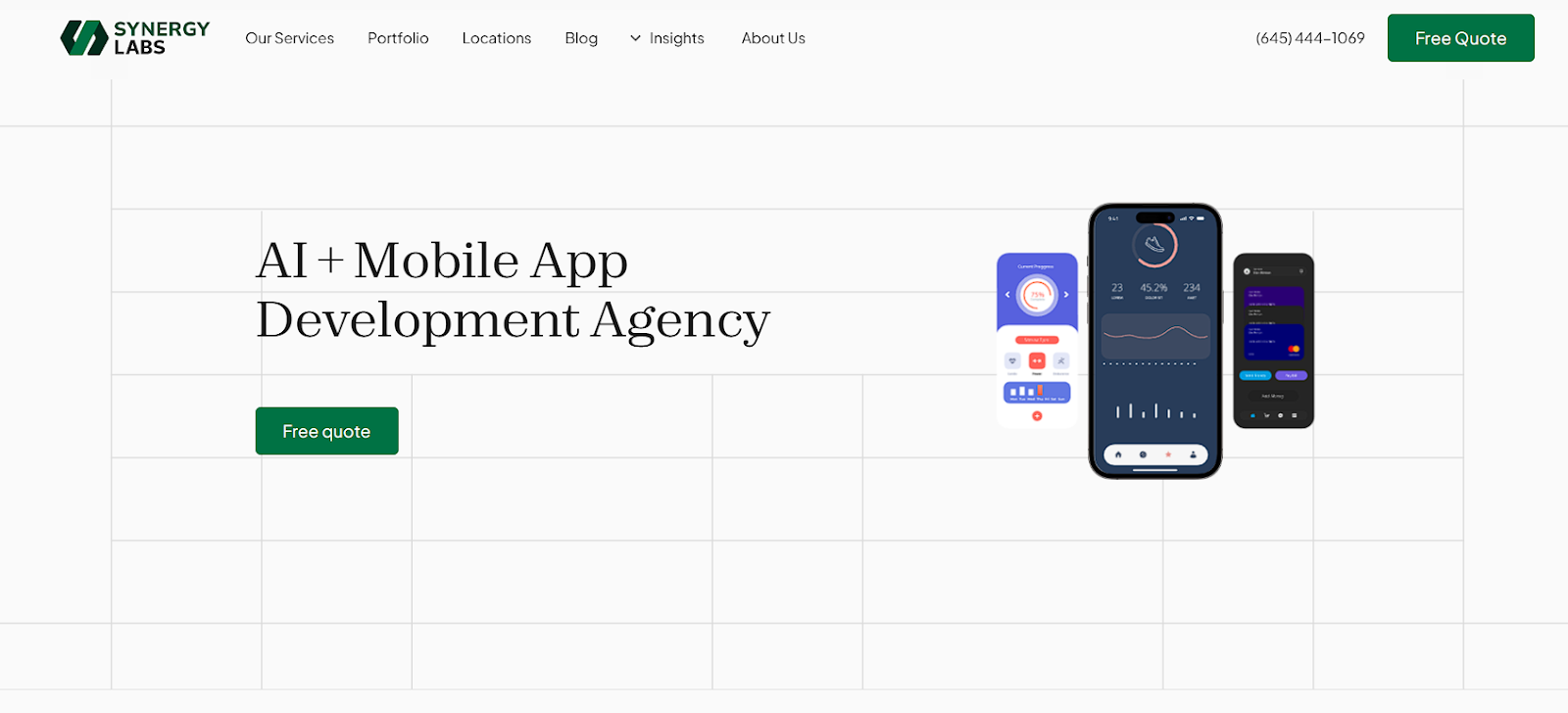
Synergy Labs maintains a 4.9 Clutch rating across 45 reviews. This boutique studio has delivered 100+ custom projects for clients including Forbes Council, Minnect, and Clapper with rates of $50-99/hr.
Key capabilities:
- Custom mobile apps for iOS and Android
- Web applications and platforms
- MVP development and rapid prototyping
- Fintech and social media applications
- UI/UX design services
Best for: Startups and growing companies building consumer-facing mobile applications where user experience drives competitive advantage.
Lumitech
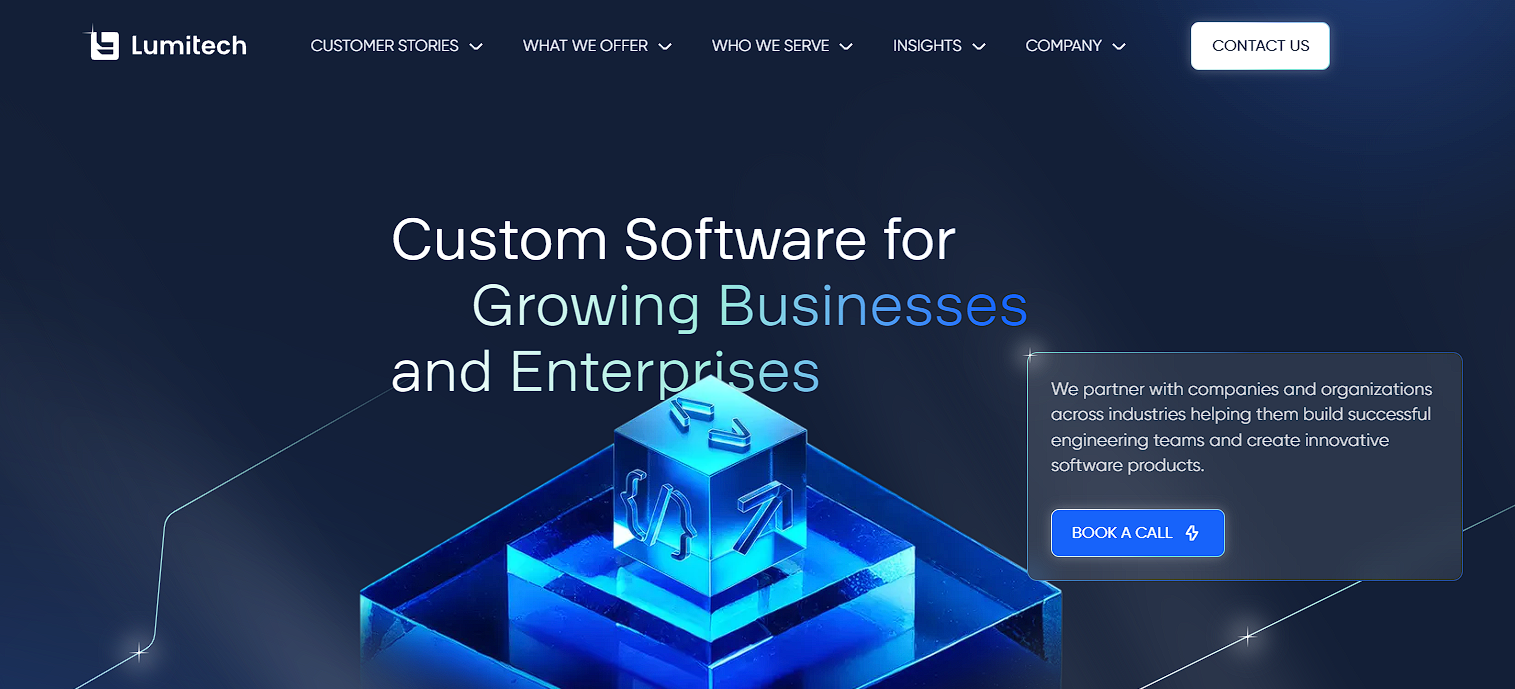
Lumitech ranks #1 in IT Consulting in the UAE on Clutch and appears in the Clutch 100 fastest-growing companies of 2024. They achieved 600% growth since 2022 with an in-house team approach.
Service offerings:
- Web development with scalable architectures
- Mobile development for high-performance apps
- AI/ML development and data insights
- Startups, MVPs, and POCs
- UX/UI design
- QA and testing
Best for: Fast-growing startups and scale-ups needing AI-driven development with a tech-first, zero-bureaucracy approach.
Phaedra Solutions

Phaedra Solutions holds a 4.9 Clutch rating across 23 reviews. Based in Dubai Silicon Oasis, they have delivered 700+ projects with 200+ experts and maintain 97% client retention.
Comprehensive services:
- AI and machine learning development
- Custom software development
- Mobile app development (iOS and Android)
- Web development and eCommerce
- UI/UX design and prototyping
- Fractional CTO services
Best for: Startups seeking rapid AI MVP development and enterprises needing comprehensive digital transformation with proven ROI.
Blink22
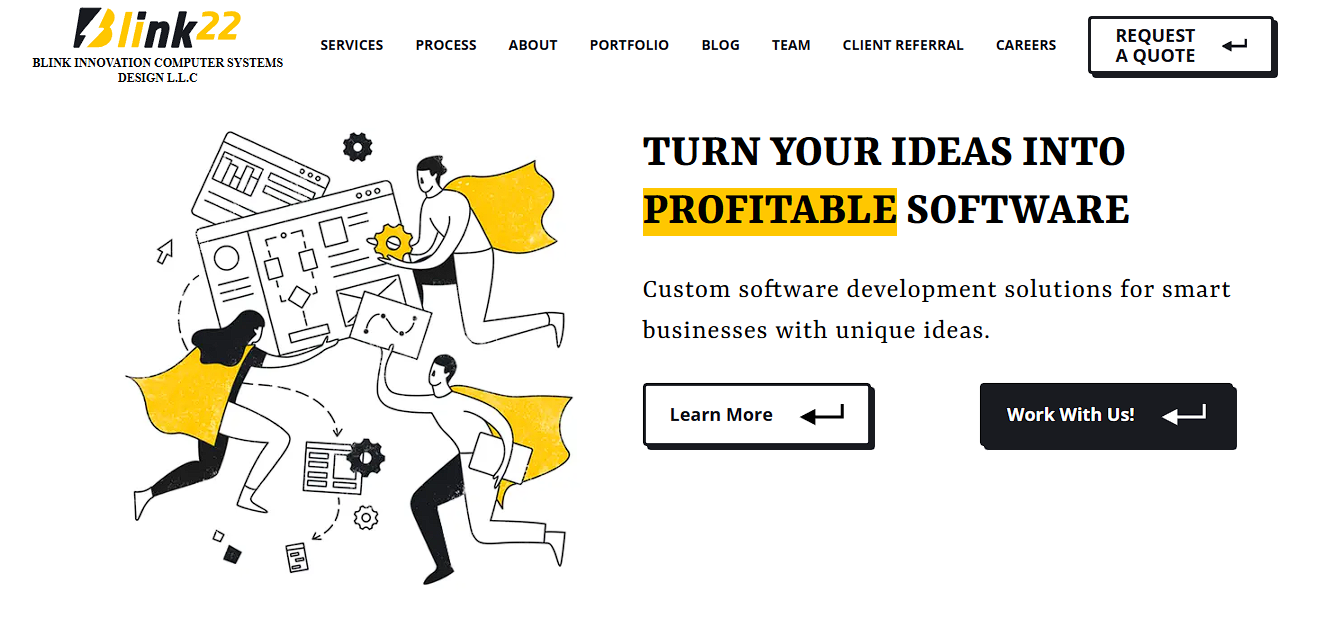
Blink22 achieves a perfect 5.0 Clutch rating across 30 reviews. Based in Dubai with branches in UK, Singapore, and KSA, they have 10+ years experience and 100+ engineers.
Core services:
- Web development (backend and frontend)
- Mobile development for iOS and Android
- Chatbot development
- Custom software solutions
Best for: Companies building customer-facing products where design excellence and user engagement drive business success.
Euvic

Euvic operates with 6,000+ IT specialists globally, 20+ years in business, and 3,000+ delivered projects. Their 4.8 Clutch rating reflects enterprise focus with 92% employee retention.
Enterprise capabilities:
- Business consulting and digital transformation
- Custom software development
- Cloud services and migration
- Automation and innovation
- Team extension and staff augmentation
- Performance marketing
Best for: Large enterprises and government entities needing proven processes for major digital transformation with global delivery capabilities.
Fingent
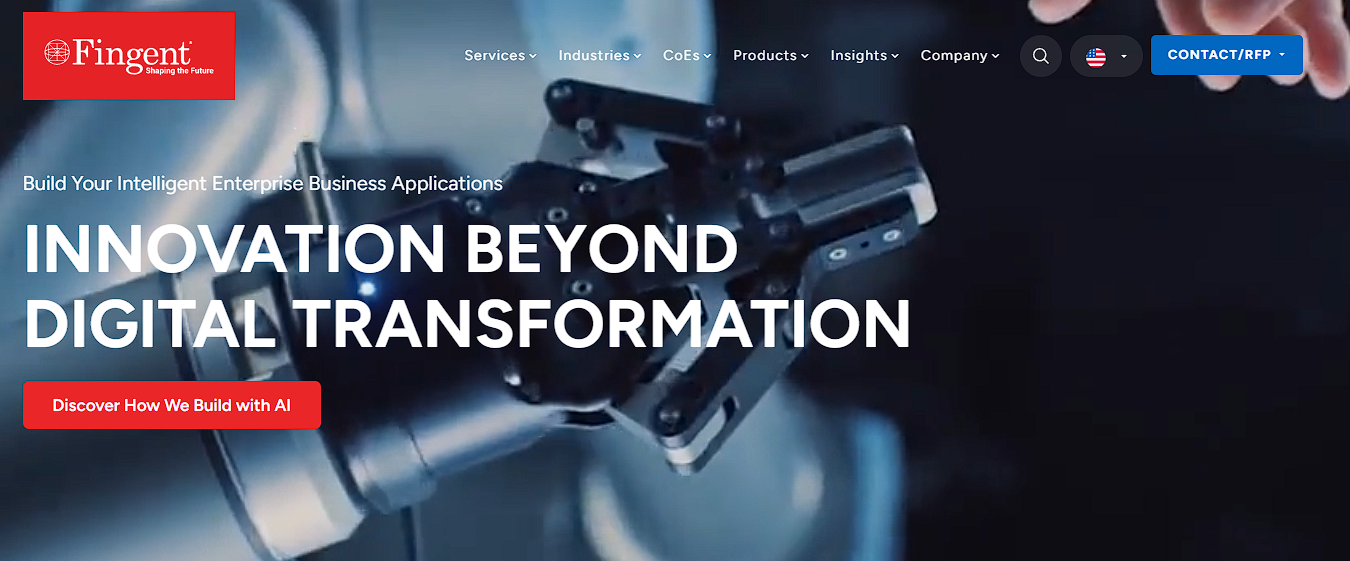
Fingent is an ISO 27001-certified company with 300+ employees and 57 Clutch reviews. They serve Fortune 500 clients including Sony, Johnson & Johnson, NEC, and PwC.
Service areas:
- AI-driven development and data engineering
- Cloud-native solutions
- Custom software development
- SAP implementation and consulting
- Extended reality (AR/VR/MR)
- Data visualization
Best for: Mid-to-large enterprises needing comprehensive software development services with enterprise-grade quality and global support.
Apptunix
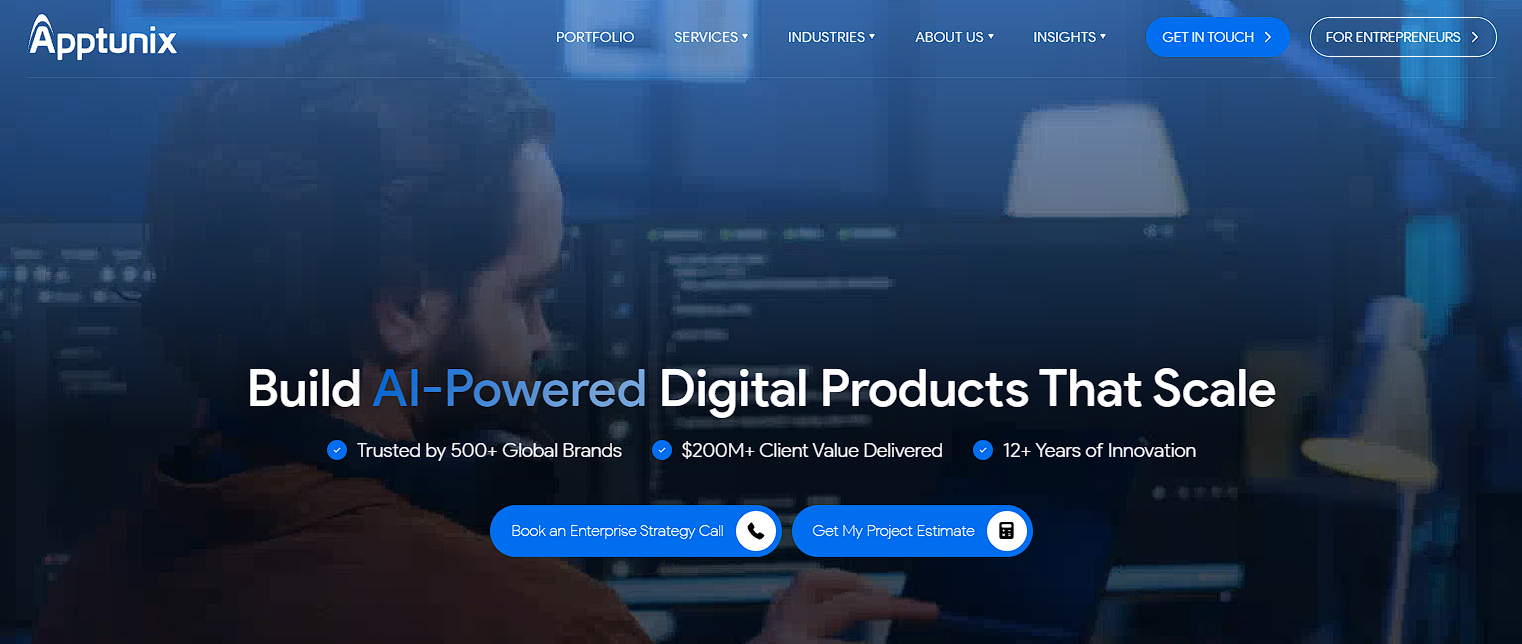
Apptunix holds a 4.9 Clutch rating with 80 reviews. Founded in 2013, they have 300+ professionals with offices in USA, UK, and UAE (Business Bay, Dubai) charging $25-49/hr.
Development focus:
- Mobile app development (iOS, Android, cross-platform)
- Custom software development
- AI and machine learning integration
- On-demand delivery apps
- Healthcare and fintech solutions
Best for: Mobile-first businesses in healthcare, logistics, real estate, and fintech needing scalable app solutions with competitive pricing.
Hyperlink InfoSystem
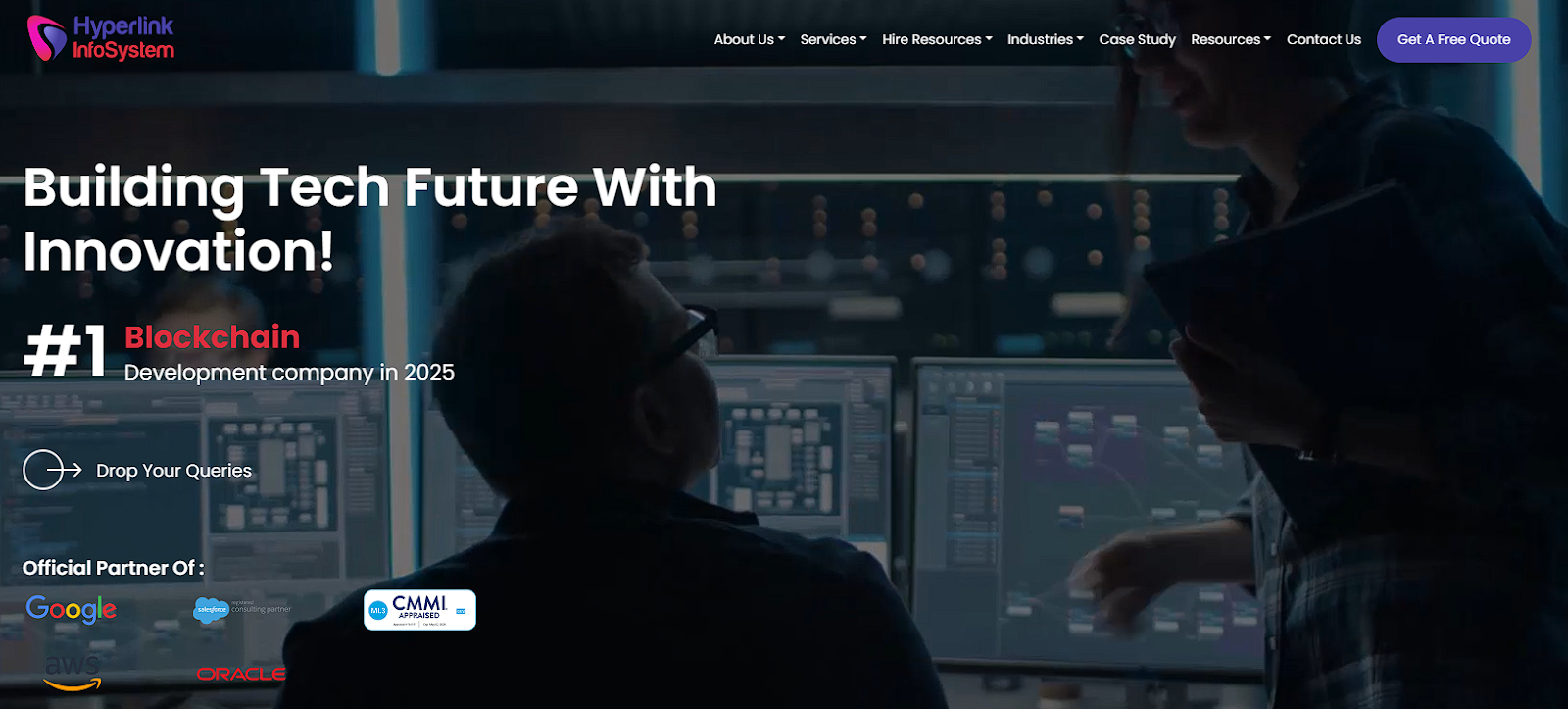
Hyperlink InfoSystem has a 4.9 Clutch rating across 171 reviews. Founded in 2011, they have 1,000+ employees and have delivered 4,500+ apps for 2,700+ clients worldwide.
Service portfolio:
- Mobile app development
- Web development
- Blockchain technology
- Data science and IoT solutions
- Salesforce development
- AI and machine learning
Best for: Diverse development needs across multiple industries requiring proven processes and global delivery capabilities.
Andersen

Andersen maintains a 4.9 Clutch rating across 129 reviews with 3,500+ professionals. Founded in 2007, they have a Dubai office on Sheikh Zayed Road.
Technical capabilities:
- Full-stack software development
- IT staff augmentation
- Mobile and web development
- Cloud and microservices architecture
- QA and testing
- Business intelligence and analytics
Best for: Organizations needing rapid team scaling with experienced developers who integrate seamlessly with existing teams.
Lumina

Lumina achieves a perfect 5.0 Clutch rating across 25+ reviews as a Premier Verified partner. This Dubai-based team specializes in eCommerce and digital marketing.
Core services:
- Shopify and eCommerce development
- Web development and design
- SEO and PPC management
- Digital strategy
- Social media marketing
Best for: Retail and D2C brands needing fast, design-led eCommerce builds with integrated CRO/SEO and measurable ROAS improvements.
Code Brew Labs
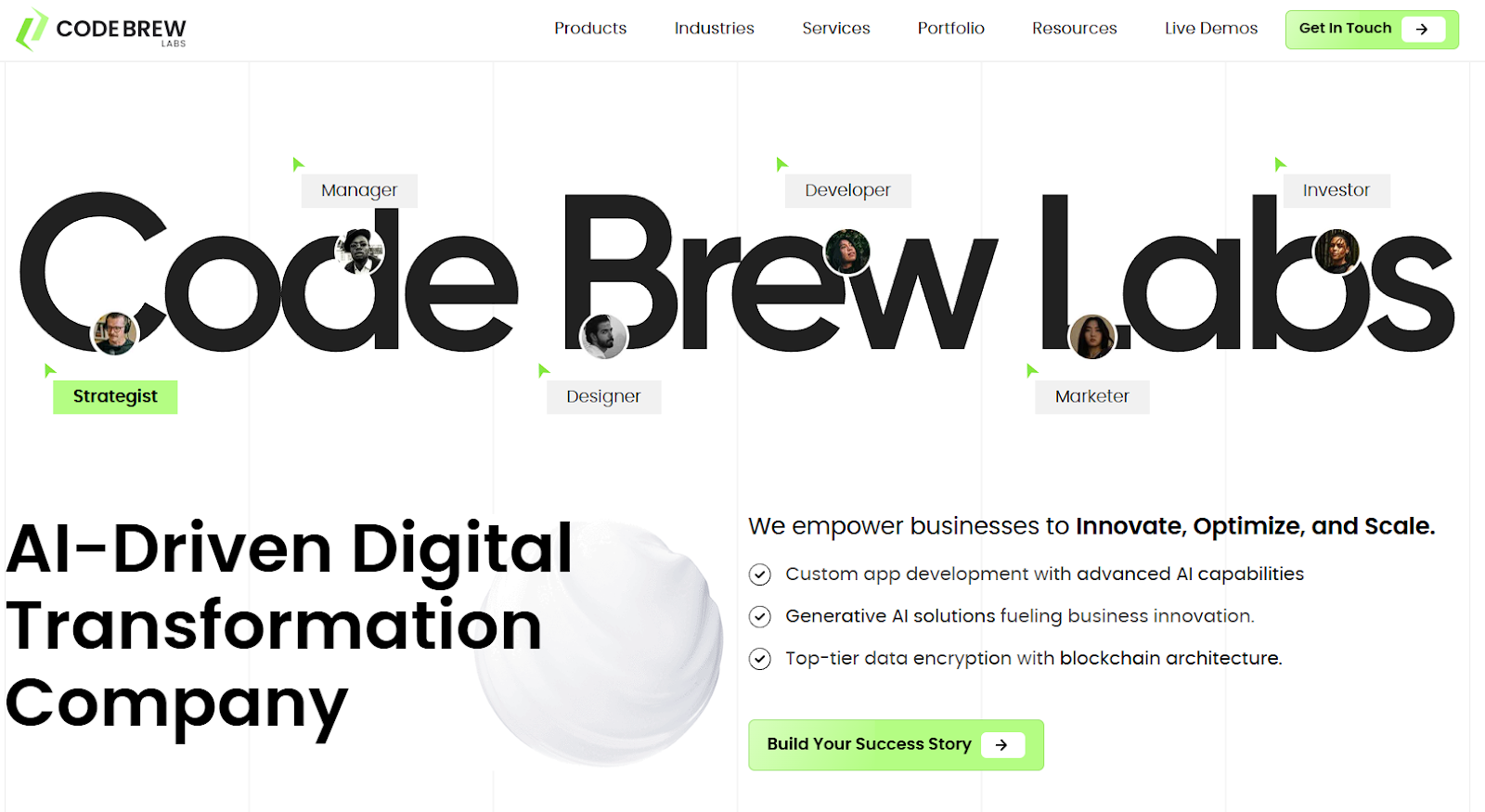
Code Brew Labs holds a 4.7 Clutch rating across 48 reviews. Founded in 2013 with headquarters in Dubai World Trade Centre Tower, their 200+ team charges $30-70/hr.
Development services:
- Mobile app development (iOS and Android)
- AI and machine learning integration
- Blockchain development
- Fintech and on-demand solutions
- UI/UX design
Best for: Startups and enterprises building on-demand platforms and fintech solutions with AI integration.
Toptal
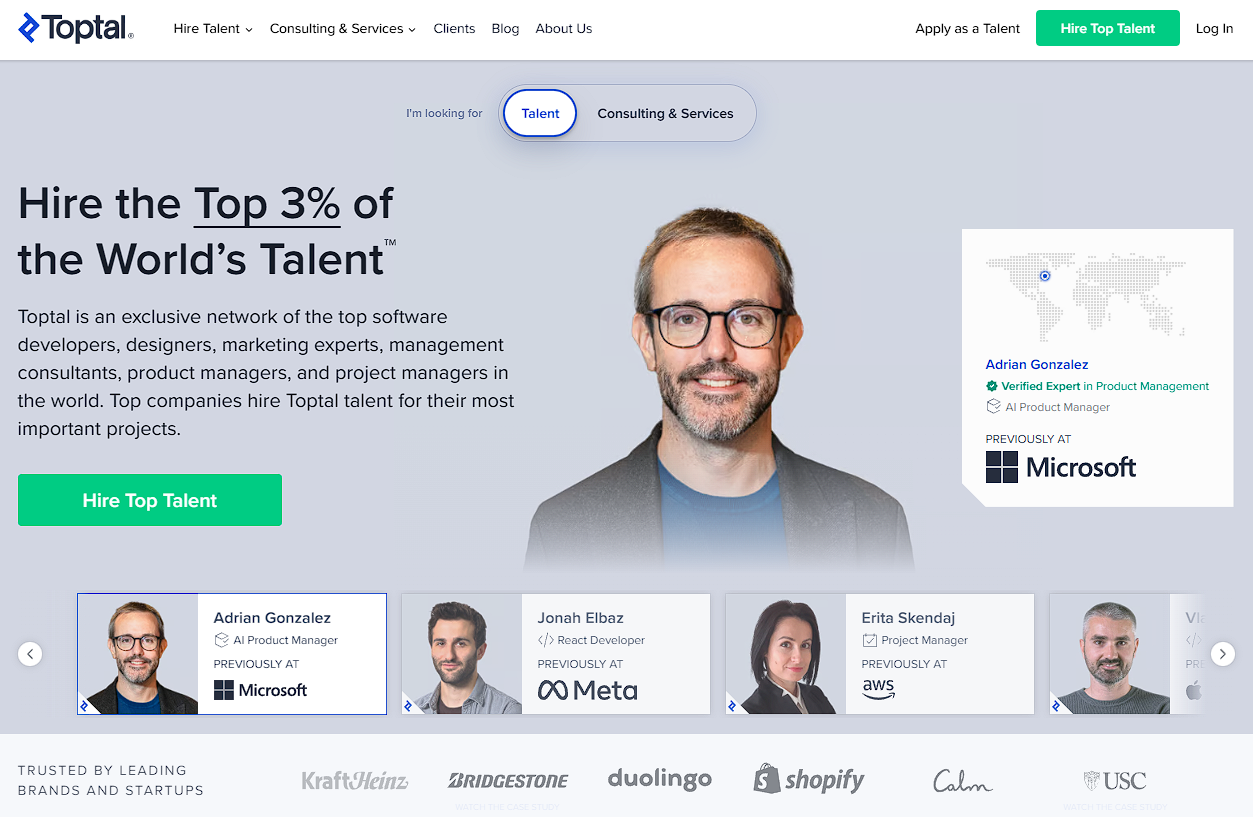
Toptal is a global talent marketplace connecting businesses with the top 3% of freelance software developers, designers, and finance experts with hiring possible within 48 hours.
Talent categories:
- Software development across all stacks
- UI/UX design
- Project management
- DevOps and cloud architecture
- Mobile development
Best for: Companies needing immediate access to specialized, vetted talent for mission-critical initiatives without long-term commitments.
Cubix

Cubix maintains a 4.8 Clutch rating across 52 reviews with 16+ years of experience. Headquartered in Washington DC with a Dubai branch, they charge $25-49/hr.
Expertise areas:
- Custom software development
- Mobile app development
- Game development
- Blockchain and AI/ML
- AR/VR/XR solutions
- Business intelligence analytics
Best for: Companies building enterprise software, gaming applications, or immersive AR/VR experiences with strong technical guidance.
Why Choose Ontik Technology for Software Development in Abu Dhabi
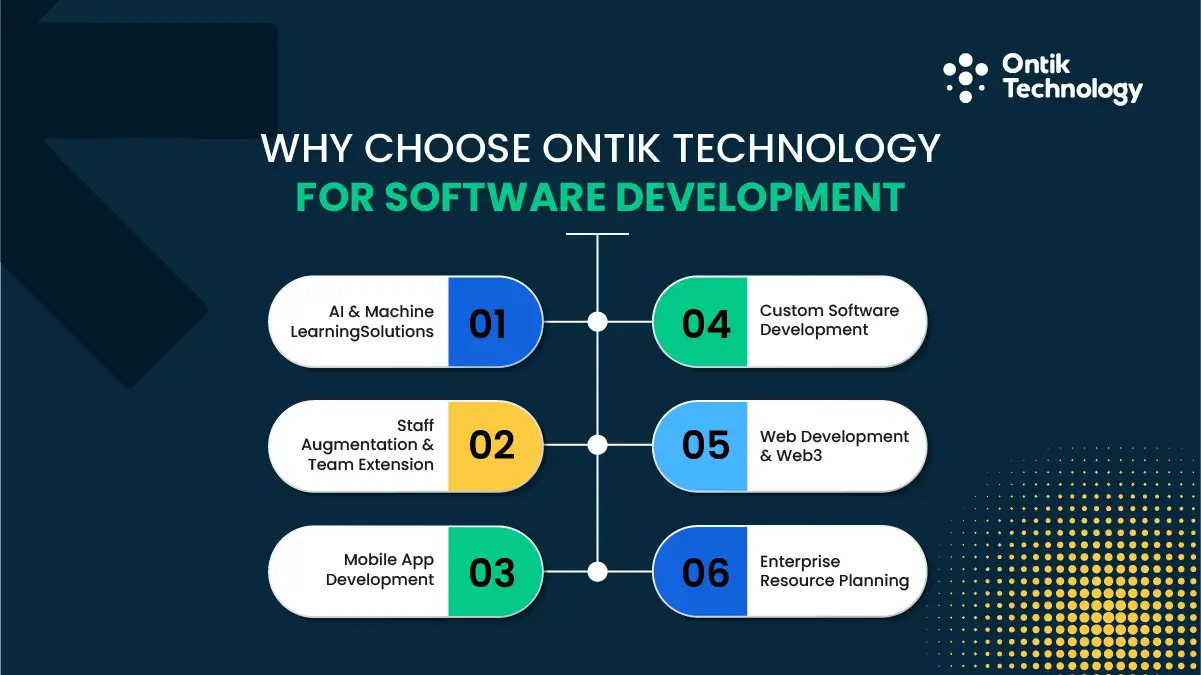
Ontik Technology has established itself as a premier software development partner in Abu Dhabi, distinguished by its impressive track record of over 500 successful projects and a stellar 4.5 Google rating from 57 reviews.
Since its founding in 2016, the company has cultivated a culture deeply rooted in research, continuous learning, and the adoption of cutting-edge technologies that keep clients ahead of the competitive curve.
Comprehensive Service Portfolio for Modern Business Needs
Ontik Technology offers a diverse range of specialized services designed to address today's digital challenges:
- AI & Machine Learning Solutions – Delivering intelligent automation and data-driven insights that produce measurable business outcomes
- Staff Augmentation & Team Extension – Providing top-tier talent precisely when you need it, with dedicated development teams that function as your extended tech squad
- Mobile App Development – Creating engaging, user-centric applications across iOS and Android platforms
- Custom Software Development – Building bespoke solutions tailored to your unique business requirements
- Web Development & Web3 – From scalable web platforms to blockchain-integrated solutions
- Enterprise Resource Planning – Implementing comprehensive ERP systems for streamlined operations
- BI & Data Science – Transforming raw data into actionable insights through advanced analytics and visualization
- MVP Development – Rapidly building minimum viable products to validate ideas and accelerate time-to-market
Ontik Technology offers enterprise-grade solutions at competitive rates (under $25/hr). Their 150+ professionals are versatile in complex challenges across real estate, fitness, mentorship, and cultural education.
With a strong UAE presence, they ensure seamless collaboration in Abu Dhabi. They specialize in digital transformation, modernizing legacy systems, and integrated business automation to optimize workflows, scale efficiently, and maintain business continuity.
How to Choose a Software Development Company in Abu Dhabi
Selecting the best software development company in Abu Dhabi requires systematic evaluation of technical capability, regional market readiness, and partnership potential. Understanding the software development process in Abu Dhabi companies helps you make informed decisions.
Define Your Goals and Requirements First
Define your goals, success metrics, and must-have features before contacting vendors. Start with the business problem, not the solution. Are you building an MVP or a full web application platform? MVPs validate assumptions quickly in 10-14 weeks. Full builds need 6-12 months.
Map must-have features versus nice-to-haves. Identify the critical 20% delivering 80% of value. Set realistic budgets including development, hosting, maintenance, and future enhancements.
Verify the Company's Regional Market Readiness
Demand proof of Arabic-RTL implementation, local payment integrations, and PDPL-compliant data handling from actual projects. Ask for screenshots showing RTL layouts working naturally in Arabic.
Check for working integrations with local providers like Telr, PayTabs, and Network International. Verify PDPL compliance: Where is data hosted? How do they handle consent? What encryption standards?
Request Technical Proof Before Signing Contracts
Request architecture diagrams, CI/CD pipeline descriptions, and code samples before signing. Good diagrams show system components, data flow, scaling strategies, and failure modes.
Ask about automated testing, build automation, and observability. Review code samples for consistent style, meaningful names, error handling, and security practices
Common Mistakes When Hiring Software Developers in Abu Dhabi
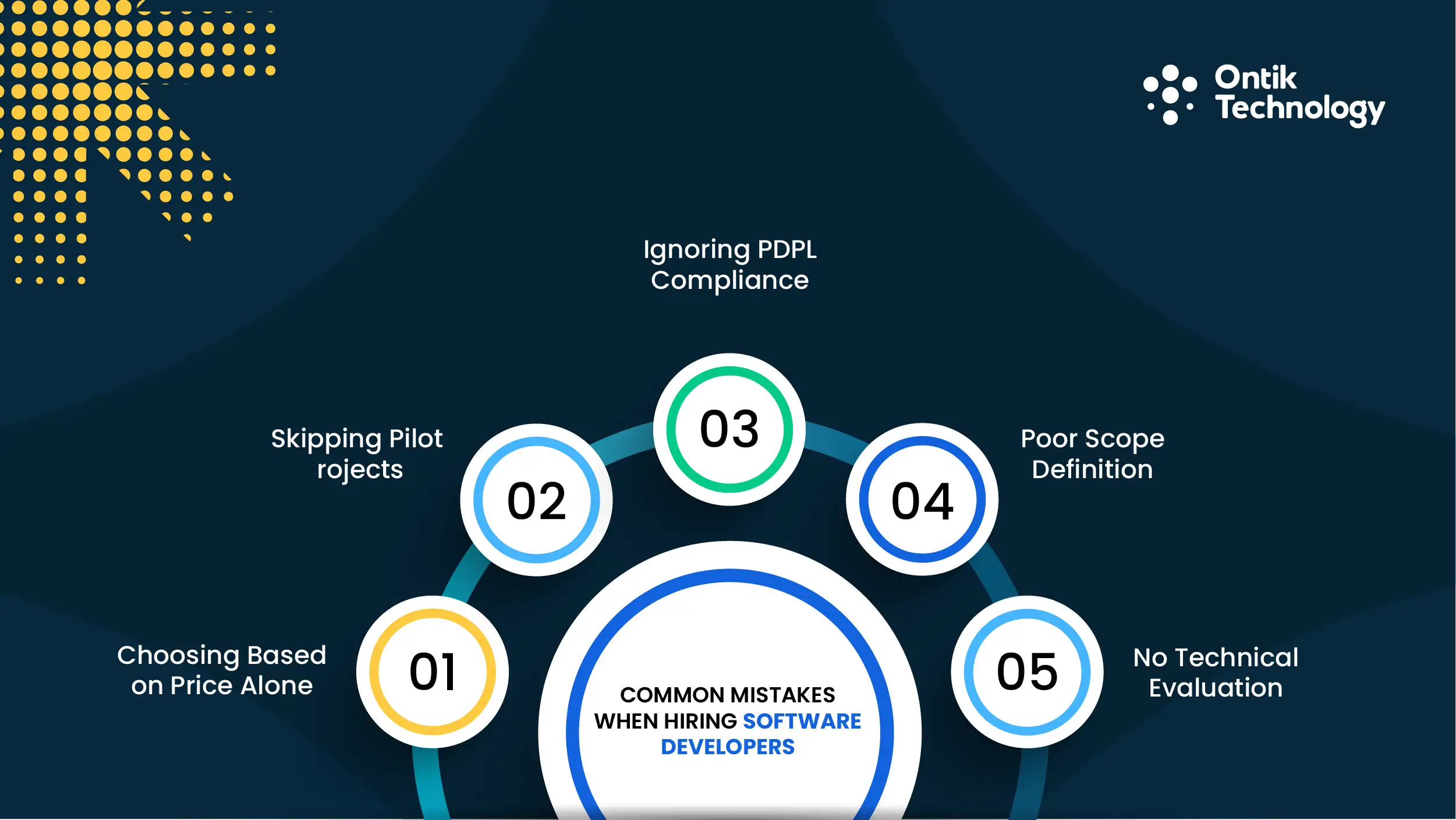
Choosing Based on Price Alone
Many businesses select vendors based solely on hourly rates, leading to budget overruns and failed deliveries. A developer charging $15/hour who takes three times longer costs more than a $50/hour expert who delivers efficiently. Cheap developers often lack experience with regional requirements like Arabic-RTL layouts, PDPL compliance, and local payment gateway integrations. Quality developers justify higher rates through efficient delivery, fewer bugs, and proper architecture that scales.
Skipping Pilot Projects
Jumping into full contracts without pilot projects means gambling with your entire budget. Communication styles, development practices, code quality, and cultural fit only reveal themselves during real collaboration. A 3-4 sprint pilot costing $10,000-$25,000 tests delivery capability before committing $100,000+. Many businesses skip pilots to save money upfront, then waste far more on failed projects with incompatible vendors.
Ignoring PDPL Compliance
The Personal Data Protection Law carries penalties up to AED 10 million for violations. Vendors who do not understand PDPL compliance put your business at legal risk. Compliance affects architecture decisions about data residency, encryption standards, and access controls that must be designed from the start.
Poor Scope Definition
Vague requirements give vendors no boundaries. Without clear scope, costs balloon and launch dates slip. Good scope definition identifies must-have features versus nice-to-haves, defines success metrics, and establishes boundaries.
No Technical Evaluation
Sales presentations hide implementation quality behind polished demos. Request architecture diagrams, code samples, and CI/CD pipeline documentation before signing. Technical evaluation separates professional firms from amateurs.
What Is the Cost of Software Development in Abu Dhabi?
Software development costs in Abu Dhabi range from $49 to $120 per hour, with local agencies typically charging $55 to $95 per hour for full-service delivery including project management and QA. Offshore development teams from Eastern Europe and India offer more budget-friendly rates between $20 and $40 per hour.
Full app development projects in Abu Dhabi typically cost $19,000 to $98,000 depending on complexity, while Dubai projects run slightly higher at $24,500 to $120,000 due to increased living expenses and market demand.
Hourly rates by experience level:
- Junior developers: $33-$44/hr
- Mid-level developers: $44-$61/hr
- Senior developers: $66-$99/hr
- Architects/Specialists: $99-$120/hr
Monthly salaries for in-house developers:
- Mid-level mobile developer: $6,800-$12,000/month
- Average software engineer: $27,800/month
MVP development typically takes 3-4 months for most projects, allowing businesses to validate ideas before committing to full-scale development.
Project complexity, payment gateway integrations, Arabic-RTL implementation, and PDPL compliance requirements all affect final costs. Plan for 30-40% extra beyond initial quotes to cover compliance, hosting, and iteration work.
Typical Software Development Timelines in Abu Dhabi
Delivery timelines vary based on project complexity and scope. Most capable software development companies in Abu Dhabi follow these general timeframes:
Simple applications and MVPs take 10-14 weeks with clear requirements and modern CI/CD practices. Medium-complexity platforms with multiple integrations require 3-6 months. Complex enterprise systems with extensive features and compliance requirements need 6-12 months or longer.
Several factors influence delivery speed. Clear requirements enable immediate development. Modern DevOps and experienced teams accelerate delivery. Scope creep, unclear requirements, and integration complexity slow timelines. Responsive stakeholders enable rapid progress. Companies using agile methodologies typically deliver working features faster through iterative sprints.
In-House Development vs Outsourcing
The decision depends on your context. Startups benefit from outsourcing for speed and cost efficiency. Enterprises with complex IP may prefer internal teams. Benefits of hiring local software developers in Abu Dhabi include timezone alignment, cultural understanding, and easier face-to-face collaboration.
In-house offers control but requires recruiting time and high salaries. Outsourcing provides speed and flexibility but less control. End-to-end development offers the best of both worlds, giving you a dedicated partner who handles everything from discovery and design through development, testing, and deployment. Many businesses use a software solutions provider Abu Dhabi for complete project delivery while maintaining lean internal teams.
Understanding the benefits of end-to-end development helps you choose the right model for your situation.
Software Development Trends in Abu Dhabi 2025
Abu Dhabi's software market is surging with unprecedented government backing. The UAE IT services market is expected to reach USD 20.24 billion in 2025, growing at 13.24% CAGR to USD 37.69 billion by 2030. Abu Dhabi alone has allocated AED 13 billion through its Digital Strategy 2025-2027 to drive innovation.
AI dominates the landscape. Abu Dhabi aims to become the world's first fully AI-native government by 2027, implementing over 200 AI solutions across government services. The emirate's AI ecosystem has grown 61% as companies deploy chatbots, predictive analytics, and computer vision for practical outcomes.
Cloud adoption is accelerating with mandated 100% sovereign-cloud adoption for government services by 2027. Cybersecurity spending is rising sharply. The UAE's AI in cybersecurity market will grow from USD 1.2 billion to USD 5.36 billion by 2030 at 27.4% CAGR.
Low-code platforms and mobile-first solutions round out the trends, enabling faster development cycles across industries.
Conclusion
Abu Dhabi has emerged as a formidable force in global software development. Backed by Vision 2030 investments, $2 billion in Hub71 incentives, and world-class infrastructure, the emirate has created an ecosystem where innovation thrives and businesses gain genuine competitive advantage.
What sets Abu Dhabi apart is its focus on substance over hype. The companies profiled here deliver enterprise-grade solutions, deep expertise in mission-critical systems, and regional market knowledge that international vendors cannot match. They understand PDPL compliance, Arabic-RTL implementation, and local business realities.
Choosing a software development partner from Abu Dhabi means tapping into a market growing at 12.5% annually with competitive pricing and uncompromising quality. The tech ecosystem here is not just growing. It is maturing into a reliable, innovation-driven hub where your next software project can be built faster, smarter, and closer to your market.
Frequently Asked Questions
Which software development company in Abu Dhabi is best for startups?
BidsCube and Ontik Technology offer excellent value for startups. BidsCube combines development with business coaching at affordable rates. Ontik provides AI-powered solutions with rates under $25/hr and a perfect 5.0 Clutch rating.
How long does it take to build custom software in Abu Dhabi?
MVPs typically take 10-14 weeks with clear requirements. Medium platforms need 3-6 months. Complex enterprise systems require 6-12 months. Timeline depends on scope, integrations, and team responsiveness. Understanding software development case studies Abu Dhabi helps set realistic expectations. Learn more about AI MVP development for modern product launches.
Do Abu Dhabi software companies understand PDPL compliance?
Leading companies like Transit Security and ValueLabs specialize in PDPL-compliant development. Always verify their experience with data residency, encryption standards, and consent management before signing.
What is the average cost of app development in Abu Dhabi?
Simple mobile apps cost $30,000-$60,000. Complex apps with backend integration range $60,000-$150,000. Enterprise applications start at $150,000+. Hourly rates run $40-$150 depending on expertise.
Should I hire a local Abu Dhabi company or outsource internationally?
Local companies understand regional market nuances, PDPL compliance, and Arabic-RTL requirements. International firms may cost less but lack regional expertise. Hybrid models using companies like Ontik (global talent, local presence) offer the best balance. Benefits of hiring local software developers in Abu Dhabi include better communication and cultural alignment. Compare this with mobile app development companies in Dubai to understand regional differences.
Which programming languages are most used in Abu Dhabi?
JavaScript/TypeScript, Python, and React dominate. Node.js powers backends. React Native and Flutter enable cross-platform mobile development. Java and .NET remain strong for enterprise projects.
How do I verify a software development company in Abu Dhabi technical capabilities?
Request architecture diagrams, code samples, and CI/CD pipeline documentation. Ask for client references you can call. Run a 3-4 sprint pilot project before full commitment. Review their Clutch ratings and software development case studies Abu Dhabi to assess proven track records.
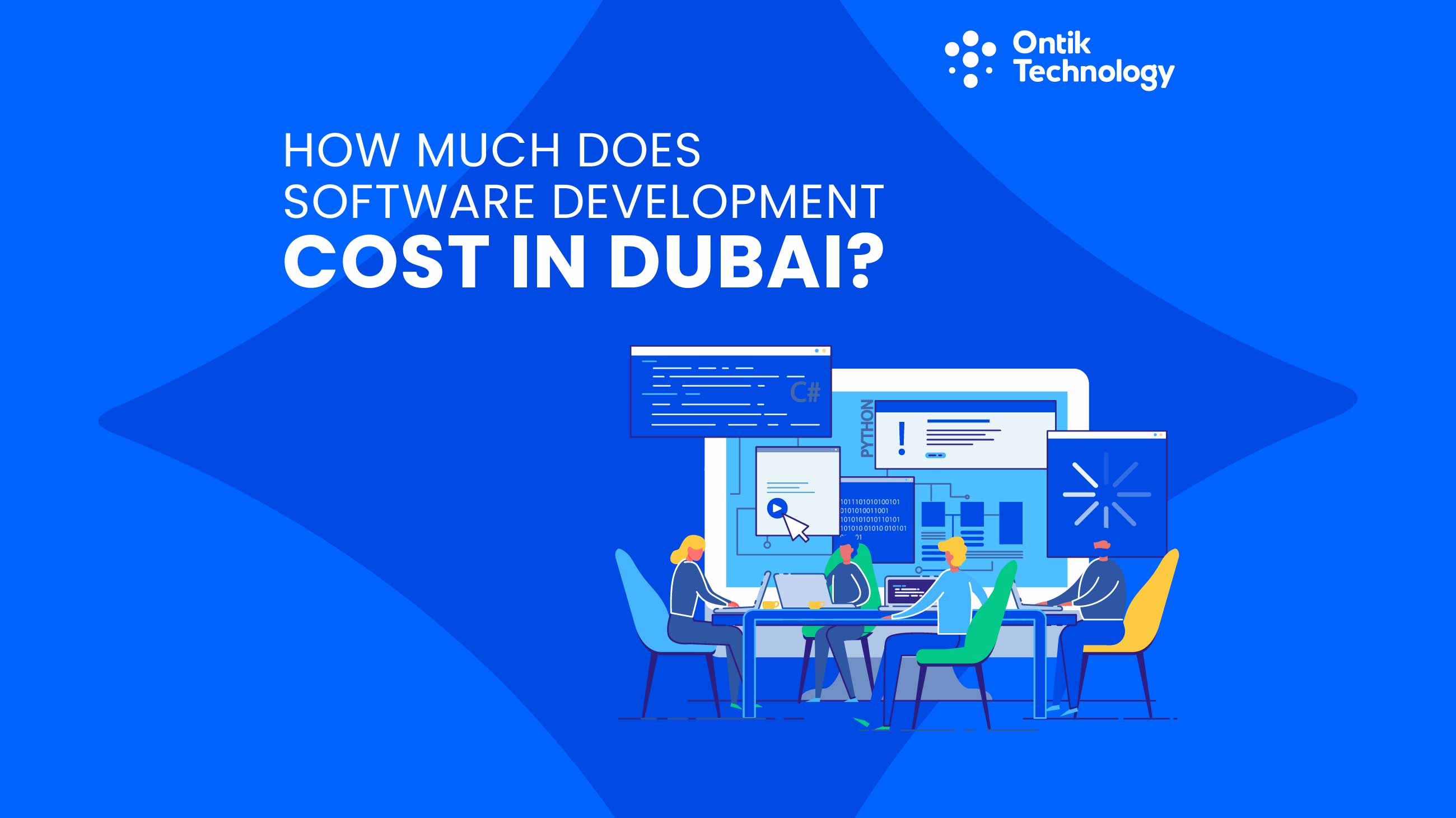

Planning a software project in Dubai? The first question that hits you is always about money. How much will this actually cost? The answer is not simple because software development costs in Dubai can swing wildly based on what you are building and who builds it for you.
You might get quotes from AED 40,000 to well over AED 500,000 for the same project idea. Confusing, right? This guide breaks down every cost factor you need to know. You will learn exactly where your money goes and how to budget smartly for your next software project.
Dubai has become a serious tech hub in the Middle East. The city attracts talented developers and innovative companies from around the world. But with opportunity comes complexity, especially when it comes to software development pricing.
To avoid unexpected budget issues, it's essential to understand the costs upfront, whether you're seeking custom software development or specific, specialized solutions. We'll bypass the generalities and provide you with concrete figures.
Software Development Cost in Dubai: 2026 Price Breakdown
Custom software development in Dubai typically ranges from AED 146,000 to AED 1,800,000 ($40,000 to $500,000+). The wide range exists because every project brings unique requirements and challenges. Software companies in Dubai operate across different pricing tiers based on expertise and service models.
Understanding software development pricing models is crucial when evaluating quotes. The software development rate Dubai market offers varies significantly, and knowing the cost of software developers UAE helps you make informed decisions. The average software project budget Dubai depends on multiple variables, but using a Dubai software cost calculator can provide initial estimates for planning purposes.
Here is what you can expect based on project complexity:
Cost by Complexity Level
AI software development costs more. These intelligent systems range from AED 110,000 to AED 1,100,000+ ($30,000 to $300,000+). The price jumps because AI requires specialized skills, extensive data processing, plus ongoing model training.
A simple calculation helps you estimate costs early. Take your project hours and multiply by the hourly software development rate in Dubai. Quality teams average around AED 300 per hour. So a 500-hour project costs roughly AED 150,000 before additional expenses.
Mobile app development cost sits in a similar range. Basic apps start around AED 73,000 ($20,000), while complex marketplace apps can hit AED 257,000 ($70,000) or more. The platform choice matters too. Android app development cost often runs 15-20% higher than iOS app development services because of device fragmentation.
Understanding these ranges helps you plan budgets realistically. Next, let's explore why these costs vary so dramatically.
Why Software Development Costs Vary So Much in Dubai
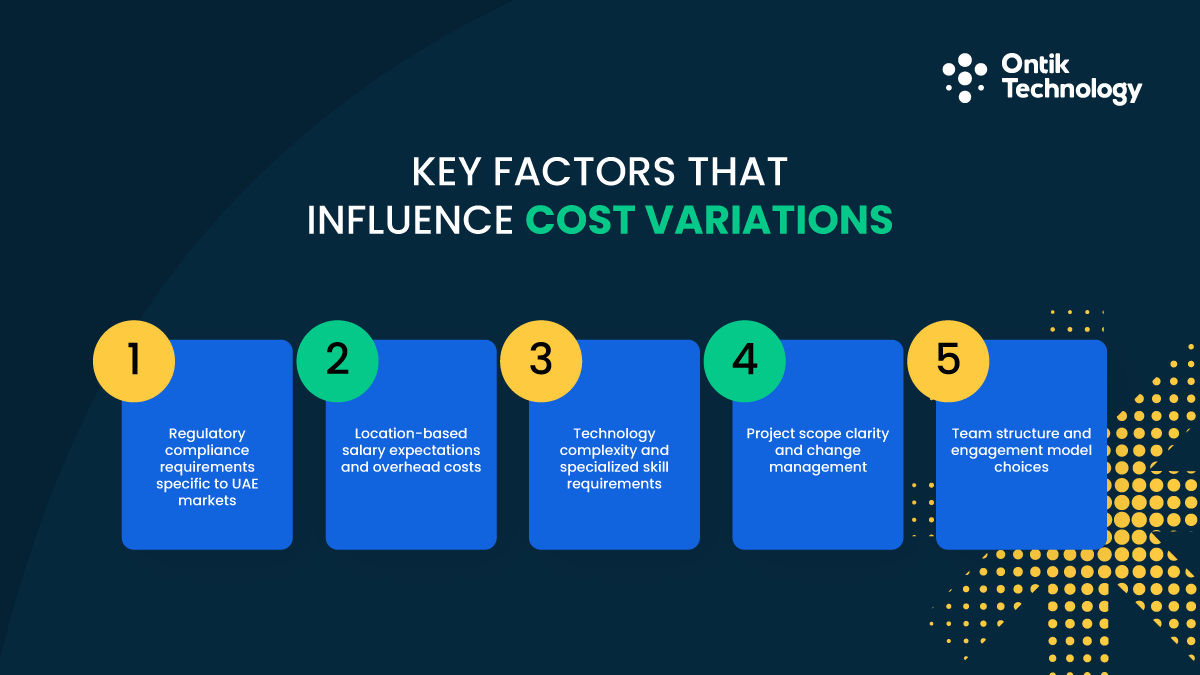
Several forces drive the massive price differences you see when you develop software in Dubai. Understanding these helps you evaluate quotes and avoid surprises.
Key factors that influence cost variations:
- Regulatory compliance requirements specific to UAE markets
- Location-based salary expectations and overhead costs
- Technology complexity and specialized skill requirements
- Project scope clarity and change management
- Team structure and engagement model choices
The UAE market adds unique layers. UAE regulatory compliance PDPL requirements are mandatory for all software projects. Dubai operates under specific regulations like the Personal Data Protection Law (PDPL). Your software must comply with these rules. Compliance work adds planning time, legal reviews, plus security implementations that increase development cost by 10-25%.
Location plays a big role too. The Dubai developer hourly rate commands premium pricing compared to offshore teams but offers advantages. You get face-to-face meetings, local market knowledge, plus easier communication across time zones. Many businesses choose hybrid models to balance cost efficiency and quality.
Technology choices create price gaps. Understanding software development cost factors helps you anticipate where expenses accumulate. A basic web app using standard frameworks costs far less than a blockchain-powered platform with AI features. Project complexity cost analysis reveals that advanced tech requires specialized software developers who command premium rates. Machine learning engineers, for example, can cost 40-60% more than general full-stack developers. The team structure impact pricing significantly, with different engagement models offering varying cost benefits.
Project scope creep kills budgets. Research from Deloitte shows that 30% of cost overruns stem from poorly defined requirements. When features keep getting added mid-project, development time stretches and costs spiral. This is why discovery phases matter so much.
Development team structure influences pricing significantly. An in-house team in Dubai might cost AED 400,000+ annually per developer when you factor in salaries, benefits, office space, plus equipment. Offshore software team options through companies like Ontik Technology can cut those costs by 40-60% while maintaining quality.
Dubai vs Middle East: Regional Cost Comparison
How does Dubai stack up against neighbors? Let's look at software development cost Middle East pricing across the Gulf region.
Regional Hourly Rates (2026)
The regional hourly rate developers command varies based on market maturity and living costs. Dubai and Qatar lead in pricing because of higher living costs plus strong demand for tech talent. When comparing Dubai vs Saudi Arabia software pricing, you'll notice Saudi Arabia provides competitive rates plus massive market opportunity through Vision 2030 initiatives.
Quality varies by location too. The UAE has invested heavily in tech education and attracts international talent. This creates a deeper pool of experienced development companies compared to smaller markets. You might save 20% in Bahrain but spend more time on quality control.
Middle East IT outsourcing trends show increasing adoption of hybrid models. Many smart businesses use offshore development to maximize value. Offshore software development savings can reach 50-70% compared to local rates. Ontik Technology operates from Bangladesh with international delivery standards. Their hourly rate software development Middle East projects run 50-70% lower than Dubai while maintaining ISO-certified quality processes. You get experienced developers at $25-35 per hour instead of $60-80.
Regional differences matter less when you partner with the right team. What really drives your total cost is understanding the specific factors that influence every project.
What Drives Software Development Costs in Dubai?
Let's break down the specific factors that push your budget up or down. Each element compounds to create your final development cost in Dubai.
Project complexity sits at the top. A simple informational app with five screens costs dramatically less than an enterprise resource planning system with 50+ modules. Complexity shows up in features, user roles, data structures, plus integration points. More complexity means more development hours.
Technology stack impact on costs:
- Standard frameworks (React, Node.js): Lower rates due to larger talent pool
- Advanced AI/ML systems: 30-50% premium for specialized expertise
- Blockchain development: Premium rates for cryptography specialists
- Cloud-native architecture: Moderate costs with scalability benefits
Design investment ranges from 15-25% of total budget. Quality UI/UX design for software startups UAE plus professional branding and UI UX design cost in Middle East can boost conversions by up to 400% according to Statista. Professional UI/UX design services reduce support tickets plus training time significantly.
Integration requirements often surprise clients. Connecting to existing ERP systems, customer relationship management platforms, or payment gateways adds substantial work. Each integration needs custom API development, testing, plus security measures. Complex integrations can add 20-30% to project costs.
Security and compliance cannot be optional in Dubai. The UAE Personal Data Protection Law plus industry regulations create mandatory requirements. Cybersecurity services cost in Middle East projects add 15-20% to development cost but protect you from legal problems.
Team location creates the biggest price swings. Here is how rates compare globally:
- North America: $100-200 per hour
- Western Europe: $80-150 per hour
- Dubai/UAE: $60-80 per hour
- Eastern Europe: $40-60 per hour
- South Asia: $25-40 per hour
Hybrid models give you the best of both worlds. Keep project management plus client communication in Dubai while leveraging offshore software team Middle East options for coding. Understanding staff augmentation best practices helps you implement this approach effectively. This can reduce cost of software development by 40% compared to fully local teams.
Service-Wise Cost Breakdown: What You'll Actually Pay
Different types of software carry different price tags. Here is what each service actually costs in the Dubai market.
MVP Development Costs
MVP development cost in Middle East projects helps you test ideas before committing to full-scale development. Basic MVPs start around AED 36,750 ($10,000) for simple concepts. More sophisticated MVP software development services Dubai projects run AED 110,000-220,000 ($30,000-60,000).
Ontik Technology's MVP development services specialize in rapid delivery. Their lean approach cuts costs by focusing only on essential features. You get a working product in 8-12 weeks instead of 6+ months.
MVP cost breakdown by phase:
- Discovery and planning: 10-15% of total budget
- MVP design and prototyping: 20-25% of total budget
- Development and coding: 50-60% of total budget
- Testing and deployment: 10-15% of total budget
Smart MVP planning can cut your initial investment by 30%. Affordable MVP development for startups Middle East options make launching possible even with limited budgets. MVP app development cost in Qatar and Saudi markets run similar to UAE pricing. For AI-focused products, AI MVP development requires additional budget for data preparation plus model training.
AI Development Costs
AI software development UAE represents one of the fastest-growing sectors in the technology landscape. AI software development cost in Middle East projects range widely based on complexity. Basic chatbots with rule-based logic start around AED 100,000 ($27,000). AI chatbot cost Dubai for mid-level implementations with machine learning capabilities runs AED 250,000-600,000 ($68,000-165,000).
The machine learning development cost depends heavily on data quality and model complexity. You need clean, labeled datasets for training. Data collection plus preprocessing can consume AED 30,000-100,000 alone. Poor data quality forces expensive rework cycles. When seeking an AI development company Dubai, ensure they have proven experience with data engineering and model optimization.
Natural language processing solutions UAE require specialized expertise and typically cost 20-30% more than standard AI implementations. Machine learning development company UAE teams often use third-party AI services that add ongoing costs.
Using OpenAI APIs or Google Vision runs $100-500 monthly. Custom AI and machine learning solutions demand careful budgeting because talent costs more and projects take longer than traditional software development in Dubai.
The UAE's National AI Strategy 2031 creates opportunities for AI-focused businesses. AI consulting services for startups in Qatar and across the region support this growth. AI and machine learning solutions for businesses Middle East avoid ongoing fees but require higher upfront investment.
Web Development Costs
Website development cost Dubai varies significantly based on project scope and functionality. Corporate website development Saudi Arabia plus website maintenance cost UAE packages range from AED 50,000-150,000 ($15,000-40,000) for standard sites. E-commerce website development Dubai with payment processing plus inventory management runs AED 150,000-400,000 ($40,000-110,000).
WordPress website cost in Qatar offers budget-friendly options starting around AED 20,000 ($5,500). Custom web application UAE development using frameworks like React or Next.js cost more but provide better performance plus scalability. Finding the right web design and development company Dubai ensures your project meets both technical and business requirements.
Web development pricing tiers:
- Basic business website: AED 50,000-80,000
- E-commerce platform: AED 150,000-250,000
- Custom web application: AED 300,000-600,000
- Enterprise web portal: AED 600,000+
Web Design & Development Agency in Abu Dhabi, UAE teams plus Web Design & Development Agency in Riyadh, KSA providers offer comprehensive packages. Professional web development services include ongoing maintenance at 15-20% annually. Cloud hosting on AWS or Azure runs AED 700-3,700 ($200-1,000) monthly depending on traffic.
Mobile App Development
Mobile app development cost in Middle East starts around AED 90,000 ($25,000) for basic functionality. Android app development cost UAE plus iOS app development services Dubai run similar amounts individually. Hybrid app development cost Saudi Arabia using React Native or Flutter runs AED 110,000-257,000 ($30,000-70,000) and works on both platforms.
Cross-platform app development pricing Qatar saves money compared to building separate native apps. Mobile app developers in Middle East understand regional requirements plus user preferences. Mobile app development services deliver both native and cross-platform solutions.
Feature complexity drives mobile costs. Simple apps (4-6 screens) cost AED 90,000-130,000. Medium complexity (10-15 screens) runs AED 130,000-220,000. Complex apps (20+ screens) exceed AED 220,000.
On-demand app development cost UAE for services like ride-sharing or food delivery sits at the higher end. App development cost in Dubai includes store submission plus compliance at AED 3,700-7,400 ($1,000-2,000). Annual maintenance runs 20% of development cost.
Custom Software Development
Custom software development cost in Middle East represents the biggest investment. Enterprise software development UAE costs range from AED 440,000 to AED 1,800,000+ ($120,000-500,000+) based on scope.
Custom CRM development cost Dubai runs AED 250,000-750,000 ($70,000-200,000). ERP software development services UAE cost even more at AED 750,000-2,200,000 ($200,000-600,000). The complexity comes from integrating multiple business processes plus legacy systems.
Bespoke software solutions Middle East projects justify the investment through ownership benefits. Custom software development in Dubai eliminates licensing fees for commercial products. You own the code completely. Software product development cost Saudi Arabia plus custom software development company Qatar pricing follows similar patterns. Long-term ROI often exceeds 240% for well-planned projects.
Cybersecurity Services
Security cannot be an afterthought in Dubai's regulated environment. Basic security implementations add AED 18,000-29,000 ($5,000-8,000) to projects. Advanced security with encryption, audit trails, plus penetration testing runs AED 55,000-367,000 ($15,000-100,000+).
Essential cybersecurity services:
- Security audit and vulnerability assessment: AED 10,000-30,000
- Penetration testing: AED 15,000-40,000
- Managed security monitoring: AED 5,000-20,000 monthly
- Compliance implementation: AED 20,000-100,000
Cybersecurity audit services UAE plus managed cybersecurity services Middle East cost AED 5,000-20,000 ($1,400-5,500) monthly. This includes threat monitoring, incident response, plus regular security audits. Data protection services for fintech Middle East require these ongoing services.
Cybersecurity consulting company Dubai teams provide network security solutions Saudi Arabia plus UAE markets. Cybersecurity risk assessment cost UAE runs AED 10,000-30,000 for comprehensive reviews. Ontik Technology provides comprehensive cybersecurity solutions with real-time threat monitoring.
Staff Augmentation Costs
IT staff augmentation Dubai offers flexibility when you need specific skills temporarily. Software development staff augmentation UAE and IT staff augmentation company Dubai rates run AED 15,000-30,000 ($4,000-8,000) monthly per developer.
Hire remote developers UAE through proven partners to reduce risk. Cost of hiring developers in Saudi Arabia plus dedicated developer cost UAE varies by experience level. Hire remote developers in Middle East through proven partners to reduce risk. Understanding staff augmentation vs outsourcing and types of staff augmentation helps you choose the right engagement model.
Dedicated development team setup can be completed in just 2 weeks. The benefits of IT staff augmentation include seamless integration with your existing team. You scale up or down based on project needs without hiring headaches.
Offshore software developers Middle East cuts costs dramatically. Offshore software team Middle East and offshore staff augmentation provide skilled developers from Bangladesh or Eastern Europe cost AED 9,000-13,000 ($2,500-3,500) monthly. You maintain quality while reducing expenses by 50-60%. Offshore staff augmentation provides access to global talent pools at competitive rates.
Real Dubai Projects: What Companies Actually Paid
Nothing beats real examples to understand how much does software development cost in practice. Here are three actual scenarios from Dubai businesses.
Small Retailer: Workflow Automation
A Dubai-based retailer needed to digitize approval processes. They had 15 screens, basic integrations, plus straightforward requirements. The project took 3 months with a modest budget around AED 150,000 ($40,000).
Results came quickly. Approval time and cost both dropped significantly. Manual errors decreased by 40%. The system paid for itself in 8 months through labor savings plus faster operations.
Mid-Size Logistics Firm: ERP Integration
A logistics company needed their new software in Dubai to connect with existing ERP plus CRM systems. Final cost to develop landed around AED 350,000 ($95,000) for the 6-month project. Support tickets fell by 25% because data flowed automatically between systems. The company recovered its investment within 18 months through operational cost savings.
Enterprise Finance Platform: Compliance Heavy
A financial services firm required extensive compliance features. The enterprise software in Dubai needed 50+ screens, multiple integrations, audit trails, plus support for thousands of users. Development time stretched 14 months with cost to build a software exceeding AED 1,800,000 ($500,000).
Steep upfront costs delivered substantial returns. Audit preparation time dropped 35%. Regulatory reporting became automated. Enterprise software development investments pay off over 3-5 years when planned strategically.
How to Estimate Your Software Development Budget
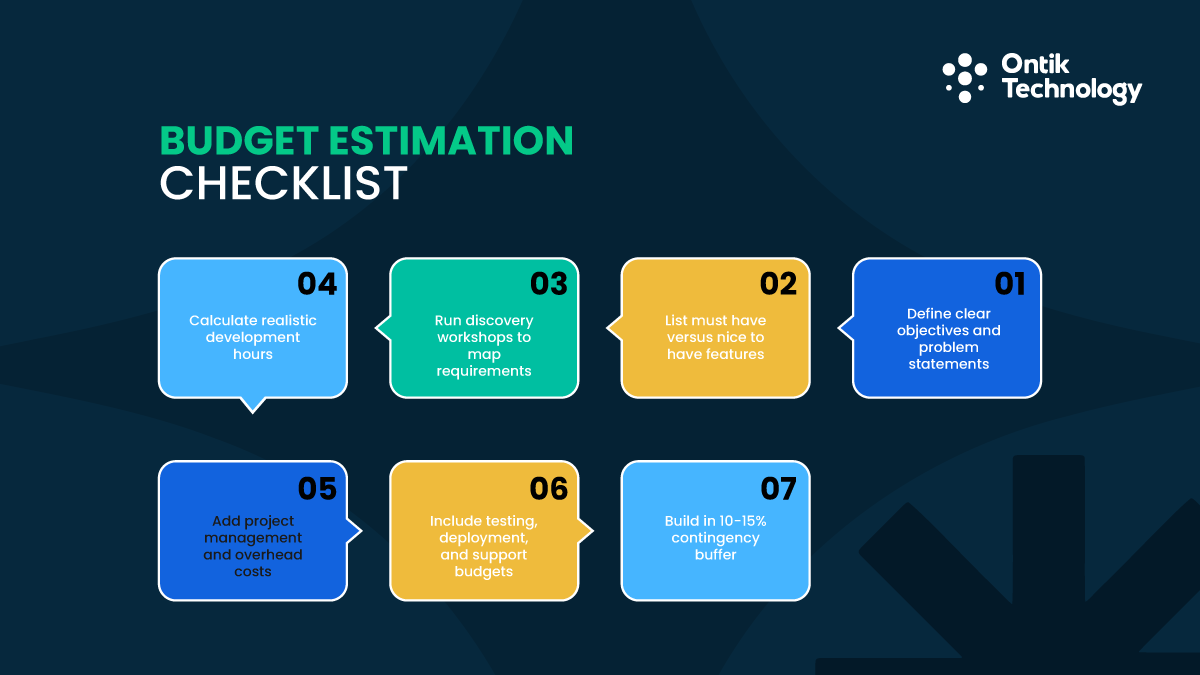
You need a systematic approach to budget accurately for development in Dubai. Follow these steps to avoid surprises.
Budget estimation checklist:
- Define clear objectives and problem statements
- List must-have versus nice-to-have features
- Run discovery workshops to map requirements
- Calculate realistic development hours
- Add project management and overhead costs
- Include testing, deployment, and support budgets
- Build in 10-15% contingency buffer
Start with clear objectives. Write down exactly what problems your software must solve. List must-have features separately from nice-to-have additions. This clarity prevents scope creep that inflates cost due to poor planning by 30% according to Deloitte research.
Run discovery workshops early. Spend AED 7,000-37,000 ($2,000-10,000) upfront to map requirements thoroughly. Development companies in Dubai that invest in discovery are 30% less likely to face budget overruns according to the Project Management Institute.
Calculate development hours realistically using a development hours calculator. A proper cost estimation formula software accounts for all project phases. Simple apps need 300-500 hours. Medium complexity projects require 500-1,200 hours. Complex enterprise software systems consume 2,000+ hours. Multiply your hours by average cost rates to get base development cost.
Agile project budgeting UAE methodologies allow for iterative refinement and better cost control. MVP budgeting for startups Dubai focuses on essential features first, reducing initial capital requirements while validating market fit.
Add these often-forgotten expenses:
- Project management (10-15% of dev costs)
- Quality assurance plus testing (15-20%)
- Design and UX work (15-25%)
- Deployment plus setup (5-10%)
- Post-launch support (15-20% annually)
Include a contingency buffer of 10-15%. McKinsey data shows nearly 50% of large IT projects overshoot budgets. Break costs into phased development cycles. Phase 1 might be MVP with core features. Phase 2 adds advanced functionality. This approach reduces upfront investment while delivering value incrementally.
Cost-Saving Strategies: The Offshore Development Advantage
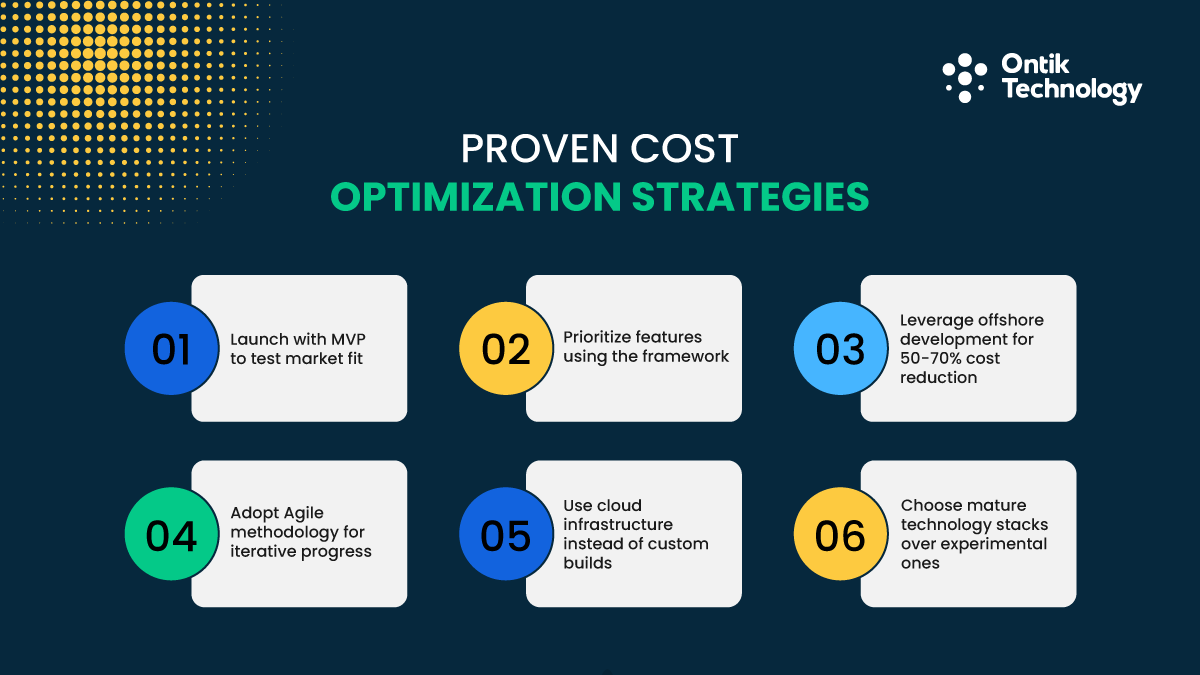
Smart businesses find ways to reduce software development cost in UAE without sacrificing quality. Here are proven strategies that work in the development ecosystem.
Start with MVP before full development. Building only essential features first cuts initial investment by 30%. You validate market fit before committing to full-scale development with expensive features.
Proven cost optimization strategies:
- Launch with MVP to test market fit
- Prioritize features using must-have/nice-to-have framework
- Leverage offshore development for 50-70% cost reduction
- Adopt Agile methodology for iterative progress
- Use cloud infrastructure instead of custom builds
- Choose mature technology stacks over experimental ones
Prioritize features ruthlessly. Create three buckets: must-have, should-have, plus nice-to-have. Build software with only must-haves for version 1. This discipline keeps budgets under control while delivering functional products.
Leverage offshore development strategically. This represents the single biggest opportunity for cost savings. Remote staff augmentation teams from South Asia cost 50-70% less than Dubai-based development teams. Quality remains high when you choose experienced partners.
Ontik Technology exemplifies the offshore advantage. They deliver enterprise-grade development from Bangladesh at rates 60% below Dubai prices. Their team includes 220+ successful projects across web, mobile app, AI, plus blockchain.
Cost Comparison: Dubai vs Offshore
Adopt Agile development practices. Agile methodology allows iterative progress with regular feedback loops. You catch problems early before they become expensive to fix.
Use cloud infrastructure instead of building everything custom. Cloud solutions from AWS, Google Cloud, plus Azure offer proven options for hosting, databases, plus scaling. You pay only for what you use.
Choose proven technologies over experimental ones. Mature frameworks like React, Node.js, plus Python have large developer pools. This keeps rates reasonable and reduces project risk. For specialized needs, blockchain development requires careful planning but delivers strong security benefits.
Hidden Costs and Budget Pitfalls to Avoid
Even careful planning misses certain expenses. Watch for these common budget traps in software development companies in Dubai projects.
Maintenance costs catch many by surprise. Software needs ongoing care after launch. Expect to spend 15-20% of initial development cost annually. This covers bug fixes, security updates, minor improvements, plus technical support.
Often-overlooked ongoing expenses:
- Annual maintenance (15-20% of initial cost)
- Cloud hosting that scales with traffic
- Third-party API subscriptions
- Legal and compliance reviews
- Marketing and user acquisition
- Technical support and training
Cloud hosting expenses UAE grow with success. A basic setup costs AED 700-1,800 ($200-500) monthly. Heavy traffic can push this to AED 7,000-37,000 ($2,000-10,000) monthly. Plan for scaling costs as your user base expands in the development market.
Third-party API subscription cost adds up quickly. Third-party services accumulate expenses. Payment gateways charge transaction fees plus monthly minimums. Analytics tools, email services, plus APIs each carry subscription costs. A typical application uses 5-10 third-party services costing AED 1,800-7,400 ($500-2,000) monthly combined.
Legal plus compliance work often gets underestimated. Software compliance audit Dubai ensures adherence to local regulations. UAE regulations require specific data protection measures. Legal reviews cost AED 7,000-37,000 ($2,000-10,000) for standard projects.
Marketing plus user acquisition deserve budget allocation. Building great software means nothing if nobody uses it. Set aside 20-30% of development cost for initial marketing.
Why projects go over budget? Software development cost breakdown analysis shows these main culprits: scope creep (30% of overruns), poor requirements (25%), integration problems (20%), data migration (15%), plus team changes (10%).
McKinsey research confirms that 45% of large IT projects run over budget while delivering 56% less value than promised. The cost of building quality software requires experienced partners who understand these pitfalls.
Choosing Your Development Partner: Why Ontik Technology Delivers Value
Partner selection matters more than any other decision when you develop software in Dubai. The right team saves you money while delivering quality. When evaluating partners, consider whether staff augmentation versus consulting or staff augmentation versus managed services better fits your needs.
Essential criteria for partner selection:
- Proven track record with 500+ completed projects
- Technical expertise matching your specific requirements
- Transparent pricing with detailed breakdowns
- Strong communication and regular updates
- Flexible engagement models
- Post-launch support commitment
At Ontik Technology, we bring deep expertise across multiple technologies. Our team masters JavaScript, Python, React, Node.js, Django, Laravel, plus emerging technologies like blockchain. We have successfully delivered 500+ projects for clients worldwide since 2016.
We operate 24-hour schedules across global time zones. Our project managers provide daily updates plus weekly detailed reports. You get complete transparency into progress, blockers, plus upcoming milestones at every stage.
Why businesses choose us:
- Setup dedicated development teams in just 2 weeks
- 50-70% cost savings compared to Dubai-based teams
- ISO-certified development standards with thorough testing
- Flexible engagement models for different project needs
- Clients typically save $100,000-300,000 on medium to large projects
Our global client base spans the USA, Canada, Australia, Europe, plus Middle East. We have built platforms for universities, healthcare providers, fintech firms, plus e-commerce businesses. Check our portfolio to see projects like Home Run (real estate platform), InCheckFitness (health app), plus Chippit (fintech solution).
We provide ongoing maintenance, updates, plus technical support after deployment. Our teams help you scale as your business grows without disappearing after launch.
Final Thoughts
You now understand exactly what drives software development cost in Dubai. You know the price ranges, hidden expenses, plus cost-saving strategies that work. The key is choosing the right software development partner who delivers quality within your budget.
Ontik Technology combines global expertise with cost-effective offshore development. Their team has successfully delivered 220+ projects for clients in 20+ countries. They set up dedicated teams in 2 weeks plus provide transparent pricing from day one.
Whether you need MVP development, custom software development, mobile app development, or AI solutions, Ontik delivers reliable results. Their offshore advantage saves you 50-70% compared to Dubai-based development teams without compromising quality.
Book a free consultation to discuss your project requirements. Get a detailed cost estimate tailored to your specific needs in the software development in the UAE market. Let's turn your software vision into reality with a partner who understands both quality plus value.
Frequently Asked Questions
What is a realistic budget for building a mobile app in Dubai?
App development cost UAE 2026 varies by complexity. Basic mobile apps start around AED 90,000 for simple functionality. Medium complexity apps with backend integration run AED 180,000-220,000. Complex marketplace apps exceed AED 400,000. Cross-platform development costs 20-30% less than separate native apps.
Why are software development costs higher in Dubai than some offshore markets?
Hourly rate developers Dubai commands premium pricing due to several factors. Dubai's higher living costs drive salary expectations up. Office space plus business licenses add overhead. Regulatory compliance for UAE markets adds complexity. However, Dubai offers proximity to clients plus local market knowledge advantages.
What hidden costs should I watch out for when hiring a Dubai-based development agency?
Hidden costs in software projects often surprise first-time buyers. Maintenance costs 15-20% annually after launch. Cloud hosting scales with traffic. Third-party API subscriptions accumulate quickly. Legal reviews plus compliance audits cost extra. Marketing needs separate budgets. Always request comprehensive quotes.
How soon can I launch with an MVP and what will it cost?
Simple MVPs take 8-12 weeks to build. Costs start around AED 37,000 for basic concepts. Most business MVPs run AED 110,000-220,000. Complex MVPs reach AED 400,000. Timeline depends on feature complexity plus integrations needed.
What hourly rates do developers in Dubai charge and how do they compare offshore?
Software development FAQ Dubai inquiries often focus on rates. Dubai developers average AED 220-440 per hour. Offshore teams in South Asia cost AED 90-130 per hour while maintaining quality. The 50-70% savings add up significantly on projects requiring 1,000+ development hours.
Maintenance and ongoing support: how much should I budget after launch?
Software maintenance Dubai requires ongoing investment. Plan for 15-20% of initial development costs annually. A AED 400,000 project needs roughly AED 60,000-80,000 yearly. This covers bug fixes, security updates, plus technical support. Cloud hosting adds AED 2,400-36,000 annually depending on traffic.
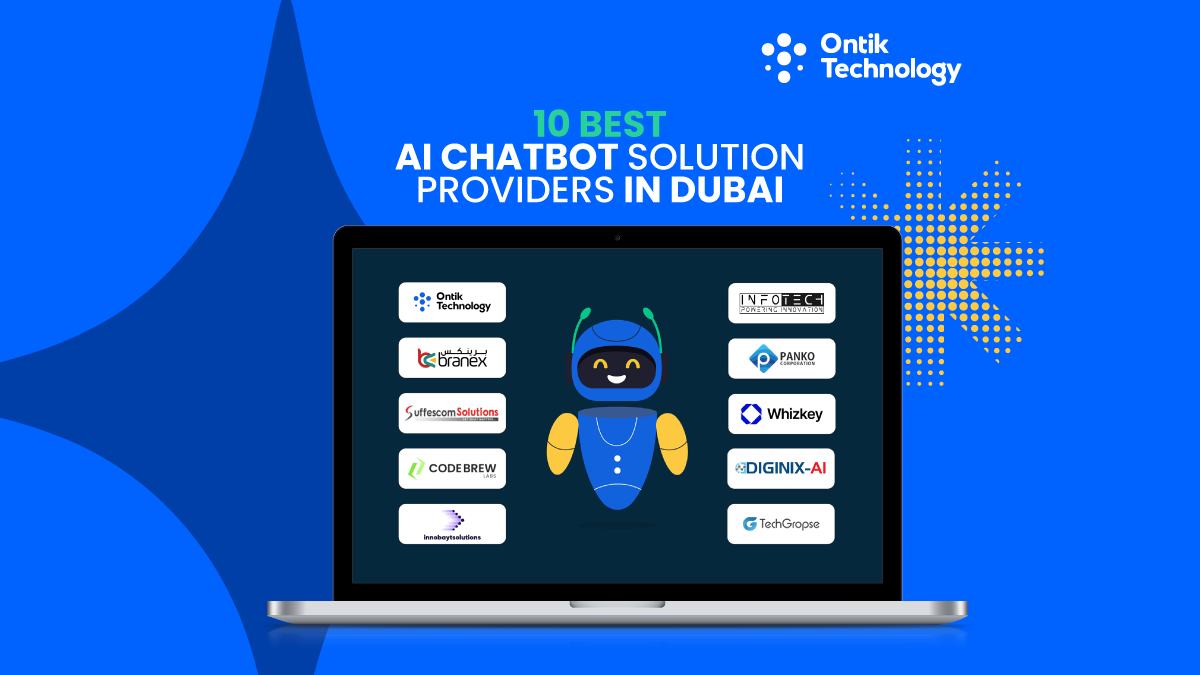
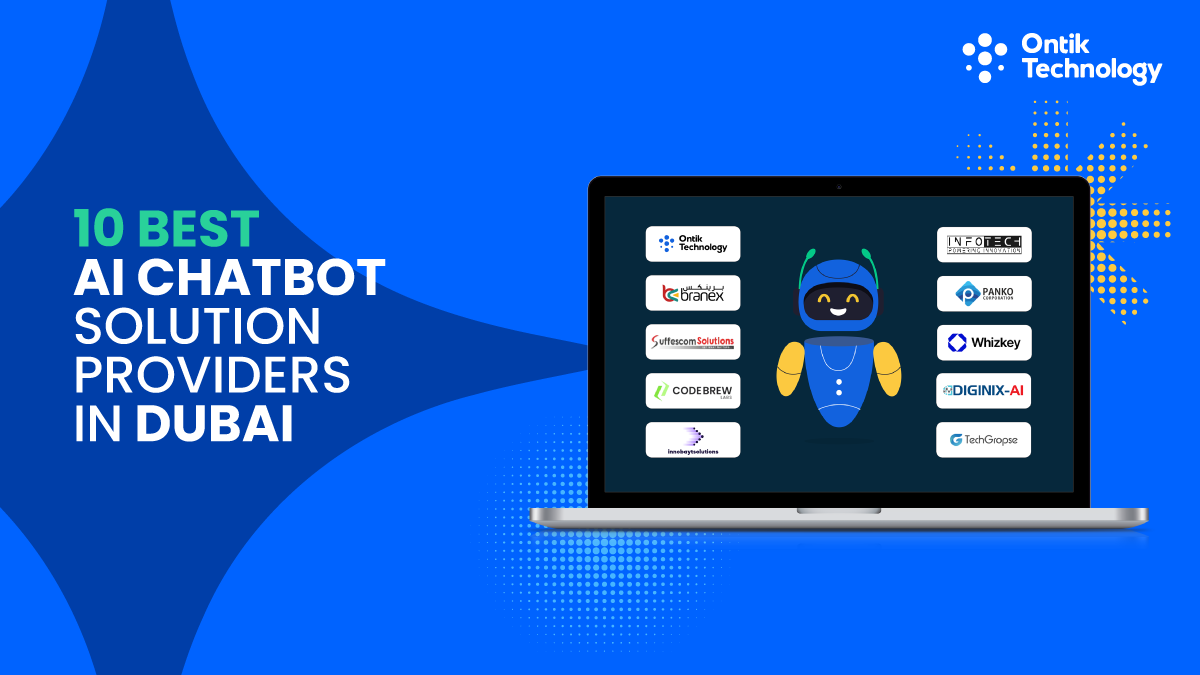
Dubai is among the most modern cities in the world. Technology and commerce are now advancing together. In Dubai today, the use of AI chatbot solutions is now becoming one of the major ways to implement some of these digital trends that will help to promote this growth. Walk into any bank, real estate firm, or online store, and chances are a chatbot will greet you first.
These bots are not just answering questions, they’re helping people book services, track deliveries, and get instant support without waiting in line. With the UAE government pushing for smart innovation and automation, demand for AI chatbot solutions in Dubai has grown over 70% in the last three years.
Today’s companies use chatbots to handle bookings, payments, and even product recommendations all in real time. In this guide, we explore the top 10 best AI chatbot solution providers in Dubai, highlighting the firms driving this digital revolution with advanced technology, real results, and local expertise.
Top 10 Best AI Chatbot Solution Providers in Dubai
With a focus on digital business in Dubai, AI chatbots solutions are becoming an increasingly important element of daily operations for many organizations in the region. These systems can be used in numerous areas such as customer service, sales, and to reduce the amount of time and errors that occur in each area. The top ten organizations listed below were chosen for their ability to deliver projects in a timely manner; provide long-term support; and have provided results in multiple industries
1. Ontik Technology
Website: ontiktechnology.com
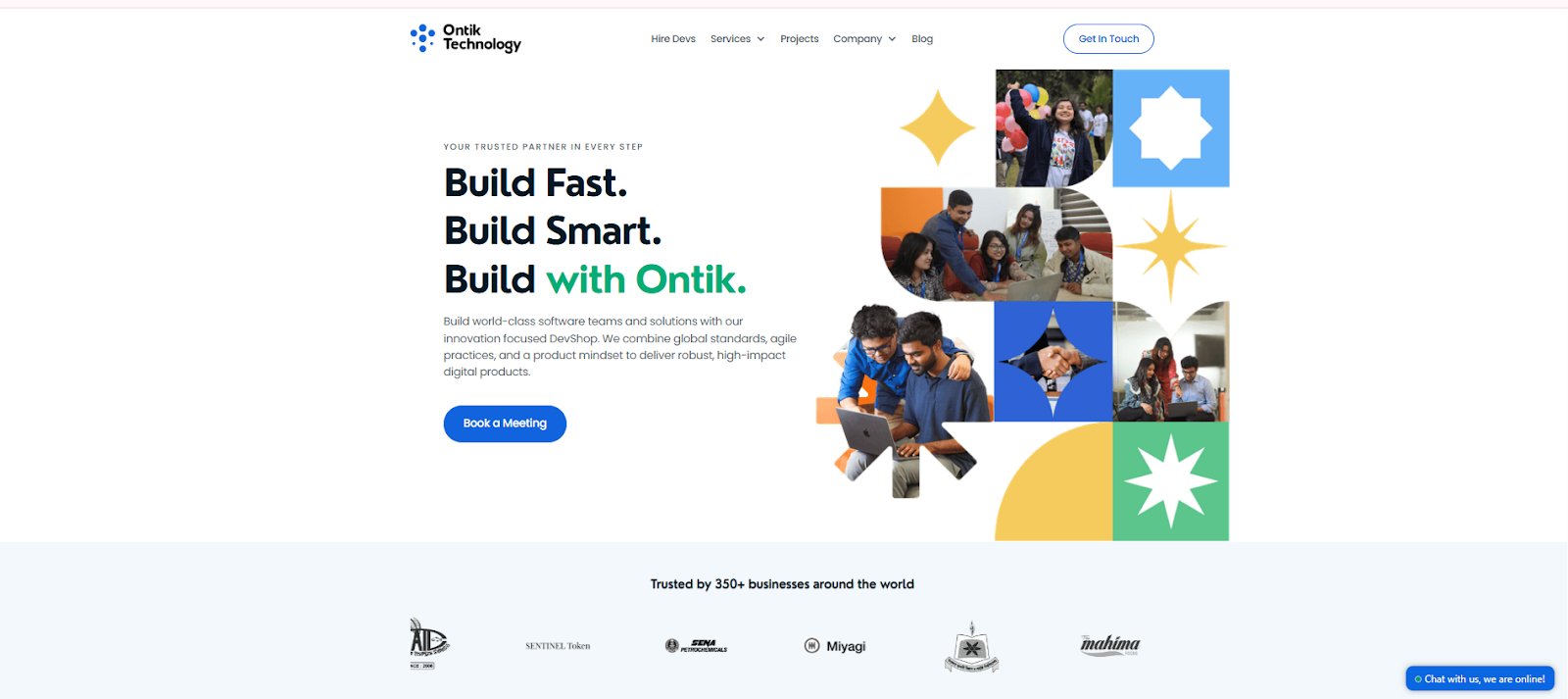
Core Expertise: AI chatbot development, AI and Machine learning service, business automation, and digital system design.
Ontik Technology began operations in 2016 and has stayed consistent since then. The firm works with Dubai businesses that want chatbots built for actual results, not just demos. Their developers focus on practical AI chatbot solutions that answer customer questions instantly and keep data flowing into CRM systems without manual entry. Most of their clients use these bots to support customer service teams or to handle high-volume eCommerce queries.
Strengths: Ontik builds for speed and function. Their chatbots run on natural language processing and adaptive AI models, designed to reduce waiting time and lift customer satisfaction scores. The systems are simple to maintain, which suits mid-sized companies that can’t afford long training cycles. Clients mention their honest timelines and steady technical support.
Industries Served: eCommerce, healthcare, logistics, and fintech.
Ratings & Reputation:
Performance – 4.8/5
Communication – 4.9/5
After-service – 4.7/5
In Dubai’s growing automation market, Ontik Technology stands out for reliable builds and clear project handling, one of the few AI chatbot development companies in UAE known more for delivery than presentation.
2. Branex
Website: branex.ae
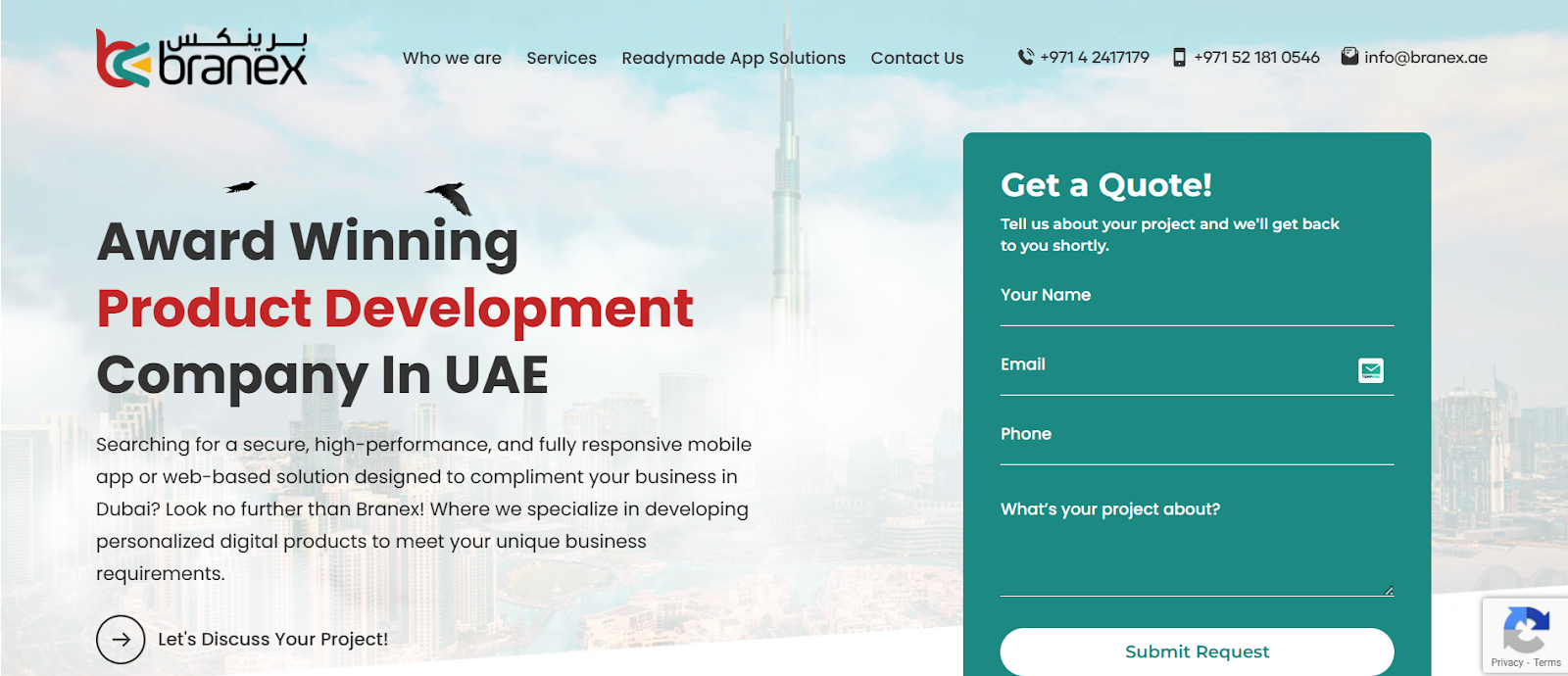
Core Expertise: Conversational AI, automation platforms, web and mobile app development.
Branex has been active in Dubai’s digital market for more than a decade. The company builds AI chatbot solutions that help local businesses manage customer requests without delay. Their systems respond quickly, record chat data, and guide users through simple automated steps. Most firms use Branex chatbots to answer sales queries or direct customers to live agents when needed.
Strengths: The team focuses on ease of use and clean integration. Their chatbots work across different platforms and can be trained to match a brand’s tone. Clients mention that Branex provides strong follow-up support and steady improvements after launch.
Main Working Sectors: Retail, education, real estate, and travel.
Ratings & Reputation:
Performance – 4.7/5
Communication – 4.8/5
After-service – 4.6/5
Branex continues to hold its spot among trusted AI chatbot development companies in Dubai, valued for practical builds and responsive customer service.
3. Suffescom Solutions
Website: suffescom.com
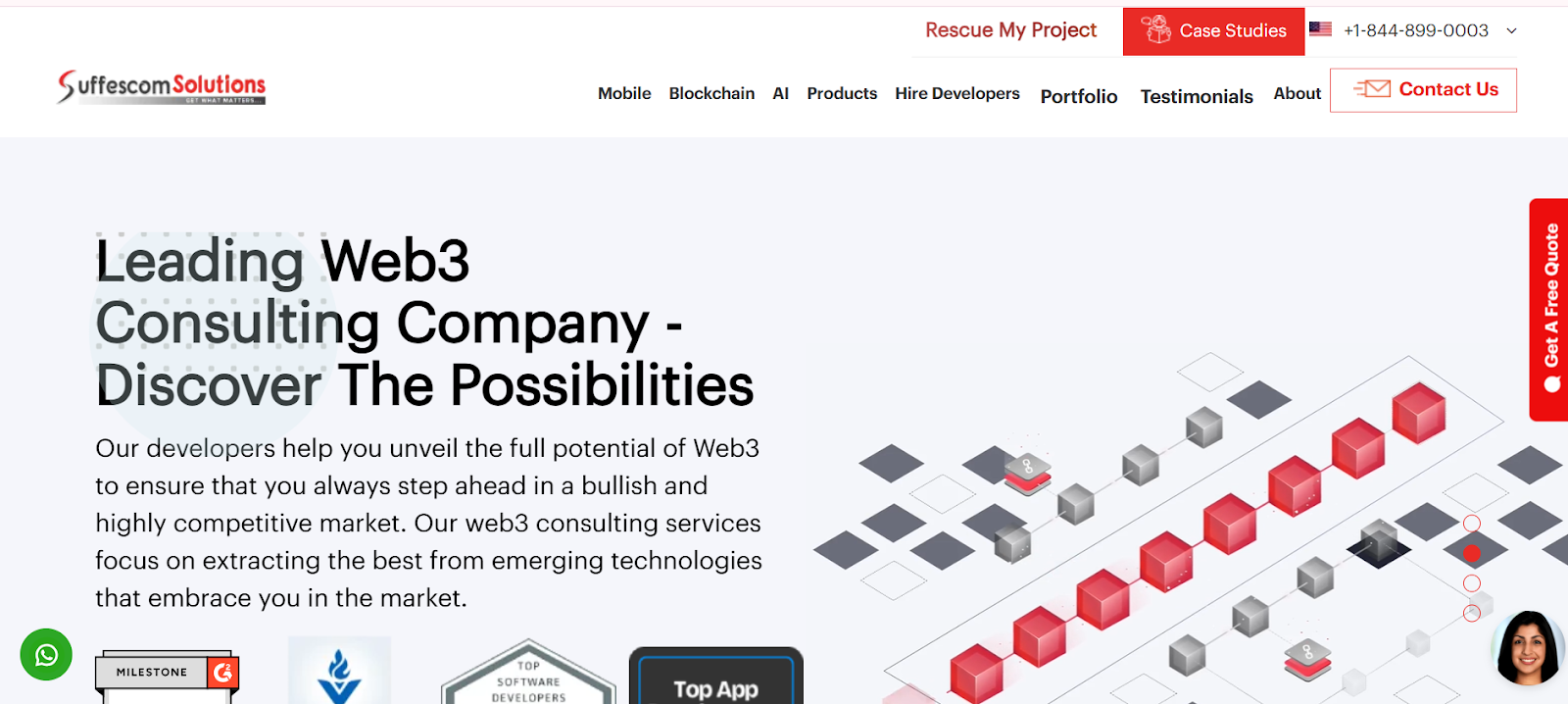
Core Expertise: ai chatbot development, automation systems, and enterprise software integration.
Suffescom Solutions has worked in Dubai’s automation market for years, helping companies bring smarter chat systems into daily operations. The firm develops AI chatbots that handle real-time customer support and service tasks with strong accuracy.
These bots use natural language processing and a layered ai model that improves from active customer interactions. The approach cuts manual effort and enhances the overall customer experience, especially for businesses managing large service networks.
Strengths: Suffescom builds bots that can manage hundreds of conversations at once and switch smoothly to a human agent when needed. The systems are checked for chatbot performance and refined regularly. Clients say the tools reduce workload and raise response quality.
Main Working Sectors: Telecom, retail, healthcare, and logistics.
Ratings & Reputation:
Performance – 4.6/5
Communication – 4.7/5
After-service – 4.6/5
Suffescom remains one of the leading AI chatbot solution provider in Dubai, UAE, offering consistent AI chatbot development solutions in Dubai UAE that automate complex customer service operations for large enterprises.
4. Code Brew Labs
Website: code-brew.com

Core Expertise: AI chatbot development, automation tools, mobile applications, and AI solutions.
Code Brew Labs has been in Dubai’s tech scene long enough to know what companies really need. Their AI chatbots don’t chase fancy extras. They just answer fast, link with CRMs, and keep data moving. Each chatbot runs on an AI model guided by natural language processing so it can follow tone and context. In practice, that means fewer confused customers and quicker replies during rush hours.
Strengths: Most clients point to reliability. The bots handle live customer support, not demo chats. They’re checked for chatbot performance and tuned after launch to fit each brand’s workflow. Teams report smoother automated customer support tasks and stronger customer engagement once the system settles in.
Main Working Sectors: Banking, travel, retail, and logistics.
Ratings & Reputation:
Performance – 4.7/5
Communication – 4.8/5
After-service – 4.6/5
Code Brew Labs remains one of the best chatbot app development companies in Dubai, Abu Dhabi, trusted for stable builds and steady AI-powered customer service that keeps operations running quietly but efficiently.
5. Innobayt Solutions
Website: innobaytsolutions.com

Core Expertise: ai chatbot development, chatbot software, mobile app systems, and conversational ai solutions.
Innobayt Solutions is a Dubai-based company that builds AI chatbots for small and mid-sized firms that want automation without heavy cost. Their products are simple, practical, and designed for real users. Each Ai chatbot runs on natural language processing and AI technology that keeps replies accurate and conversational. The systems also support virtual assistant features, helping businesses automate customer support while maintaining quick, personal responses.
Strengths: Innobayt’s tools are light and dependable. Clients mention faster service handling and higher customer satisfaction rates since deploying these bots. Each chatbot platform is tested for chatbot performance before launch, ensuring smooth live chat sessions and stable ai-powered chatbot results across different channels.
Main Working Sectors: Real estate, healthcare, retail, and education.
Ratings & Reputation:
Performance – 4.7/5
Communication – 4.8/5
After-service – 4.7/5
Innobayt continues to be listed among chatbot companies in the UAE, valued for its clear design, quick setup, and reliable ai chatbot development services that improve customer experience and automate customer support effectively.
6. Infotech UAE
Website: infotechuae.com

Core Expertise: AI chatbot development, AI solutions, automation software, and data systems.
Infotech UAE has worked in Dubai’s tech field for years, helping local companies move toward smarter customer systems. The team builds AI chatbots that handle everyday support and make service replies faster. Each chatbot uses an AI model that improves with live use. The system applies natural language processing to understand customer inquiries and store useful data for future chats.
Strengths: Infotech focuses on consistency over flash. Their AI chatbots for customer service are tested for chatbot performance before going live. Clients mention fewer missed requests and smoother customer engagement since adopting these tools. The bots also automate customer support tasks, keeping customer service operations steady even during busy hours.
Main Working Sectors: Banking, healthcare, logistics, and eCommerce.
Ratings & Reputation:
Performance – 4.7/5
Communication – 4.8/5
After-service – 4.7/5
Infotech UAE is one of the leading AI chatbot development firms in UAE, known for dependable AI chatbot development services built on advanced AI technology and practical post-launch support.
7. Pankoe RP
Website: pankoerp.com
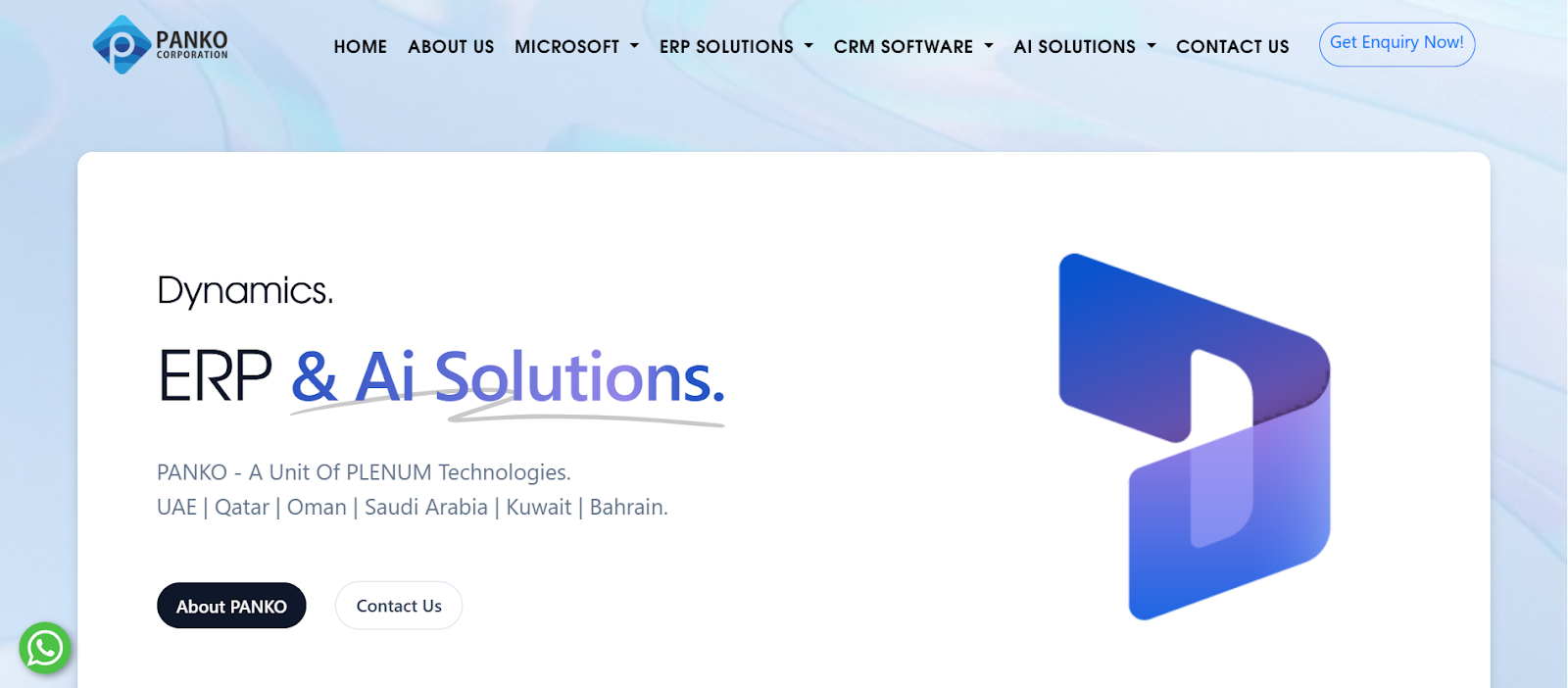
Core Expertise: AI chatbot development, business automation, ERP systems, and AI solutions.
Pankoe RP has built its place in Dubai’s digital space by focusing on automation that makes everyday work easier. The Company creates AI Chatbots for Real Time Customer Support & to Eliminate Manual Processing. Every Chatbot is run through a Natural Language Processing (NLP) Model & an Artificial Intelligence (AI) Model to quickly & reliably provide responses. Their bots are used in multiple setups, from finance portals to logistics tracking systems, keeping customer experience smooth and data flow accurate.
Strengths: Pankoe RP builds systems that are practical and easy to maintain. Their chatbots record customer interactions automatically and handle repetitive queries before sending complex cases to a human agent. This setup helps automate customer support while improving chatbot performance over time. Clients note visible gains in response time and overall customer satisfaction.
Main Working Sectors: Finance, logistics, manufacturing, and eCommerce.
Ratings & Reputation:
Performance – 4.6/5
Communication – 4.8/5
After-service – 4.6/5
Pankoe RP is among the AI chatbot development company in Dubai, UAE trusted for reliable automation, balanced design, and strong technical follow-up support.
8. Whizkey
Website: whizkey.com
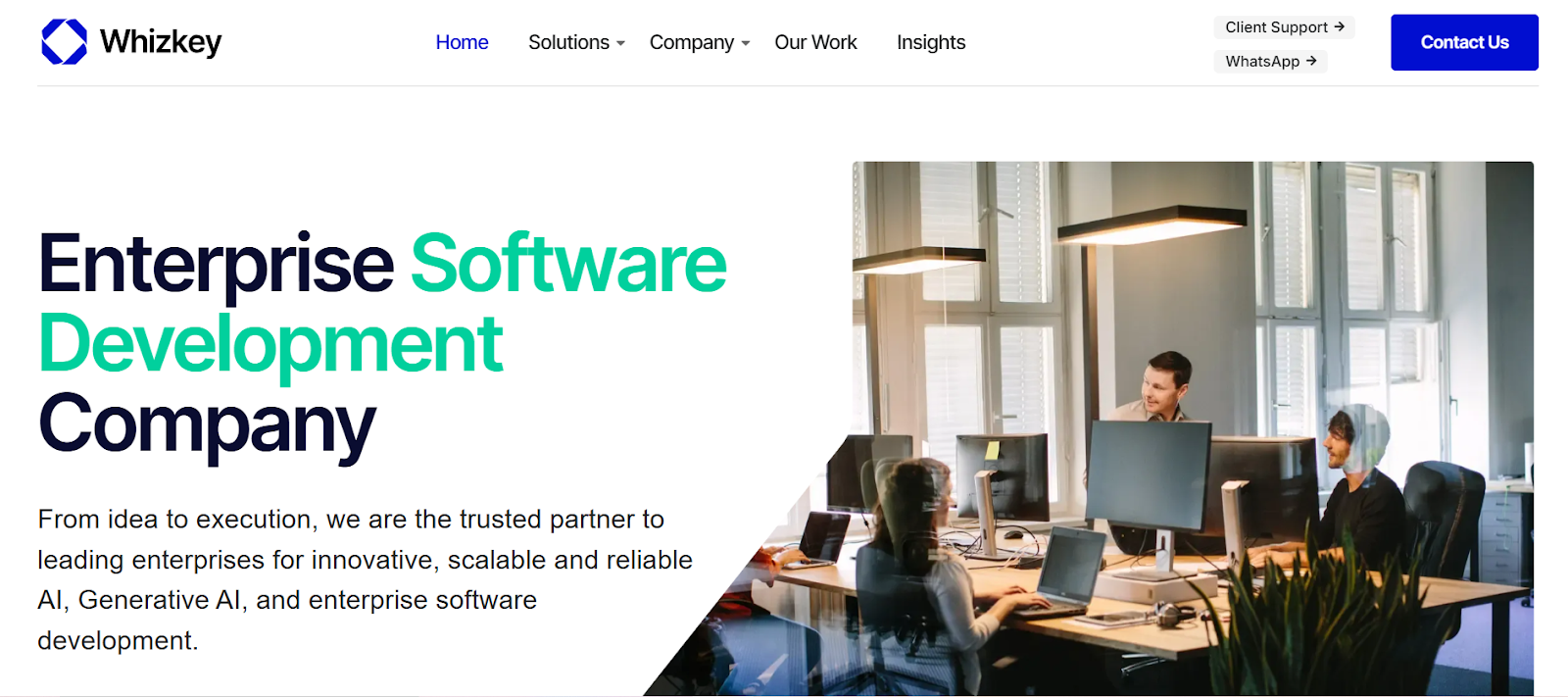
Core Expertise: AI chatbot development, custom AI tools, and automation for online platforms.
Whizkey works quietly but effectively in Dubai’s growing automation space. The firm builds AI chatbots that handle daily customer support, track orders, and guide users through live chat. Each chatbot relies on an AI model and natural language processing to keep replies quick and accurate. The systems help improve customer experience by reducing wait times and handling common questions before a human agent steps in.
Strengths: Whizkey’s chatbots are stable and easy to manage. They record customer interactions automatically and update responses through continuous learning. Clients mention better customer engagement and faster resolutions since adopting these systems. The tools also automate customer support, helping teams maintain strong customer service operations across channels.
Main Working Sectors: Retail, eCommerce, telecom, and education.
Ratings & Reputation:
Performance – 4.8/5
Communication – 4.7/5
After-service – 4.7/5
Whizkey stands as an AI custom chatbot development company in Dubai, recognized for reliable chatbot builds, real-world usability, and responsive customer service chatbots that keep communication simple and direct.
9. Diginix AI
Website: diginixai.com

Core Expertise: AI chatbot development, advanced AI systems, and automation for business support.
Diginix AI has built a strong name in Dubai’s automation scene. The company develops AI chatbot solutions that manage customer support, collect chat data, and reply in several languages. Each AI chatbot is based on an AI model trained with natural language processing to get better after every customer interaction. You’ll find their chatbots across finance, travel, and telecom firms where quick and accurate responses are essential.
Strengths: The systems are practical and scale smoothly. Diginix AI checks every chatbot for chatbot performance and accuracy before deployment. Clients report stronger customer engagement and improved customer experience since integration. The bots also support human agents by helping automate customer support, allowing teams to focus on priority requests.
Main Working Sectors: Retail, fintech, telecom, and logistics.
Ratings & Reputation:
Performance – 4.7/5
Communication – 4.8/5
After-service – 4.6/5
Diginix AI stands among the Generative AI company UAE and continues to grow as one of the leading AI chatbot development firms in UAE, offering Generative AI services UAE and advanced AI technology that support long-term automation and reliable digital communication.
10. TechGropse
Website: techgropse.com
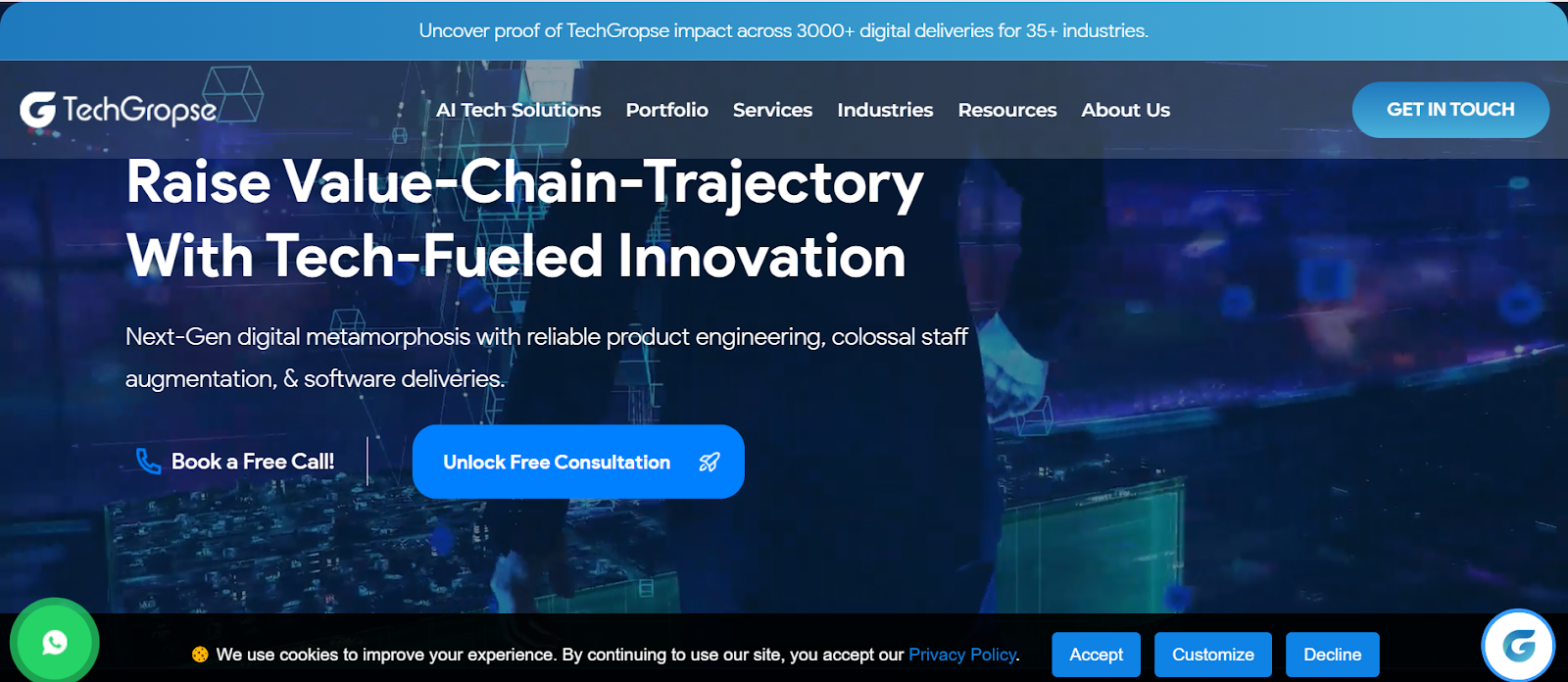
Core Expertise: AI chatbot development, AI-powered automation, and mobile app engineering.
TechGropse is a familiar name in Dubai’s technology scene. The company builds AI chatbots that make customer support faster and reduce manual work. Every chatbot uses an AI model supported by natural language processing to respond instantly and keep chat accuracy consistent. Their bots manage customer interactions across mobile apps, websites, and live chat systems, helping businesses improve customer experience without extra staff.
Strengths: TechGropse develops practical automation for enterprises and startups. Their chatbots are tested for chatbot performance, giving smooth handovers from AI agent to human agent when needed. The systems also automate customer support while improving customer satisfaction and customer engagement. Clients note clear reporting tools that show usage data and help teams retrain bots easily.
Main Working Sectors: eCommerce, travel, real estate, and education.
Ratings & Reputation:
Performance – 4.8/5
Communication – 4.8/5
After-service – 4.7/5
TechGropse remains one of the best chatbot service Dubai and a leading AI chatbot development company in Dubai, UAE, offering dependable AI chatbot development services and best AI chatbot solutions for both growing and established businesses.
Why Intelligent Chatbots Are Changing the Way Dubai Does Business
Dubai’s service industry runs on quick decisions and constant client contact. That pressure has turned AI chatbots for customer service from a nice-to-have into standard infrastructure. Banks, hospitals, and retail groups use them to deal with the daily flood of messages that once needed entire support teams.
1. Precision in Real Time
Modern conversational AI tools don’t wait for business hours. They scan intent, language, and tone instantly through natural language processing, then route complex issues to a human agent before delays stack up. It’s the kind of precision that matters in a city built around instant response.
2. Shifting the Human Role
Automation now handles routine customer interactions, leaving people to manage exceptions, the questions that need empathy or judgment. Companies report faster resolution and more focused staff.
3. Data That Sharpens Service
Every exchange becomes data. Managers review patterns, sentiment, and recurring pain points to improve customer experience and product design.
4. Multilingual and Local Fit
In Dubai’s bilingual market, most systems now operate in both Arabic and English. That flexibility builds trust and shortens support time for diverse audiences.
5. Cost Efficiency with Scale
Automation lowers ticket volumes and handling time. Many local firms report 30–40% savings in customer care budgets within the first year.
Key Features of Leading AI Chatbot Solutions
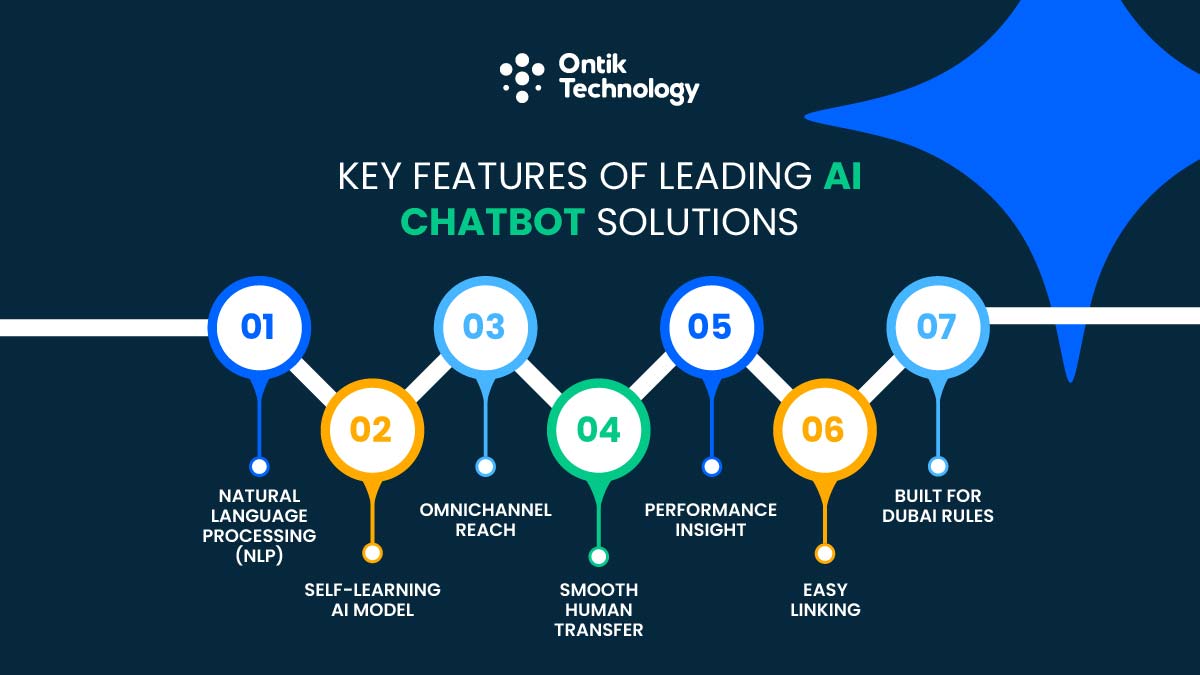
When you look at how Dubai firms pick chat platforms, it’s rarely about design. It’s about what the system does when the phones are busy, and no one’s free to answer. Here’s what separates solid builds from the rest:
- Natural Language Processing (NLP) – The part that lets a chatbot actually read the way people write. It catches tone, intent, even slang. Without it, replies feel mechanical.
- Self-learning AI Model – Every chat becomes a small lesson. The system keeps improving with use. After a few weeks, it starts handling questions that once needed people.
- Omnichannel Reach – One chatbot covers live chat, WhatsApp, and mobile apps together. Customers don’t notice the switch, and that’s the point.
- Smooth Human Transfer – When the bot hits a wall, it hands the thread to a human agent. The customer doesn’t have to repeat a thing.
- Performance Insight – Simple dashboards show chatbot performance and response time. You’ll see what customers ask most and where the lag happens.
- Easy Linking – Good platforms tie into CRMs or billing systems. They pull data in seconds instead of minutes.
- Built for Dubai Rules – Vendors like the leading AI chatbot development firms in UAE build around local data laws and privacy checks.
How to Choose the Right AI Chatbot Development Company in Dubai
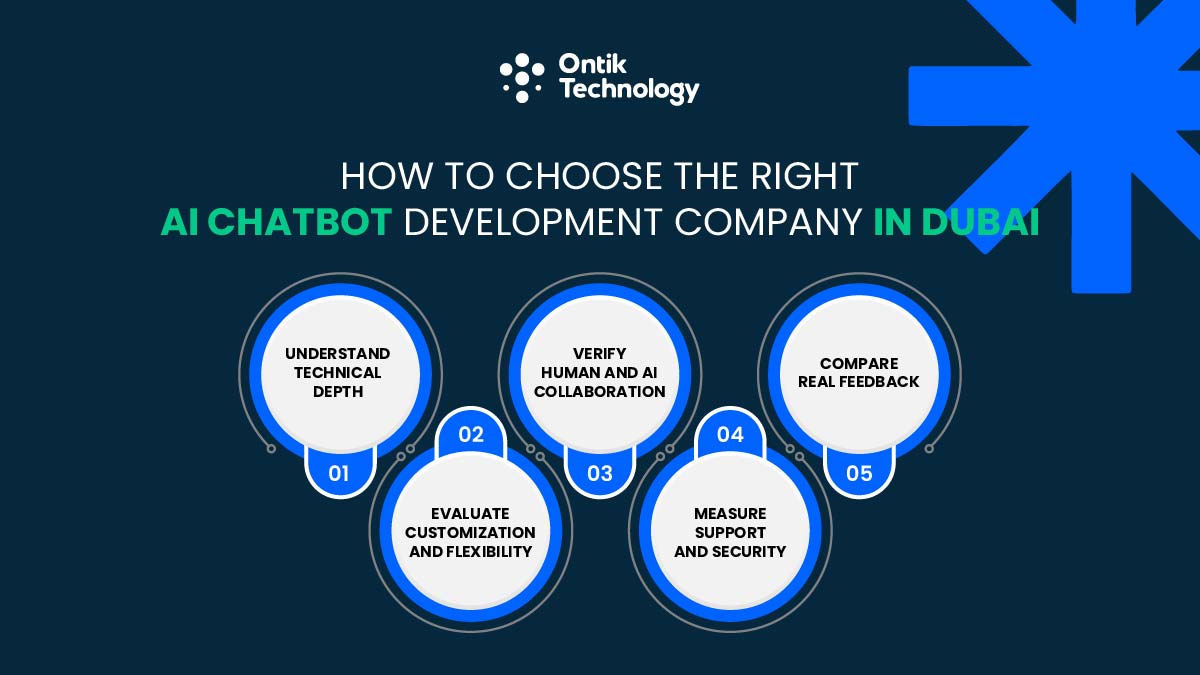
Choosing the right partner for AI chatbot solutions in Dubai isn’t about who has the biggest portfolio. It’s about who understands local business pressure, speed, multilingual service, and strict data rules. The right team helps you move faster without risking quality or compliance.
- Understand Technical Depth
A capable firm doesn’t just install chatbots; it builds scalable systems. Look for solid experience in chatbot development and back-end integration. Companies like the AI chatbot development company in Dubai, UAE with proven case studies across finance and logistics usually deliver cleaner builds and fewer post-launch issues.
- Evaluate Customization and Flexibility
Each business runs differently. A good provider adjusts tone, workflow, and platform design. Check if they can align with your CRM and internal apps to maintain real-time customer engagement.
- Verify Human and AI Collaboration
Even the best system needs balance. The chatbot should know when to hand control to a human agent or AI agent for advanced support. This handover keeps service smooth without frustrating users.
- Measure Support and Security
Reliable vendors stay involved after launch. They monitor chatbot performance, push updates when patterns change, and keep communication open. A leading AI chatbot solution provider in Dubai, UAE will also meet Dubai’s data-protection rules, offering quick response if problems appear instead of passing you between departments.
- Compare Real Feedback
Talk to existing clients. Performance metrics, not promises, reveal how well the vendor handles live environments.
The Future of AI Chatbot Solutions in Dubai and UAE
Automation in Dubai has moved fast. What started as small pilots is now part of daily business. You’ll find AI chatbots in banks, hospitals, and shipping firms quietly handling thousands of messages every day. The next few years will only push that further.
- Arabic and English Together – Local firms are demanding bilingual bots. Most AI development companies in Dubai, UAE now build language models tuned for both markets.
- Generative AI Takes the Stage – Tools powered by Generative AI services UAE will write smoother replies, learn tone from real chats, and adjust instantly when rules change.
- Deeper System Links – Chatbots are starting to work directly inside CRMs and ERPs, creating records or orders without staff input.
- Human and Machine Side by Side – Teams will mix automation with real support staff. The aim isn’t to replace people but to build faster, more personal AI-powered customer service.
- Wider Sector Adoption – Finance, logistics, and health groups already rely on artificial intelligence chatbots Dubai UAE for compliance checks, bookings, and updates.
Why Ontik Technology Stands Out
Ontik Technology isn’t loud about what it does, but people in the Dubai tech circle know the name. Since 2016, it has earned that reputation slowly, through steady work and honest results. Here’s what really keeps clients coming back:
1. A Clean Track Record
Projects get finished. Deadlines are met. You don’t hear stories about half-done builds or missed handovers. That alone makes Ontik different in a market that moves fast.
2. Real Transparency
Clients see every stage from scope to launch. Ontik keeps updates simple and honest, so teams always know what’s working and what needs fixing.
3. Ratings That Match Reality
Performance ratings hover near 4.8 out of 5. Communication scores are even higher. Those numbers aren’t marketing; they’re pulled straight from verified client feedback.
4. Support That Doesn’t End
Known as a trusted AI partner in UAE, Ontik checks in long after delivery. They monitor uptime, fine-tune chatbots, and roll updates quietly before issues turn into problems.
5. Practical Over Hype
No flashy promises. Just solid tools built to save time and improve efficiency. What clients notice most is consistency; projects that run, scale, and keep running.
Conclusion
Over the past few years, automation in Dubai has quietly shifted from experiments to infrastructure. Most firms now treat AI chatbot solutions as essential systems, not optional tools. The firms featured here have proven that performance depends on design depth, stable APIs, clean data pipelines, and chat models trained on region-specific intent libraries.
Their systems deliver measurable uptime, low-latency replies, and SLA-compliant accuracy that traditional support desks can’t match. Each vendor blends conversational engineering with backend integration, ensuring every interaction feeds real metrics into CRM and analytics stacks.
The standout quality across these providers isn’t marketing polish; it’s engineering discipline. They build frameworks that scale, learn, and sustain under pressure. For organizations seeking enterprise-grade reliability and intelligent automation, this list marks the most credible path to finding the best chatbot developers working in Dubai today.
